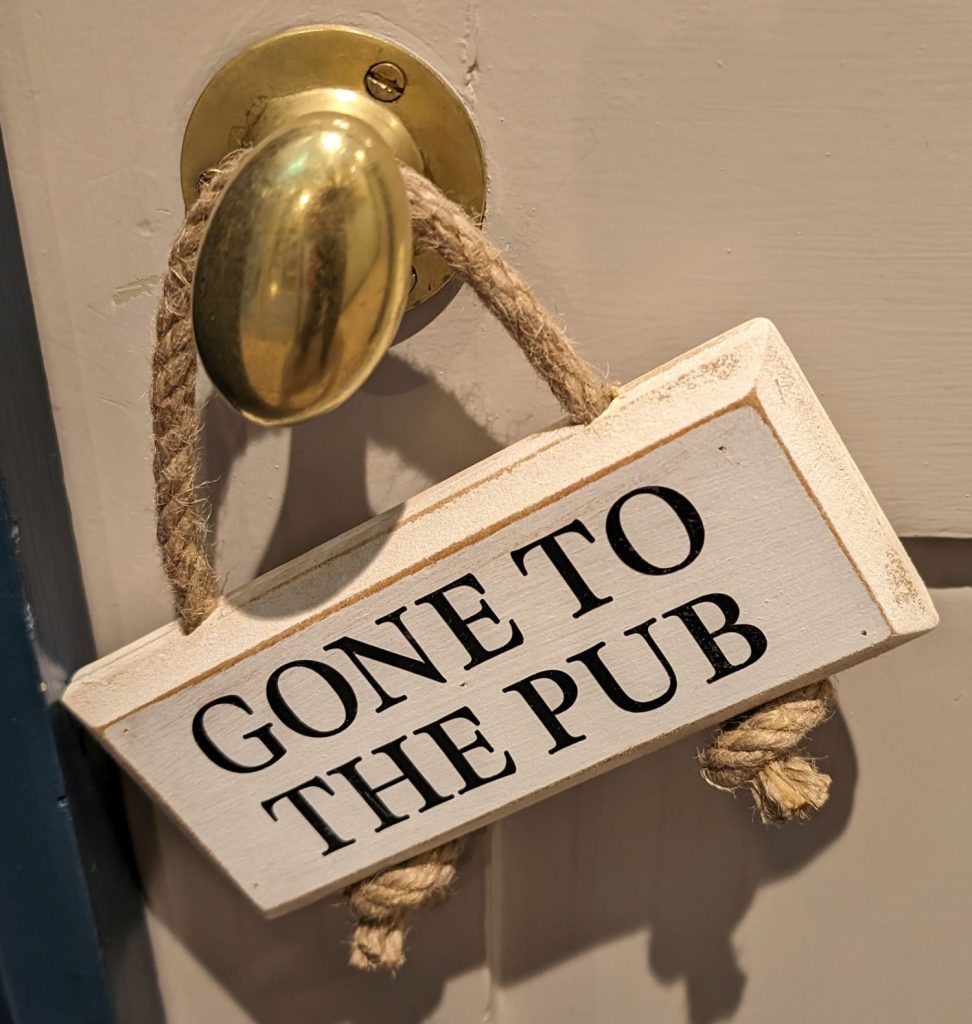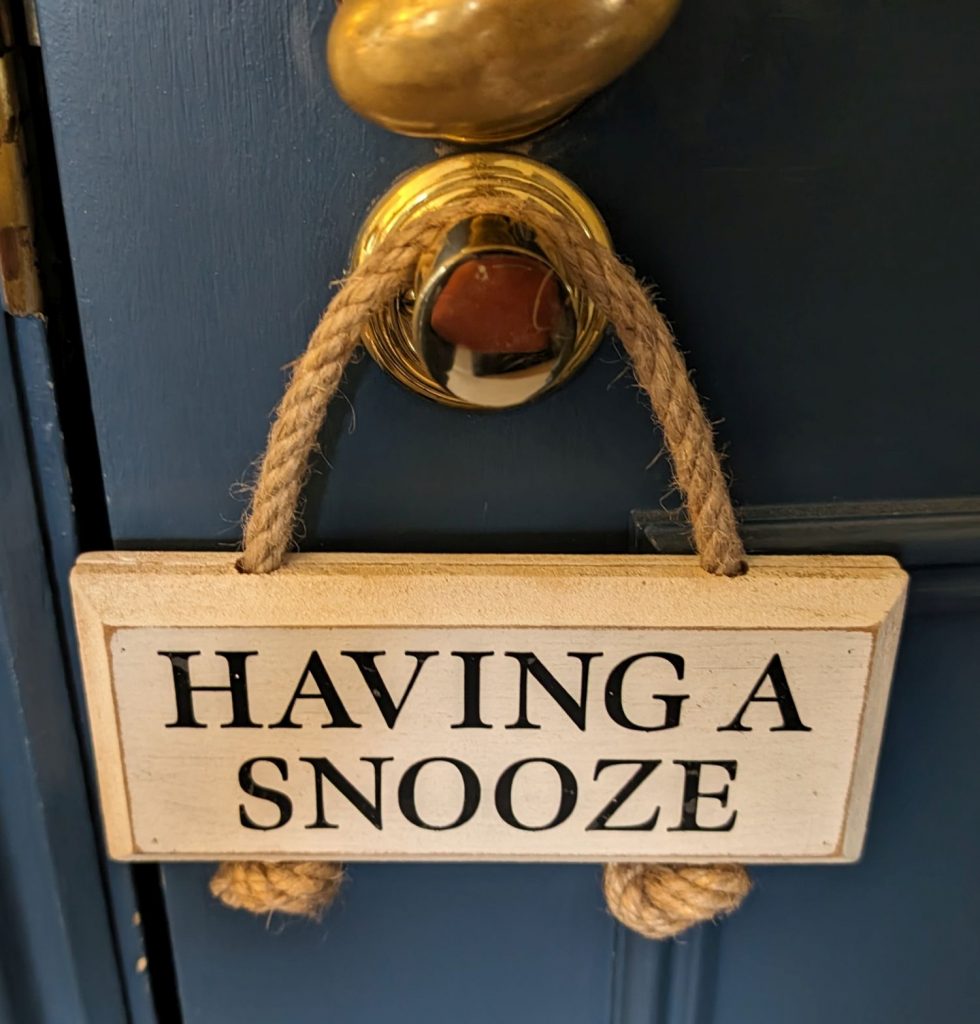We spent the next three days visiting several towns in the Cotswolds. I have personal favorites, and those might just be the ones with the most pictures in this post. 😉 By the way, this is primarily a pictorial post.
I spent a fair amount of time reading about various villages to decide which ones to visit. I ended up being happy with the choices, although we skipped two due to timing (spending more time in the previous town, which was just fine!) and arrived in one too late because everything was closed.
We visited Castle Combe, Bibury, and Burford on the first day.
Castle Combe is one of the most photographed places in the Cotswolds. There have been no new buildings built in Castle Combe since the 17th century in a bid to keep its idyllic appearance. Notable TV and film productions have taken place in this village, including Downton Abbey, Stardust, Wolf Man, War Horse, and Doctor Doolittle. Honey-colored cottages surround a 14th Century market square and its church of St Andrews hosts a faceless clock – possibly the oldest clock in England.
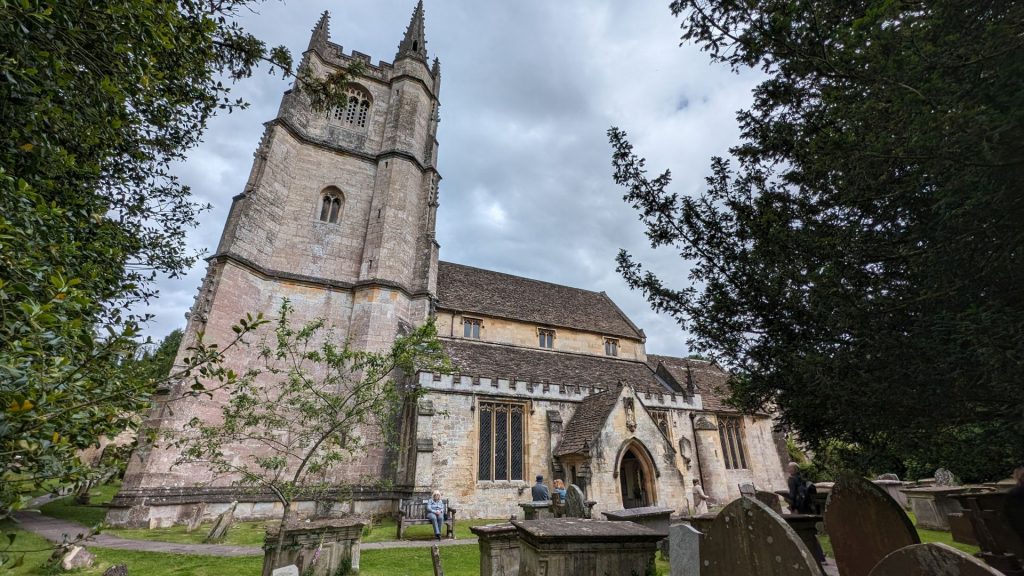
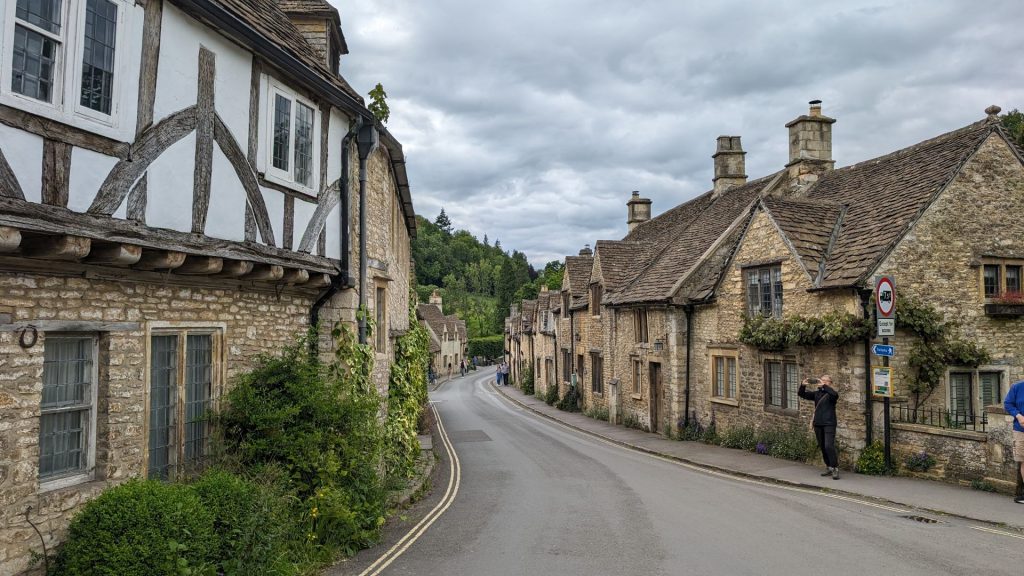
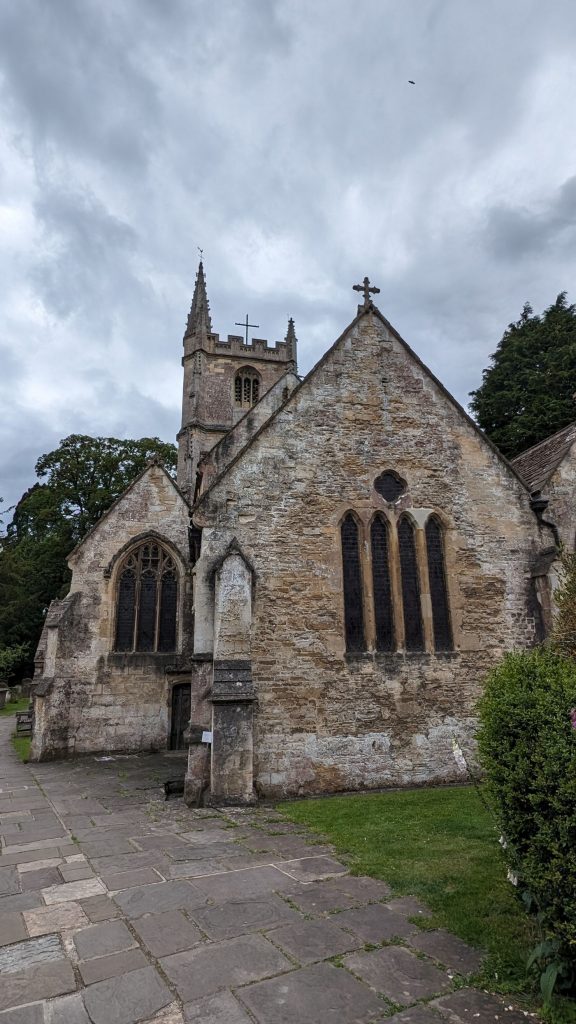
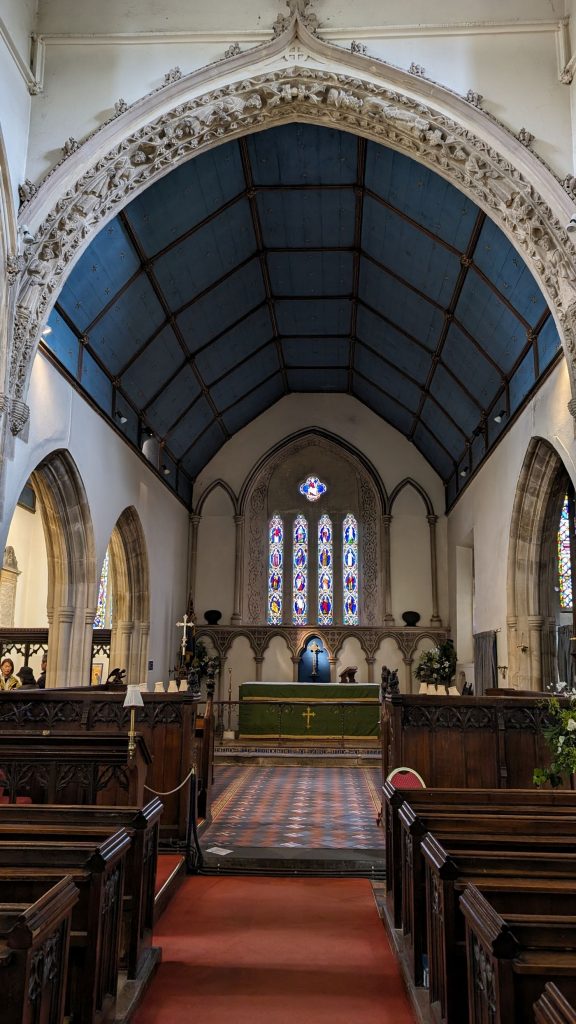
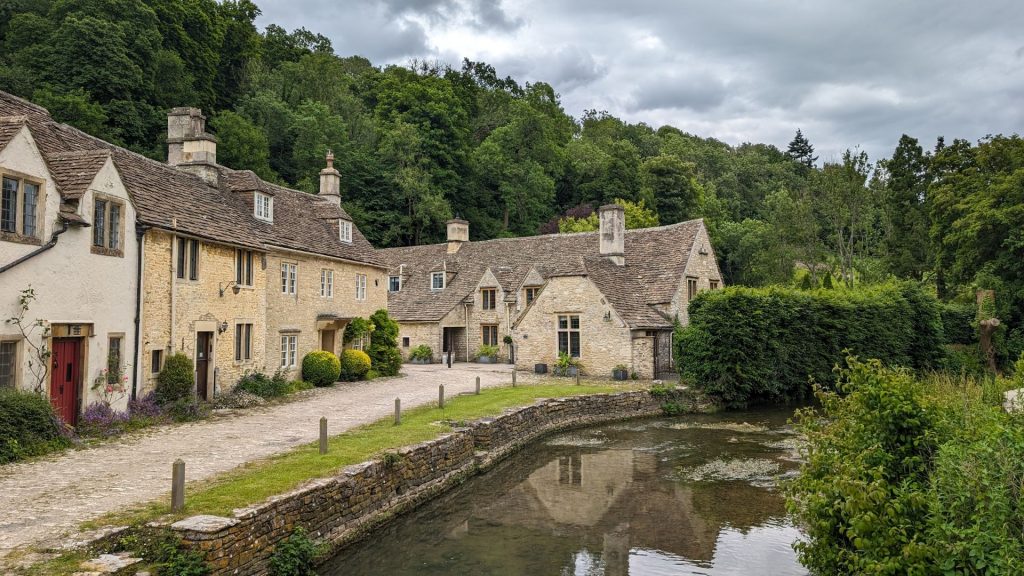
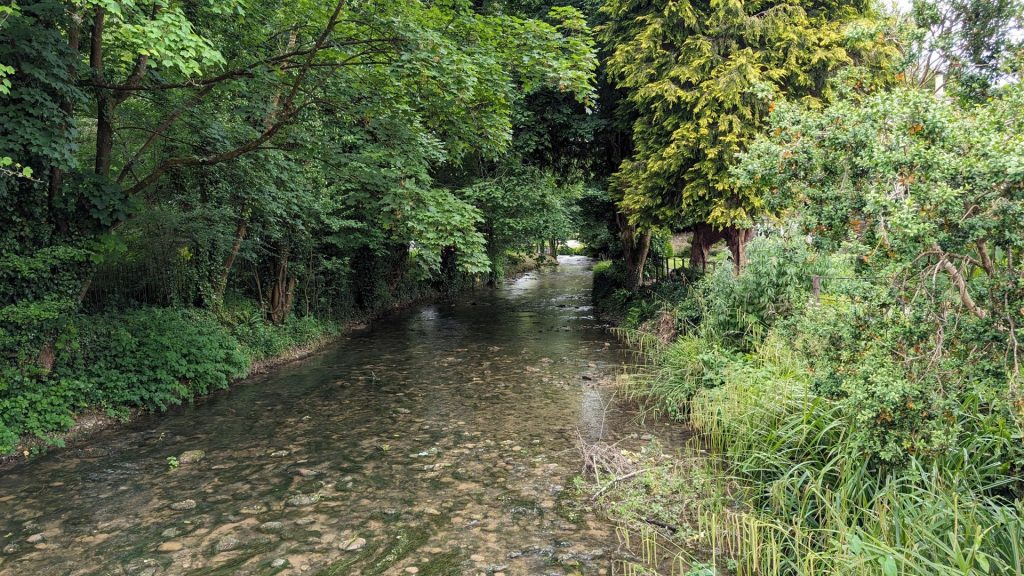
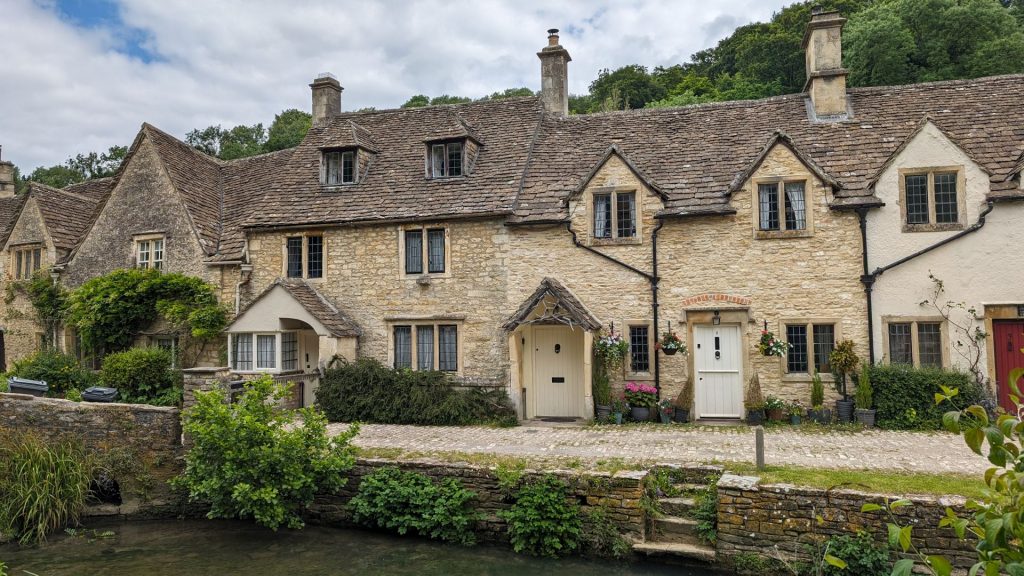
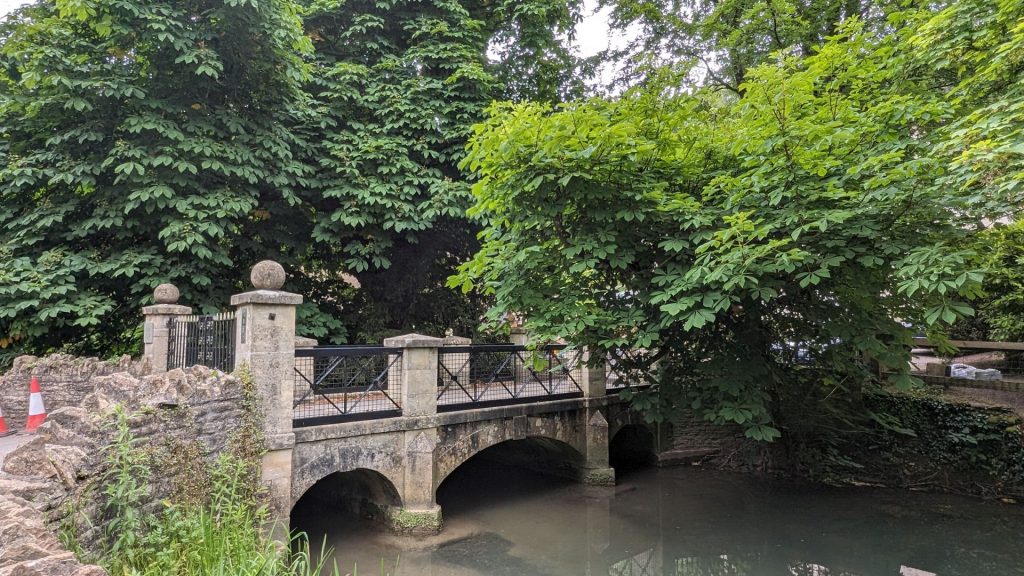
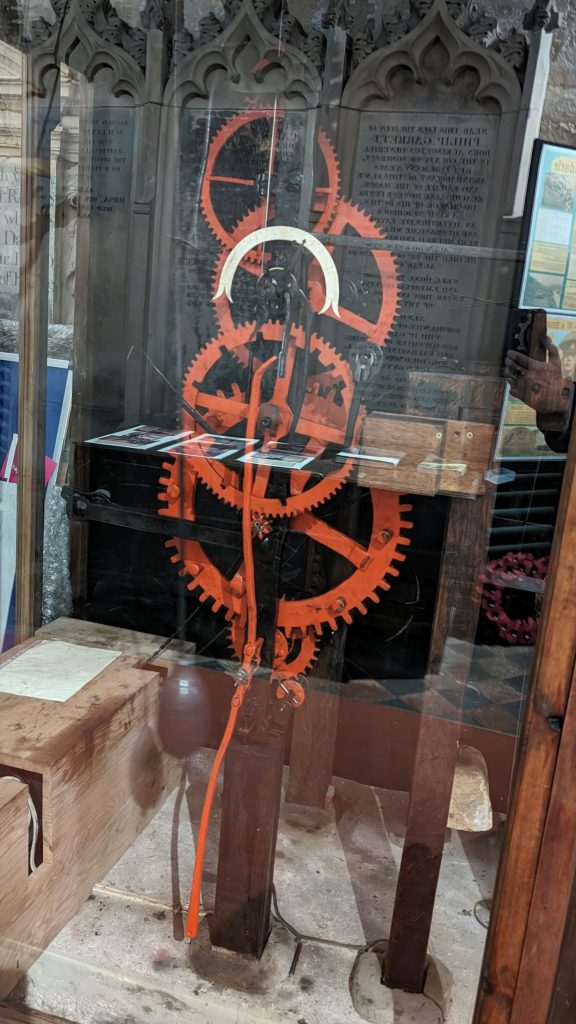
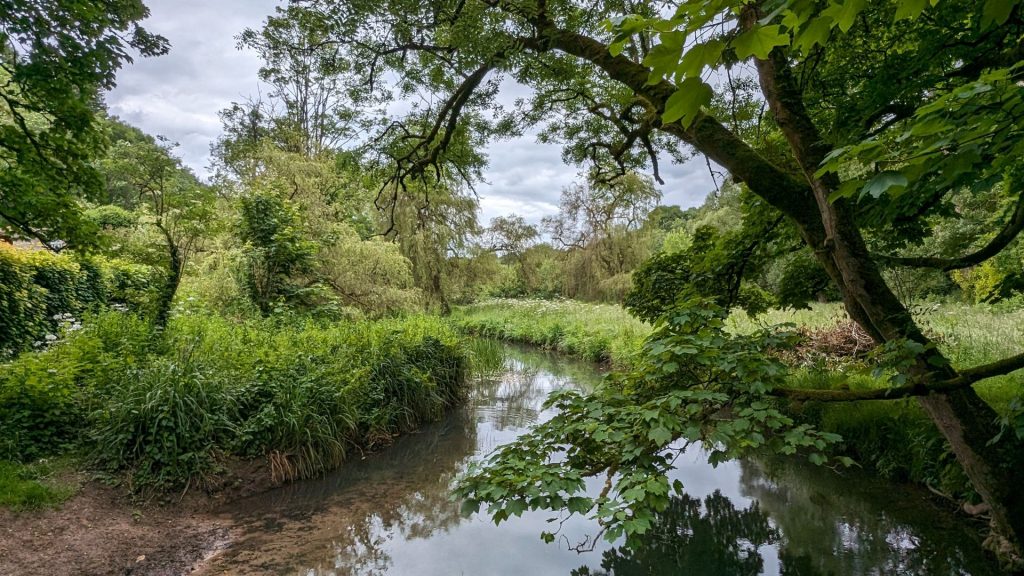
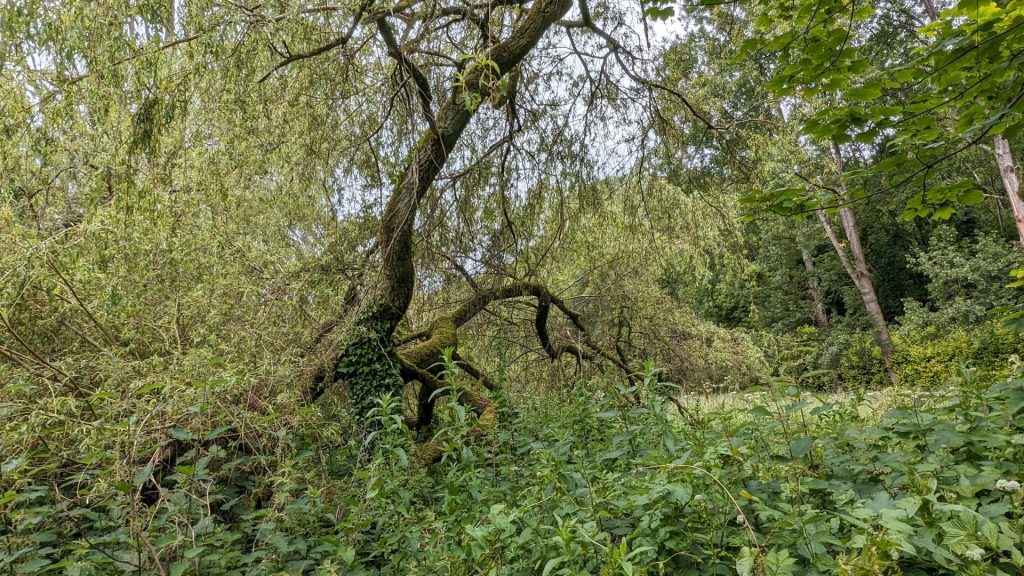
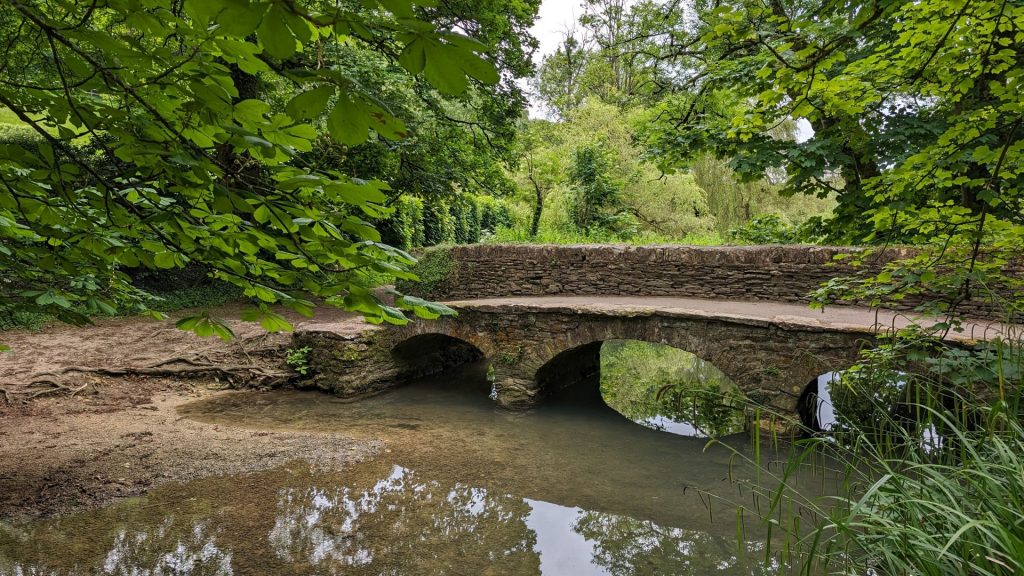
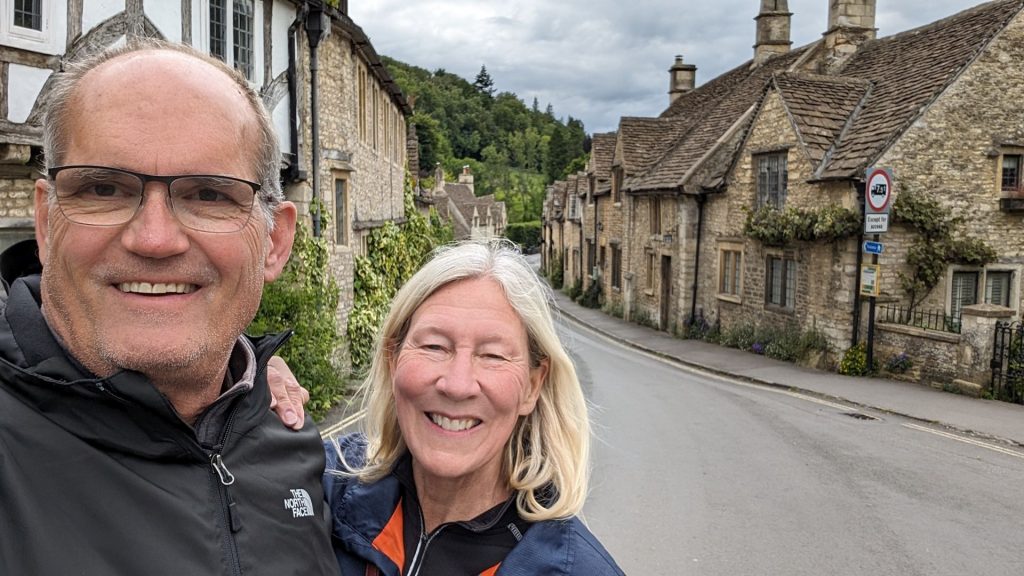
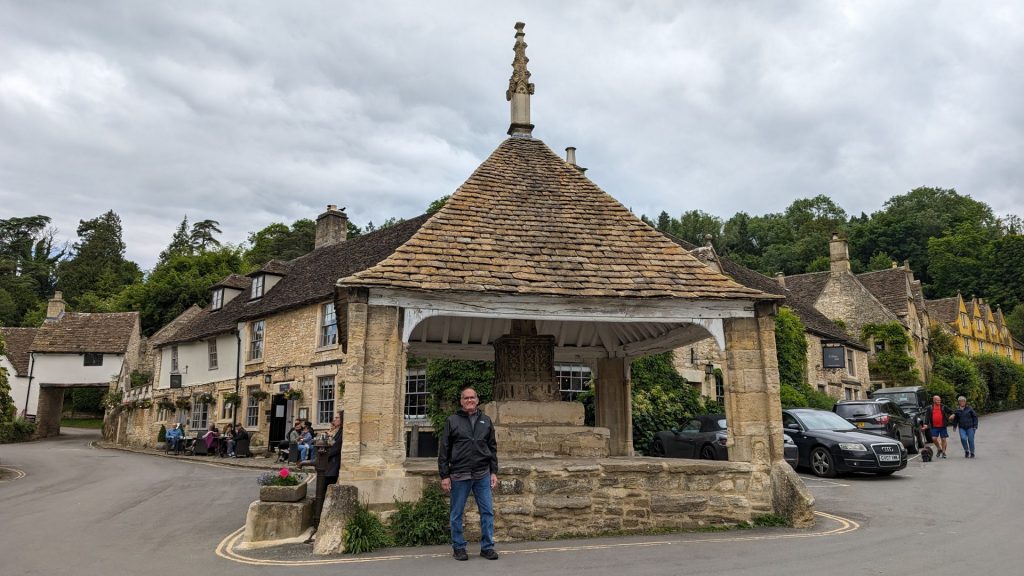
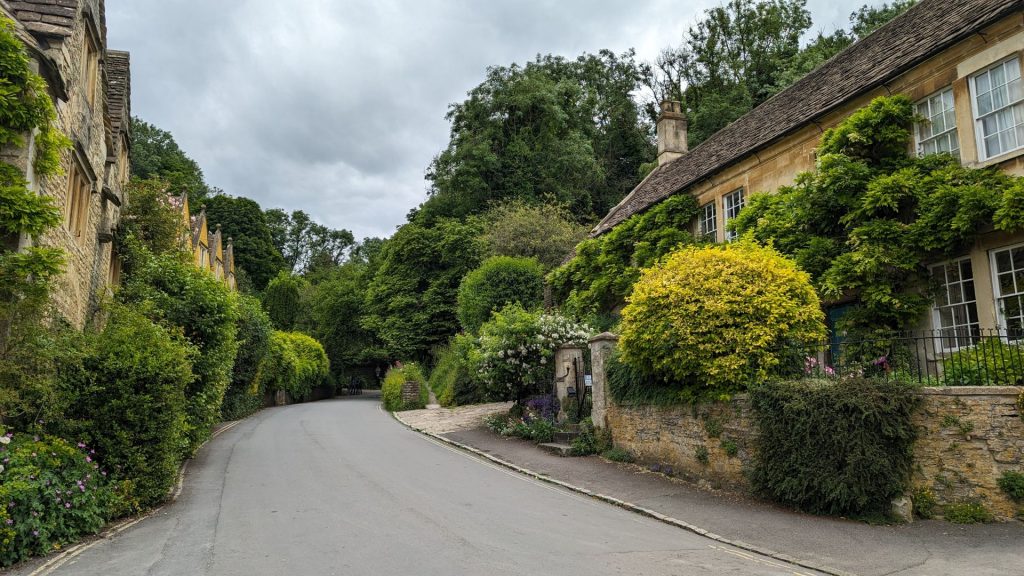
Bibury – pronounced buy-burry – is located on the River Coln. It is home to the cottages of Arlington Row. Originally built in 1380, they are often referred to as the most photographed and beautiful cottages in the country. Built originally as monastic wool storage, the buildings were converted into homes for local weavers in the 17th Century and, to this day, exude all the charm you’d expect to find in a children’s book.
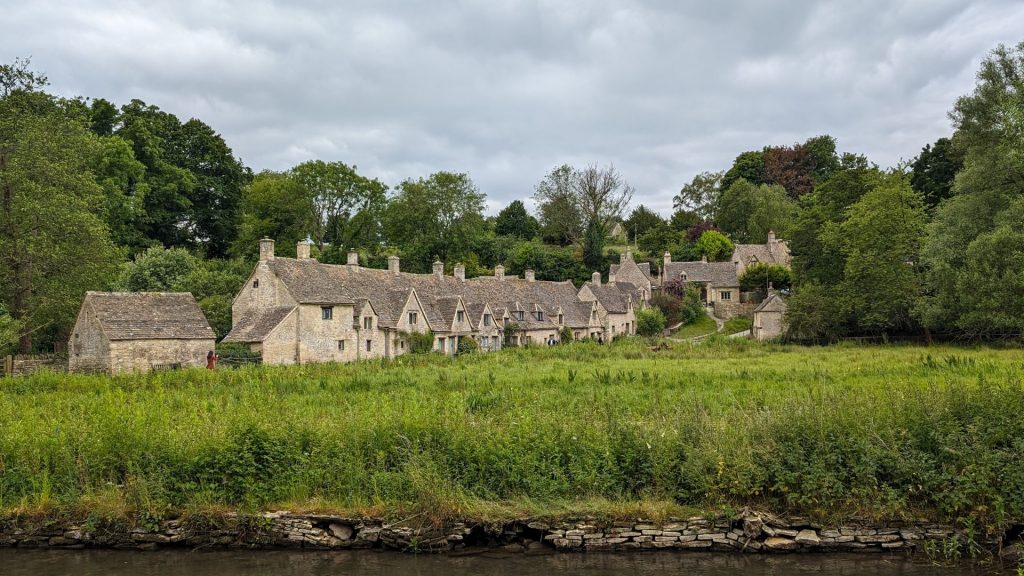
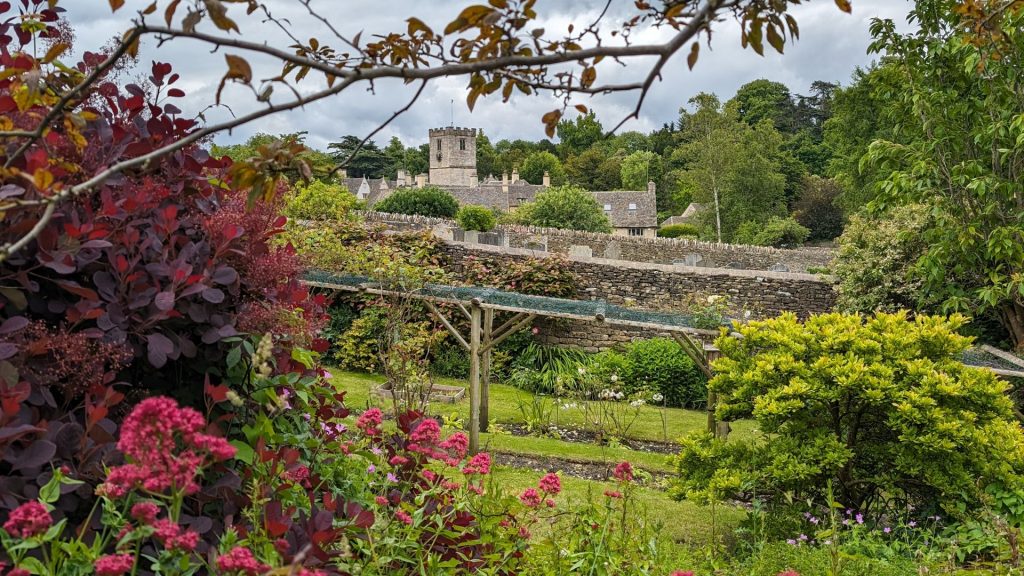
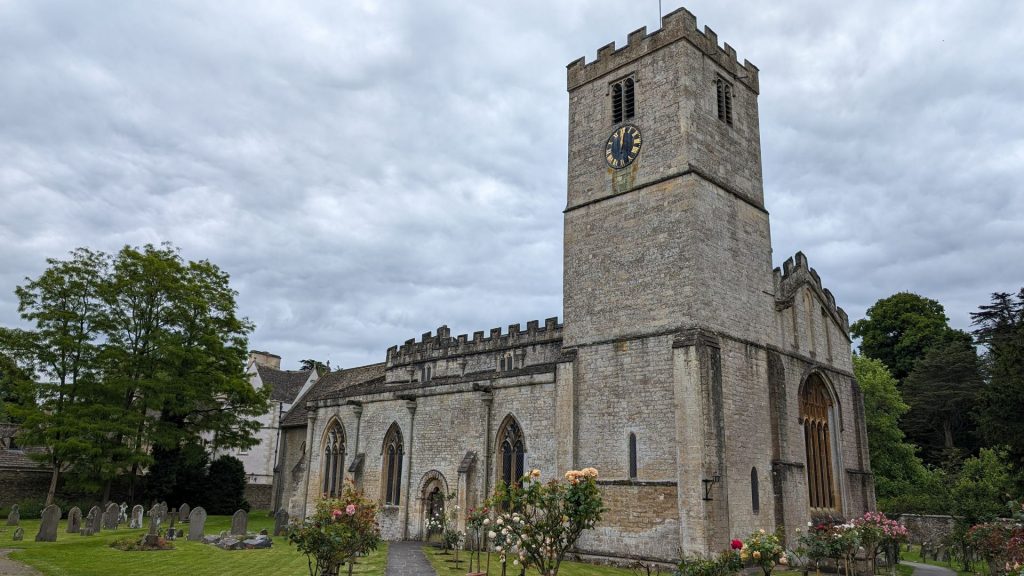
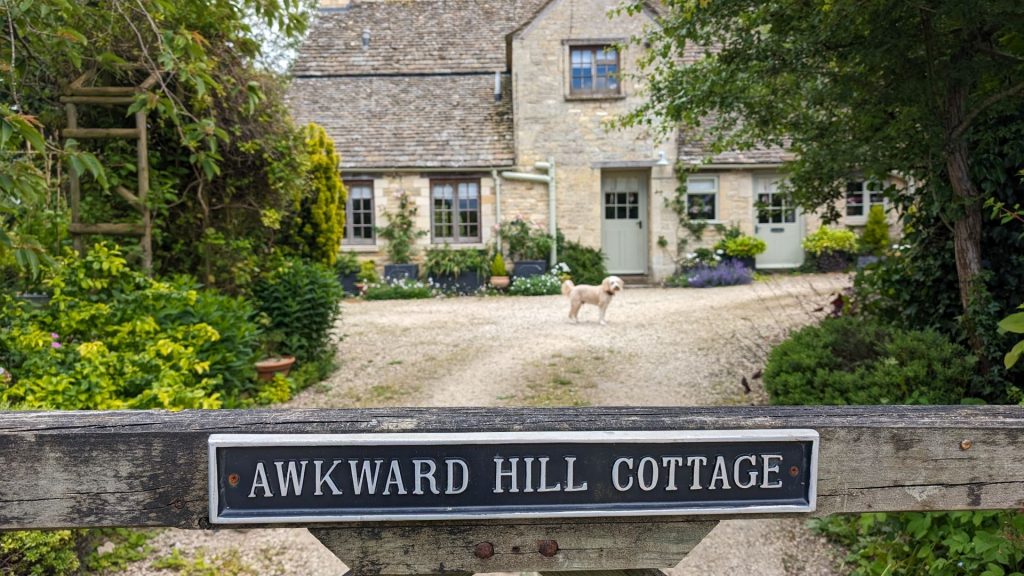
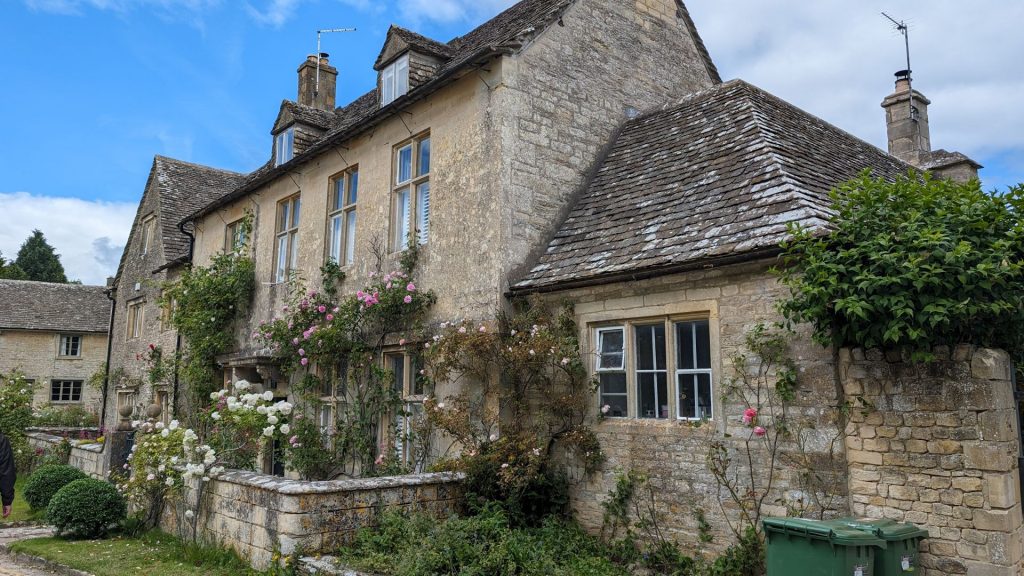
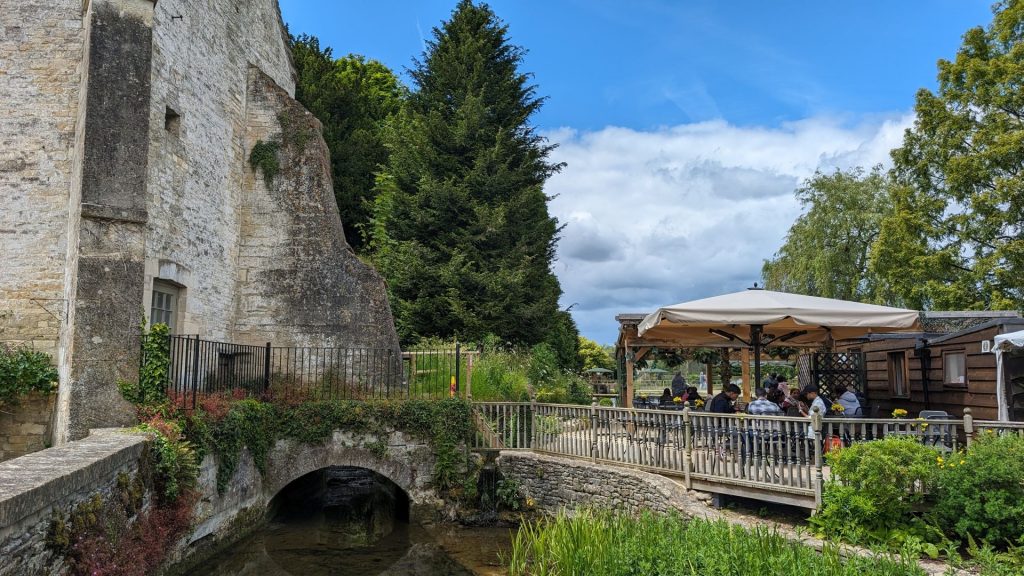
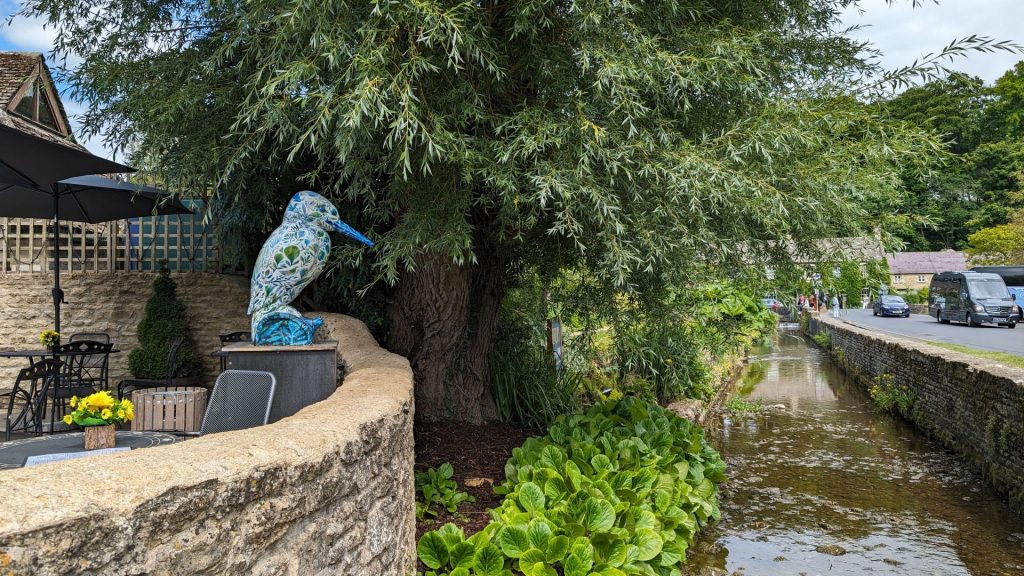
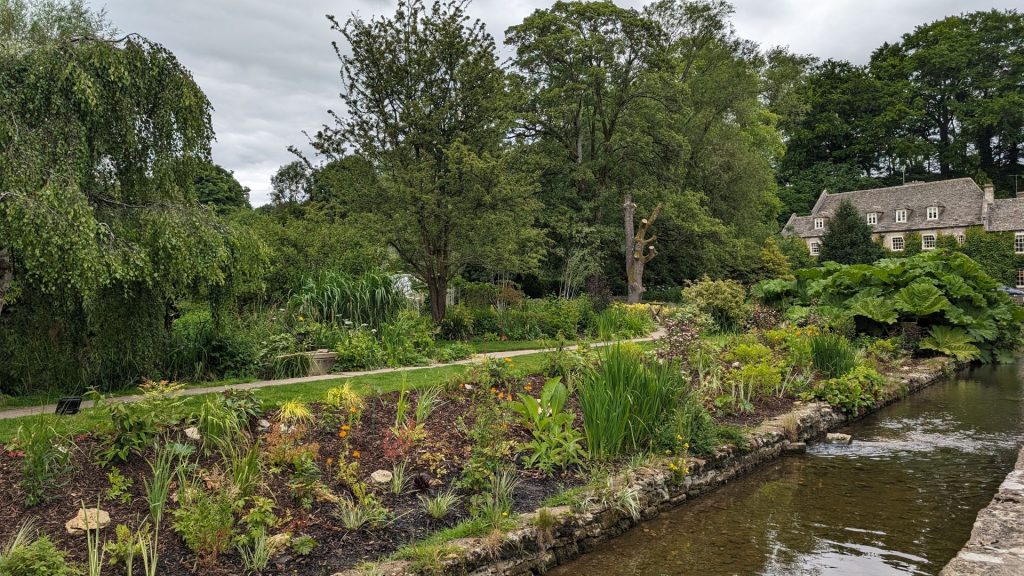
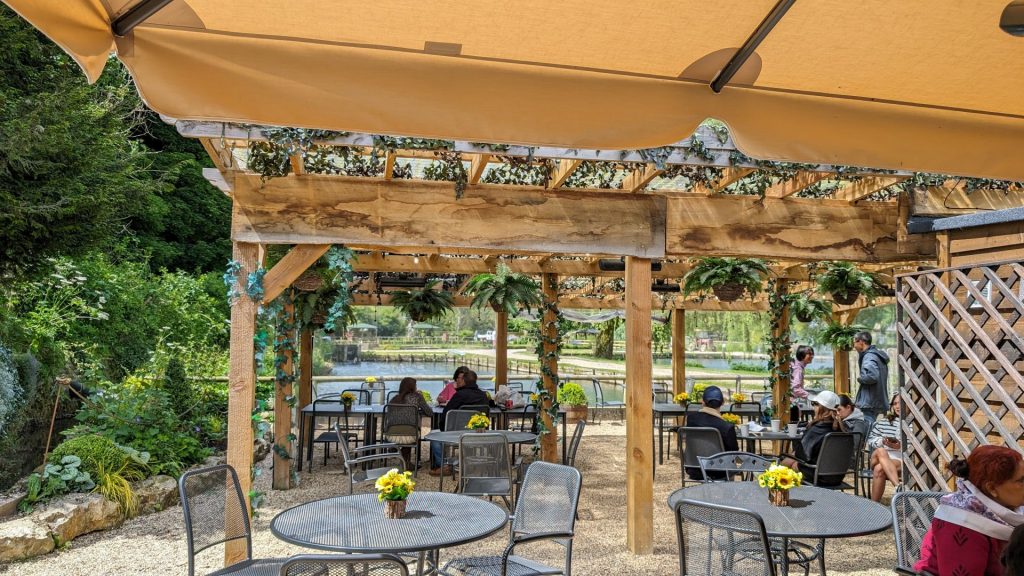
Burford is filled with charming antiques shops, boutiques, cafes and thatched-roof cottages and a 12th century church. The high street is perched on a hill, overlooking the rather magnificent church of St John the Baptist at the bottom. The church was built in the 1100s, although took another 400 years to reach completion. Its highlight: the beautiful 13th Century Lady Chapel and its stained-glass windows. Burford has the reputation of having the biggest concentration of pubs in the country. Our visit here was quite short as we’d spent quite a bit of time in the two previous towns.
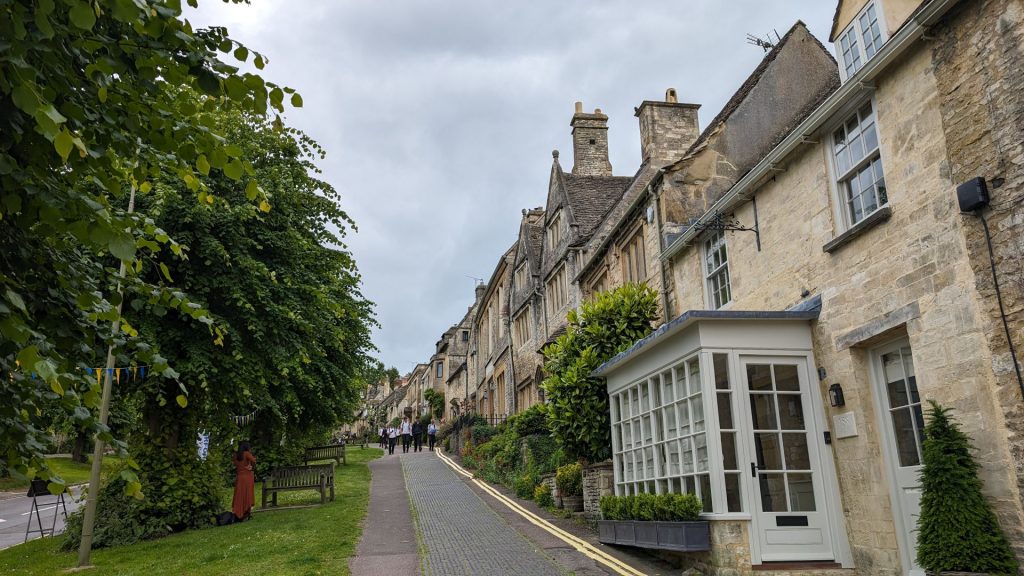
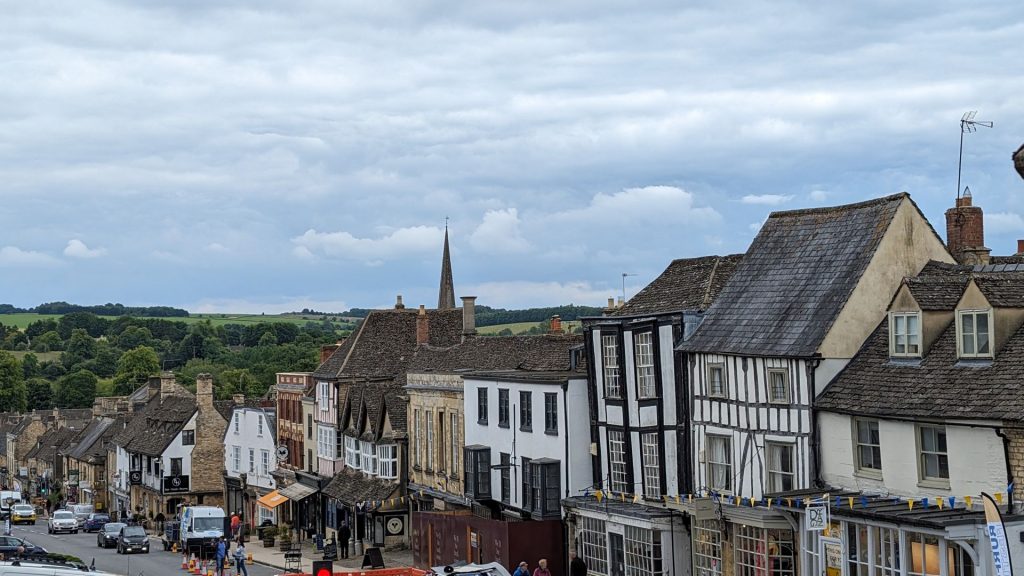
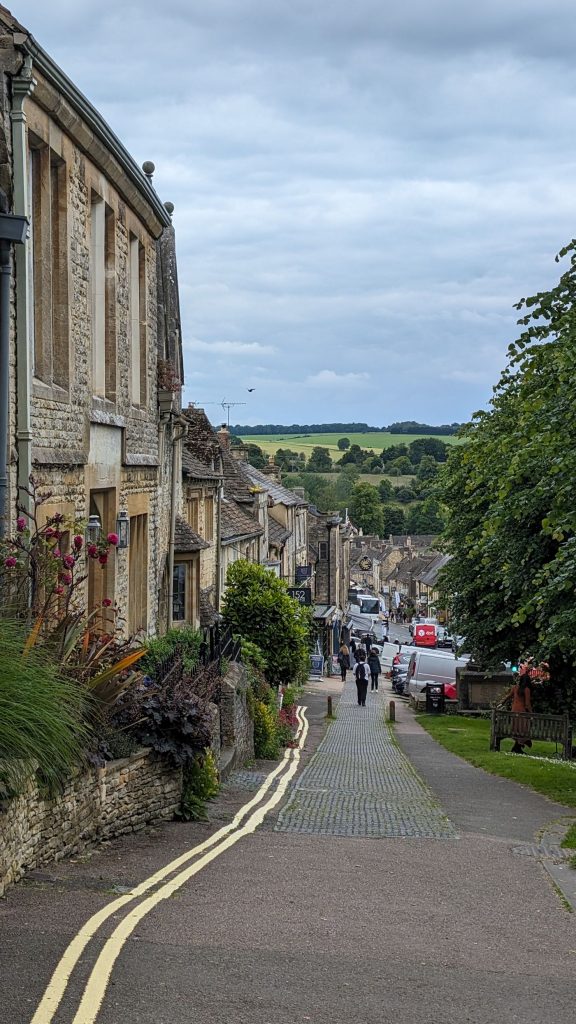
We visited Bourton-on-the-Water the next day and ended up spending most of the day there. It is one of the smaller Cotswold villages and is centered around a shallow stretch of the River Windrush. Many little bridges cross through the middle, which give this village the nickname ‘The Venice of the Cotswolds.’ On either side of the stream, traditional cottages line the street which house many gift shops, antiques shops, bakeries, cafés and pubs. There is a miniature model village, it’s a one-ninth scale replica of Bourton itself. It is also home to the Motoring Museum.
I am glad that I’d read about the Motoring Museum because I love old cars, bikes, etc. We took tons of pictures and are sharing some favorites with you. The town itself is charming and lovely. It is a wonderful place to visit! One of my personal favorites to be sure.
We started with a full breakfast. Mine is pictured on the left-hand side below. Those white things are poached eggs. It looks like they are placed in some kind of a bag. Michael had a full English breakfast.
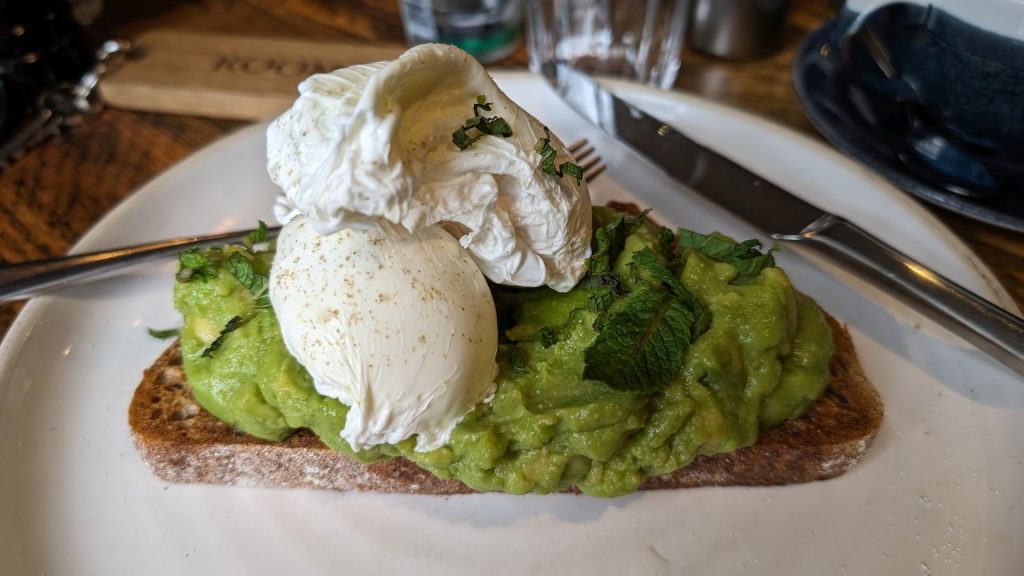
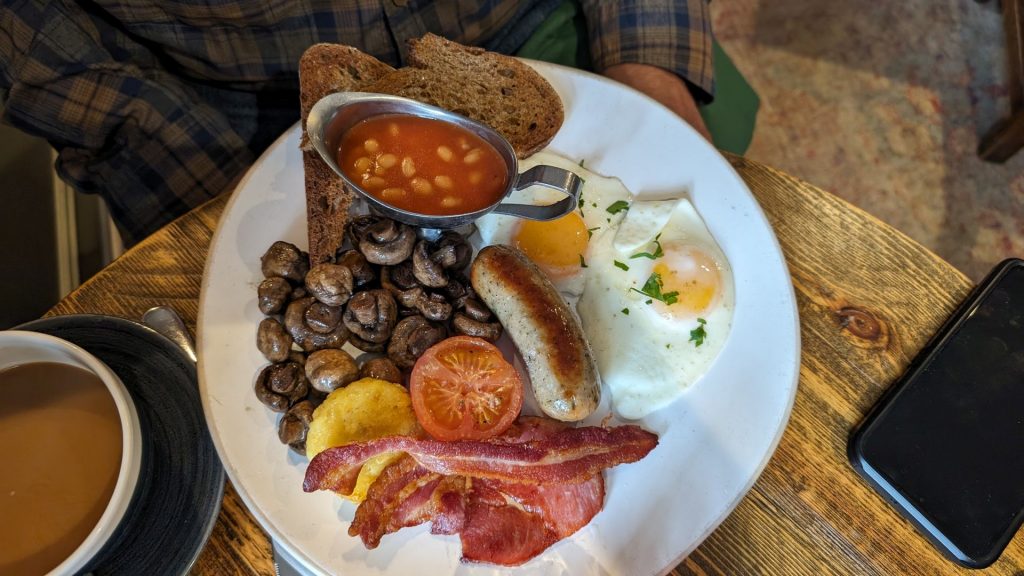
Here are a couple of pictures of the hotel’s beautiful and big patio out back. Speaking of the hotel, we stayed at The Wheatsheaf Inn, about five miles SW of Lower Slaughter and used it as our home base for visiting the villages. We recommend it!
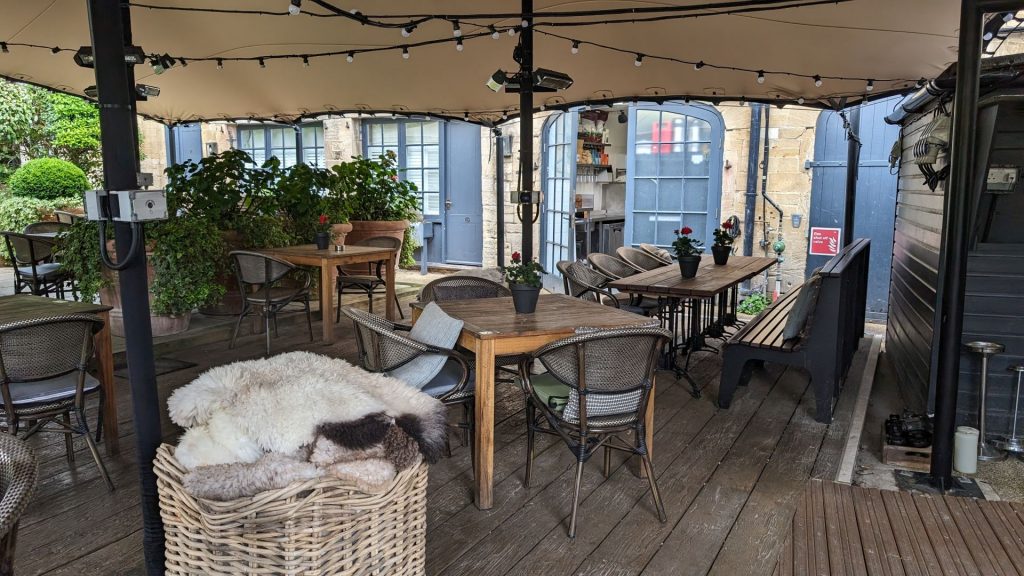
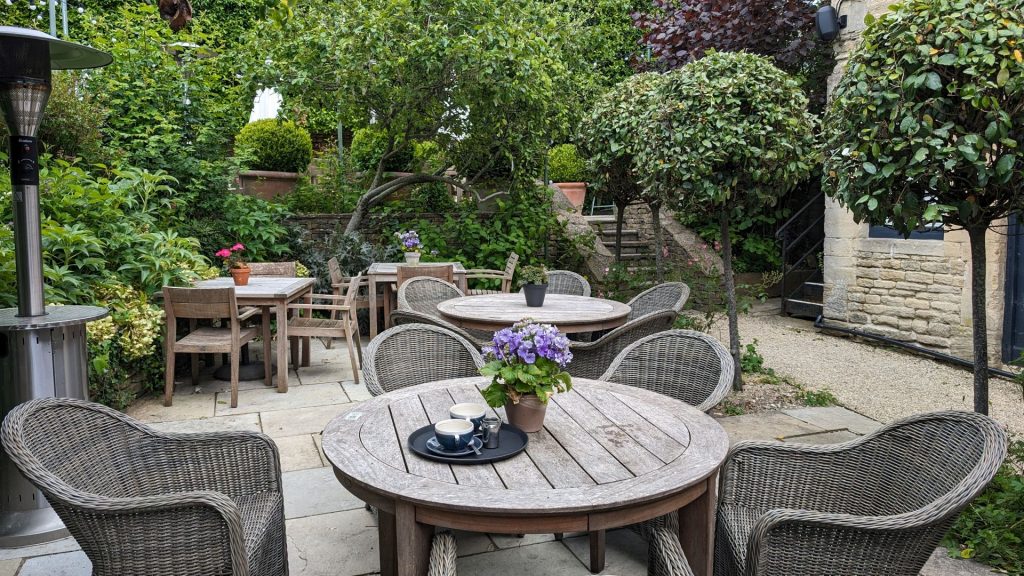
And now, Bourton-on-the-water.
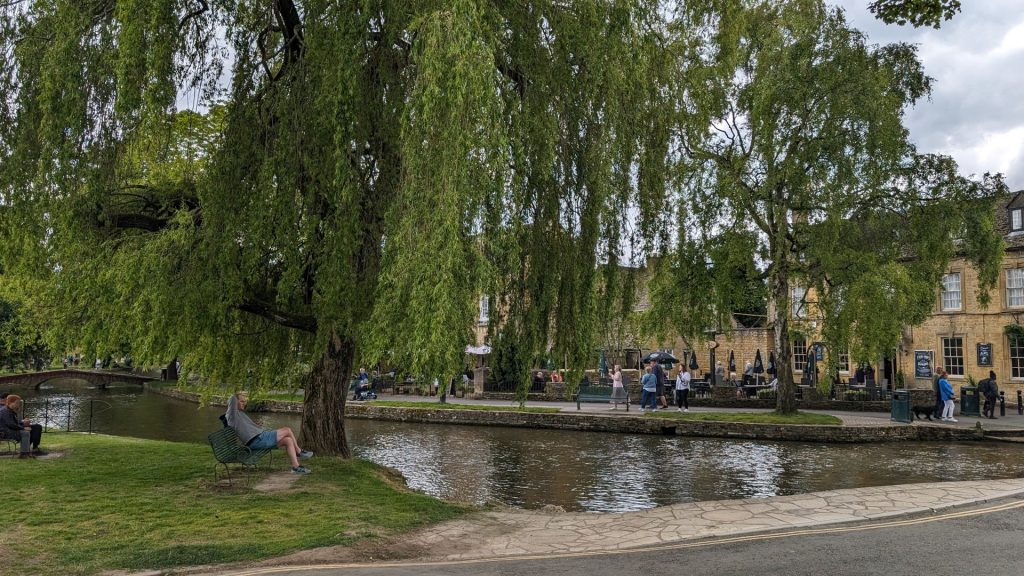
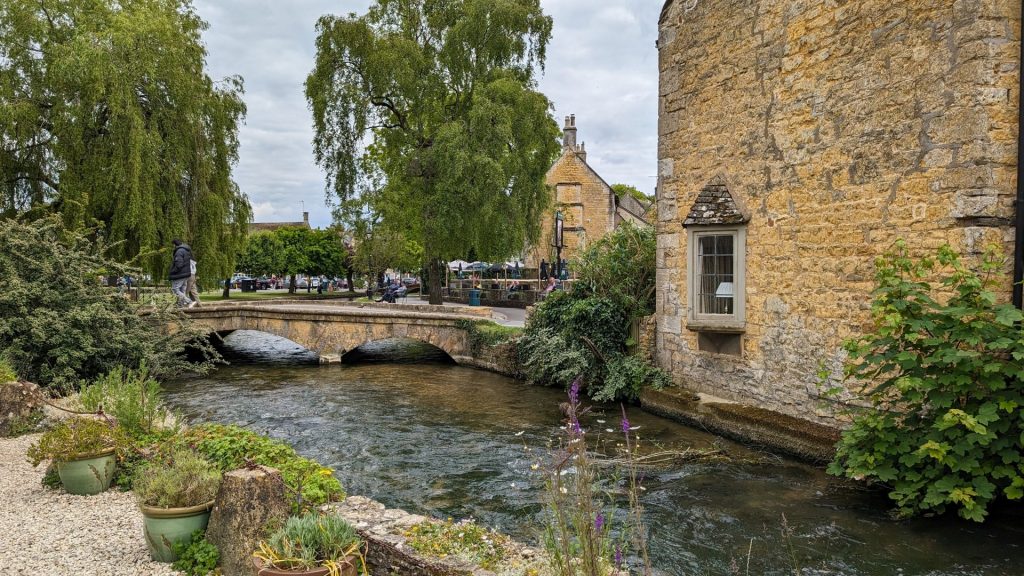
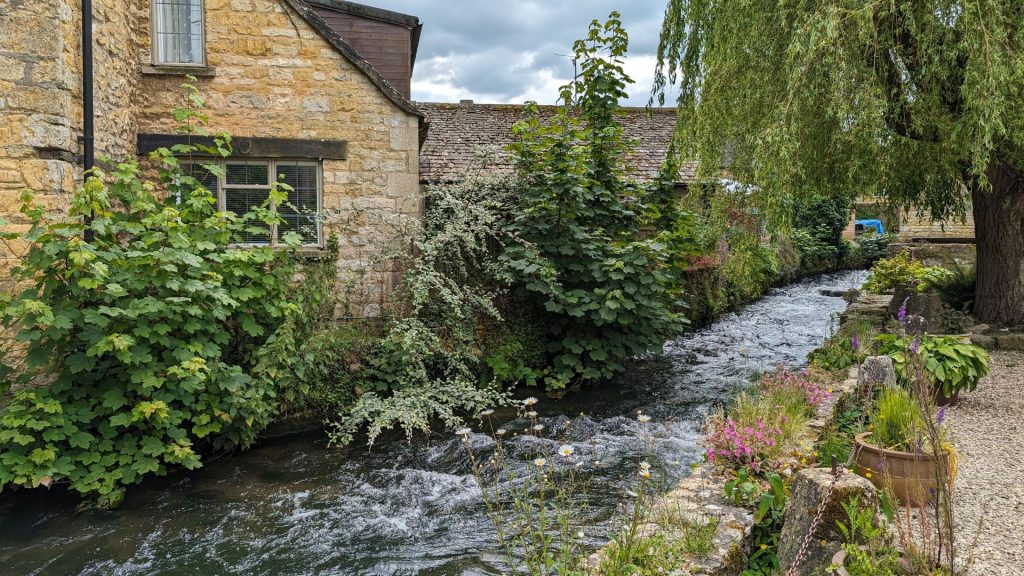
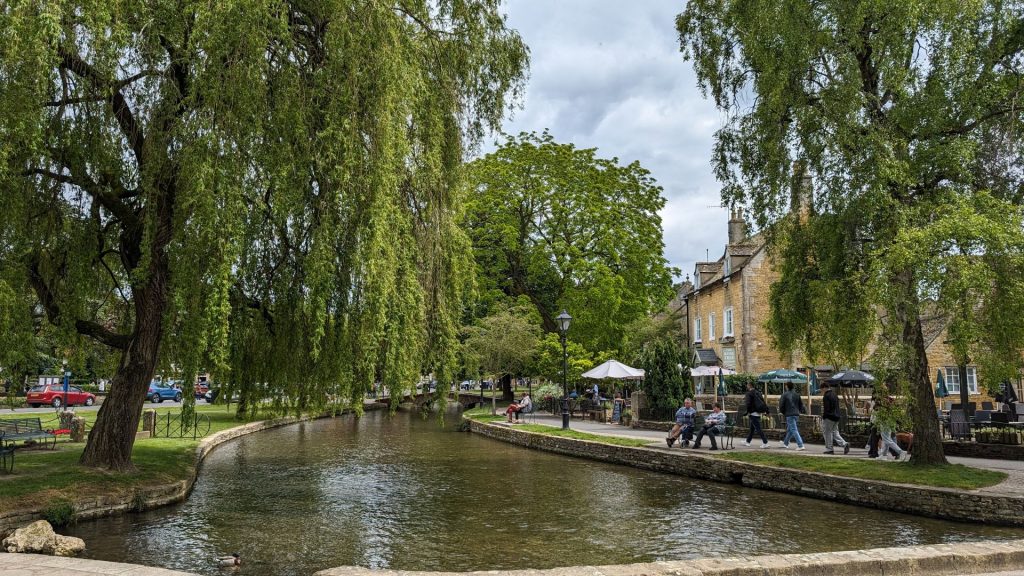
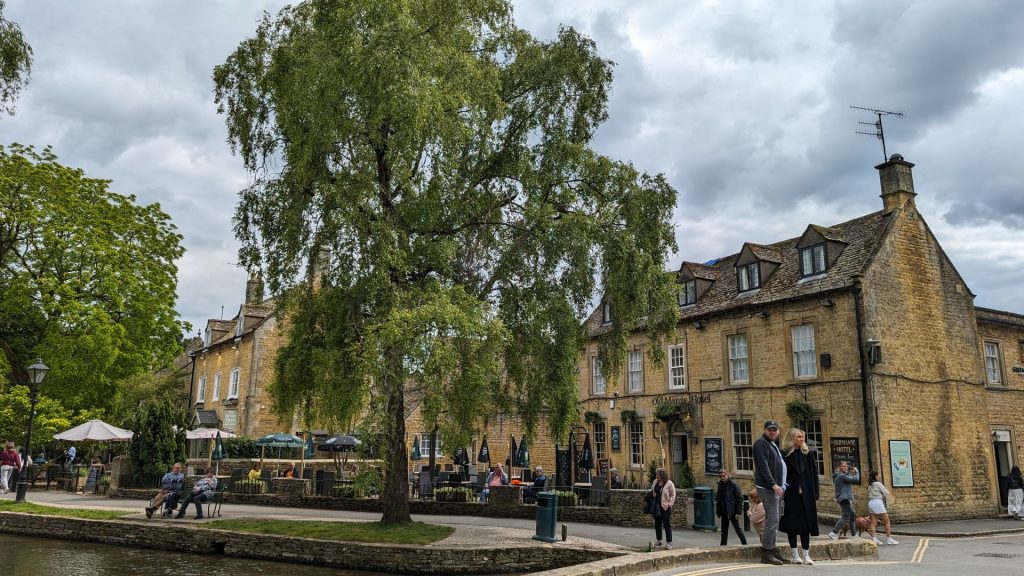
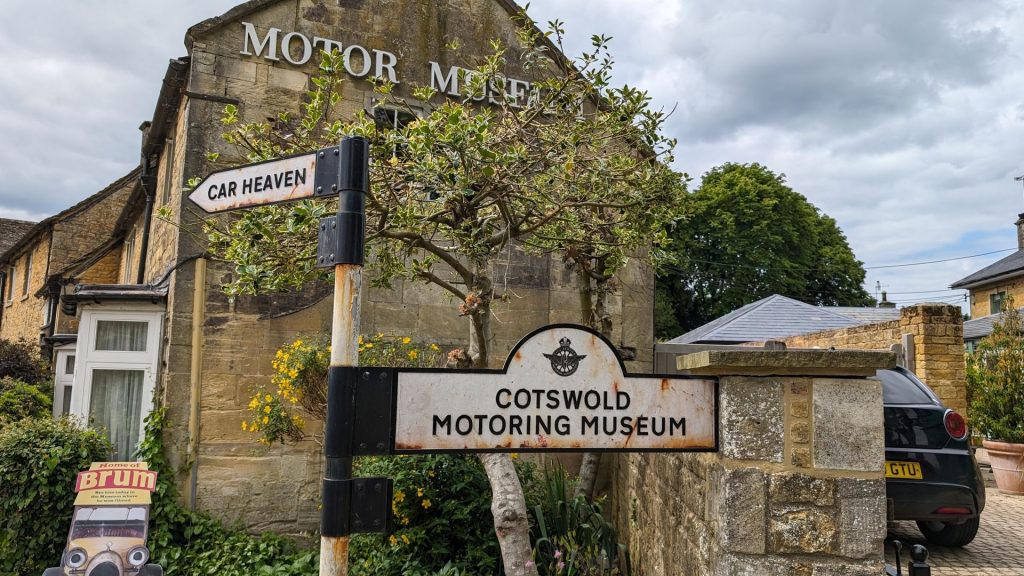
Time for the Motoring Museum! If you aren’t a huge fan of older cars, motorcycles, bicycles, gas pumps, paraphernalia, and such, you can fast forward through the pictures. For my mom, who lived to be nearly 102, this might have been a walk down memory lane. Personally, I thought it was an amazing museum! (You might pick up on that from the number of pictures.)
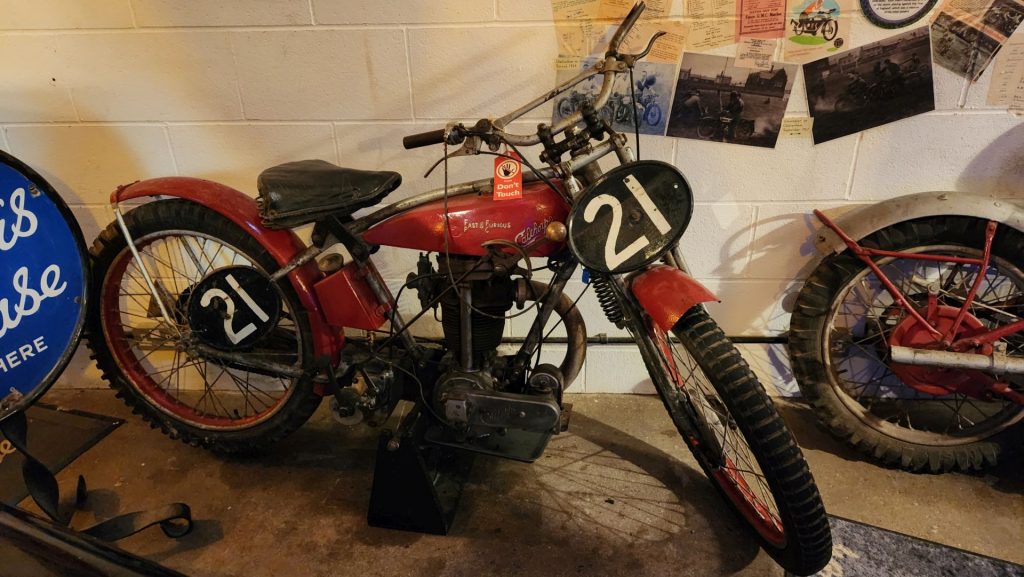
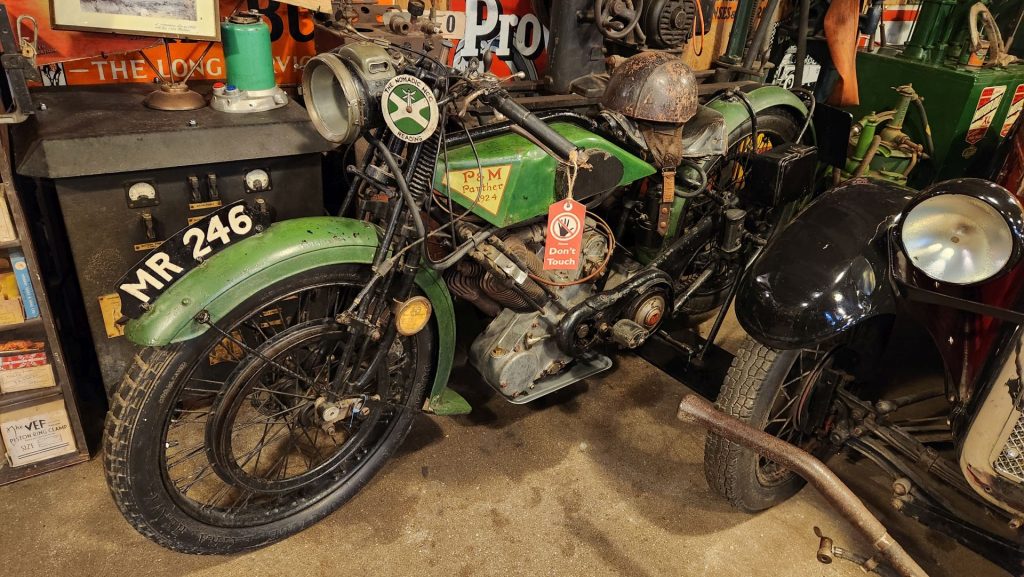
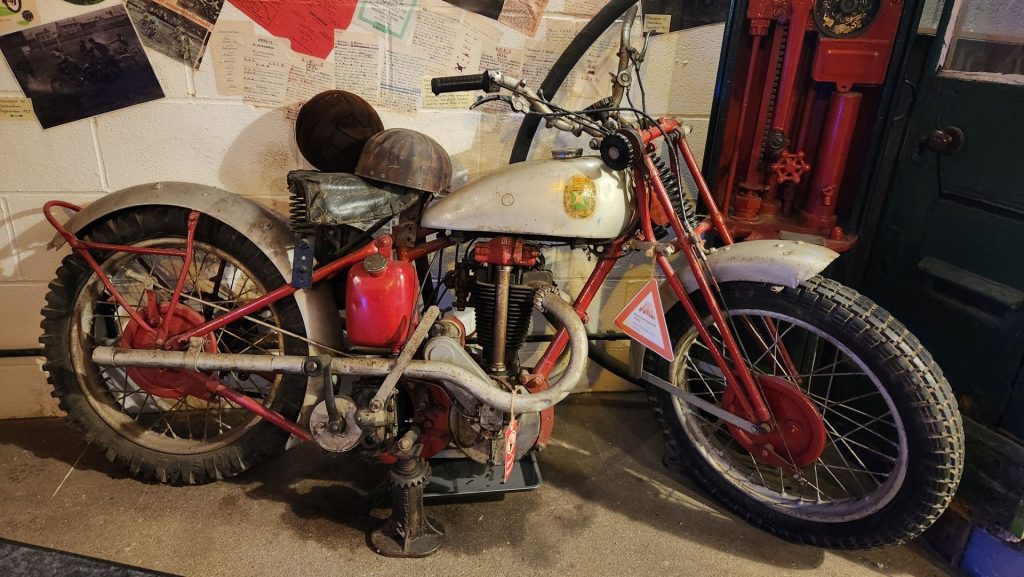
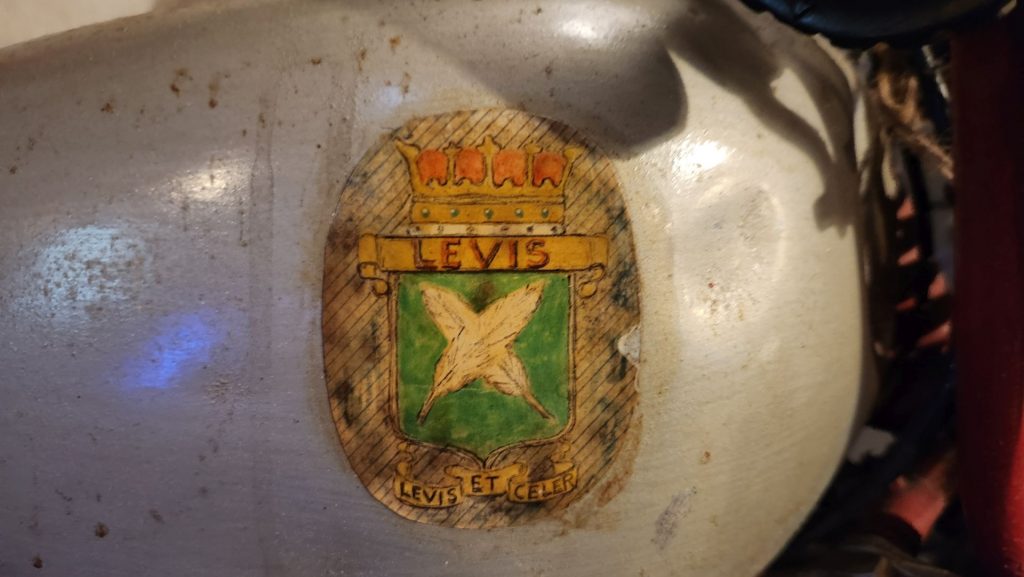
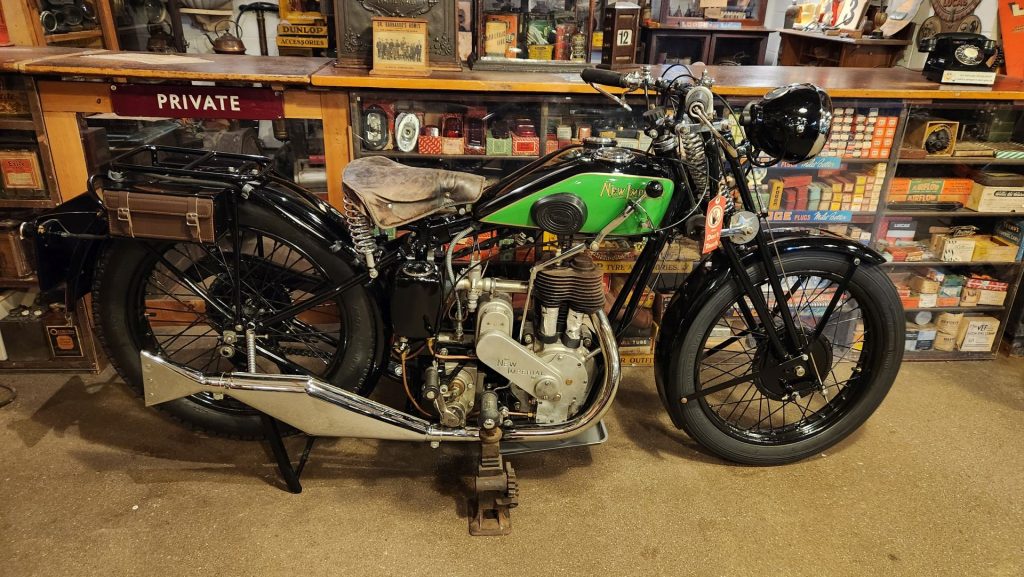
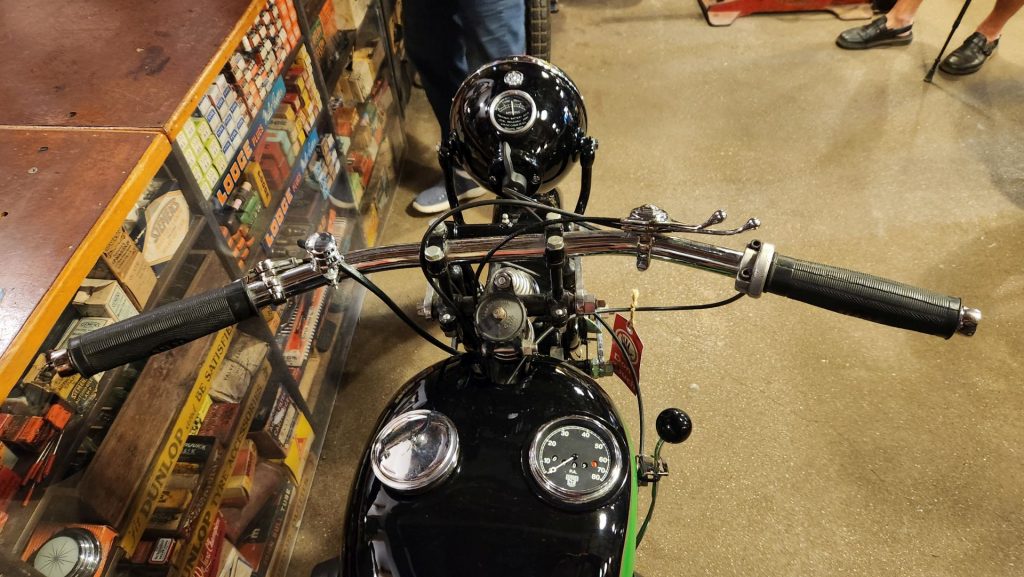
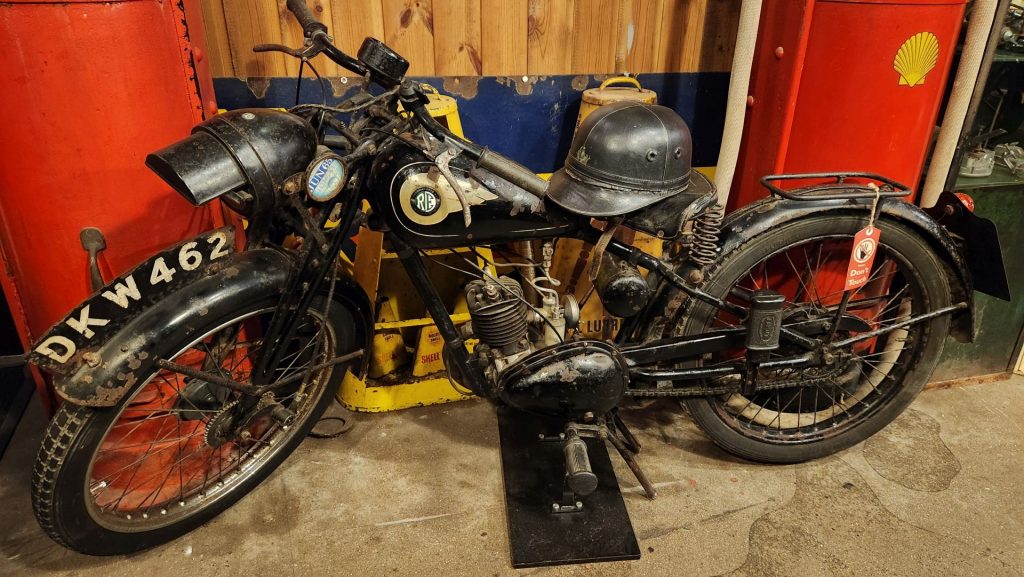
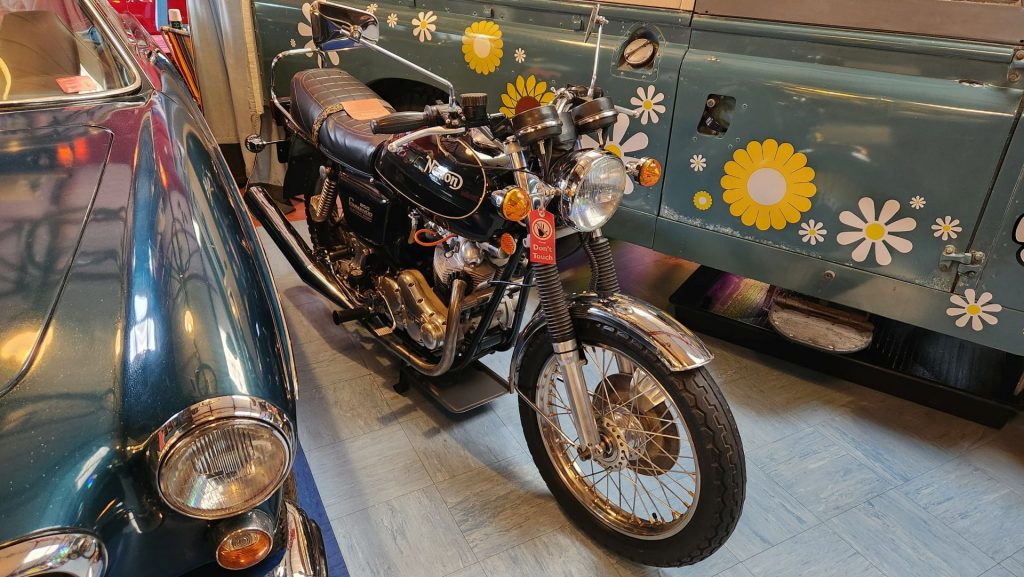
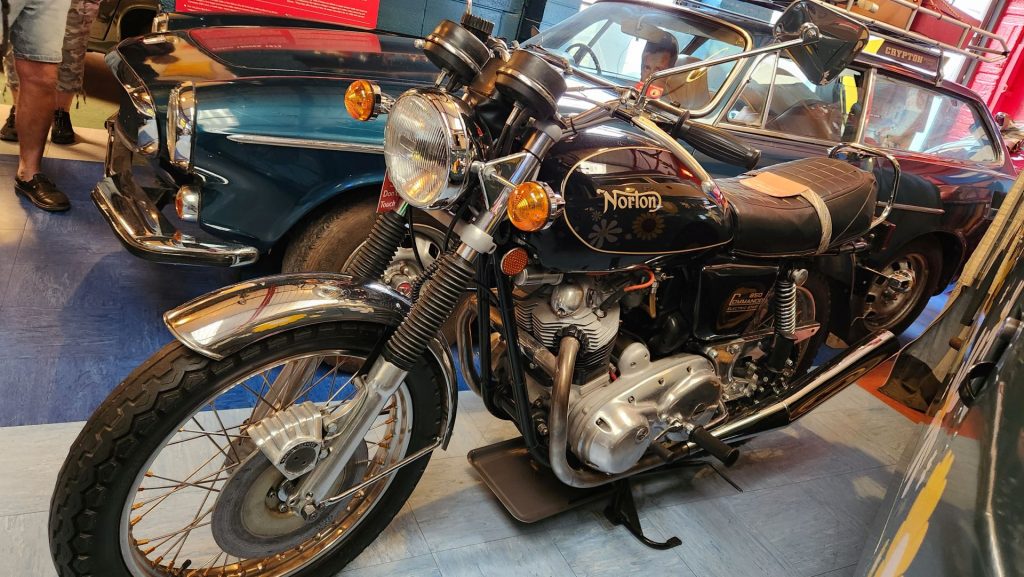
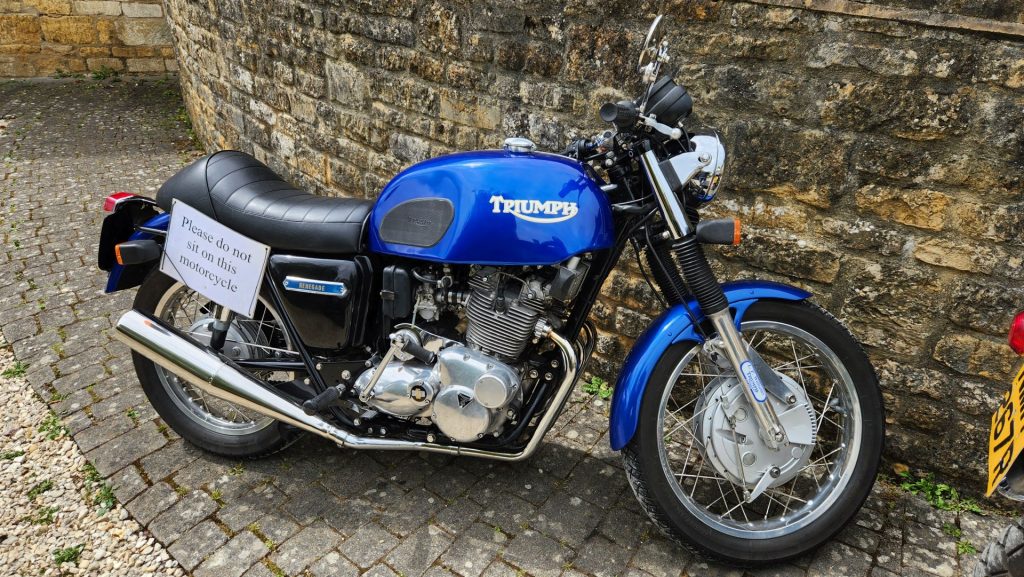
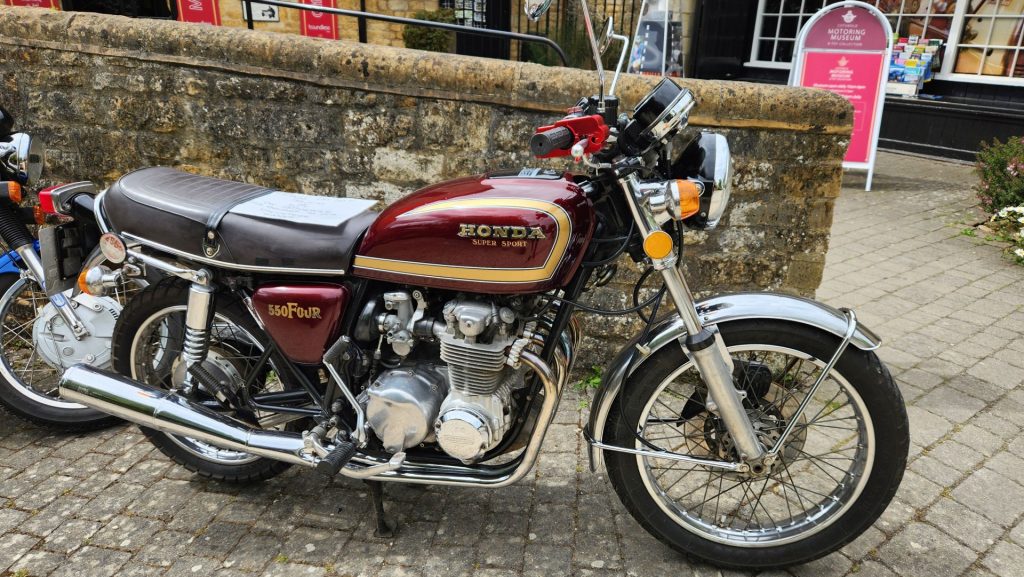
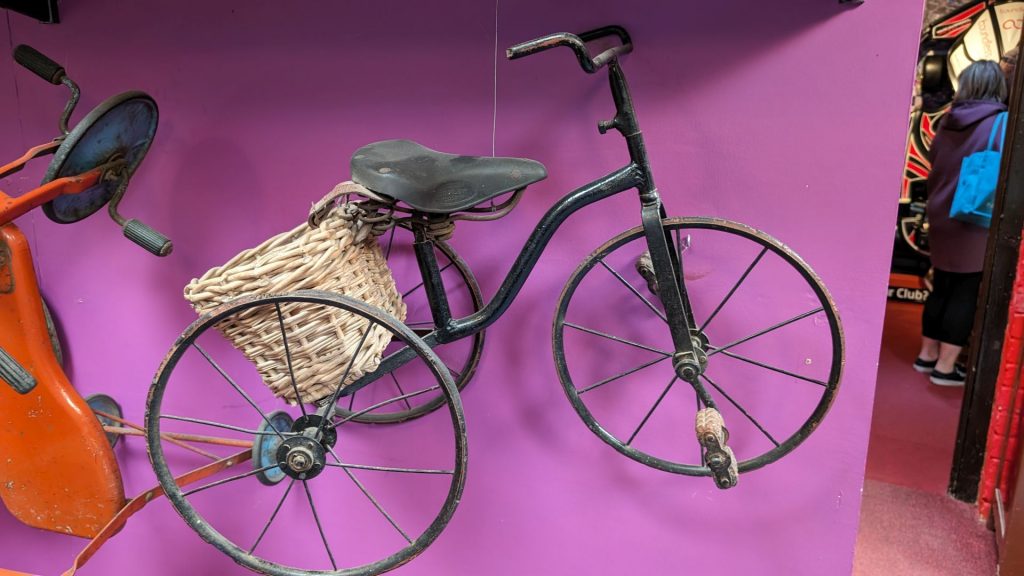
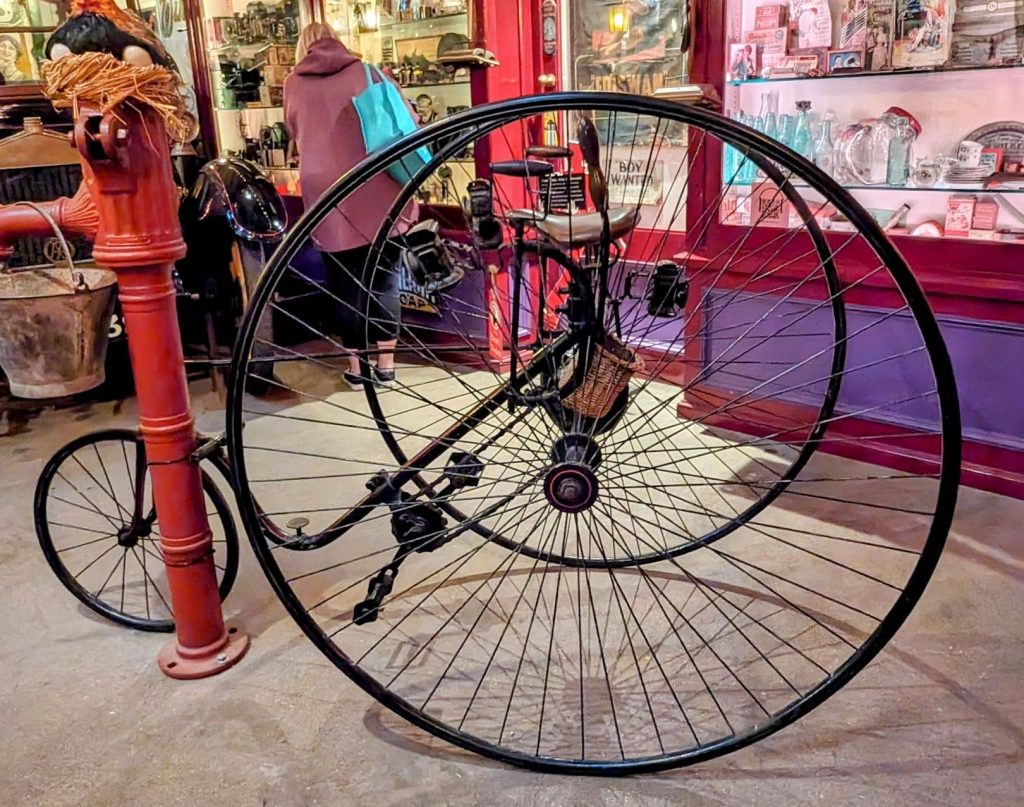
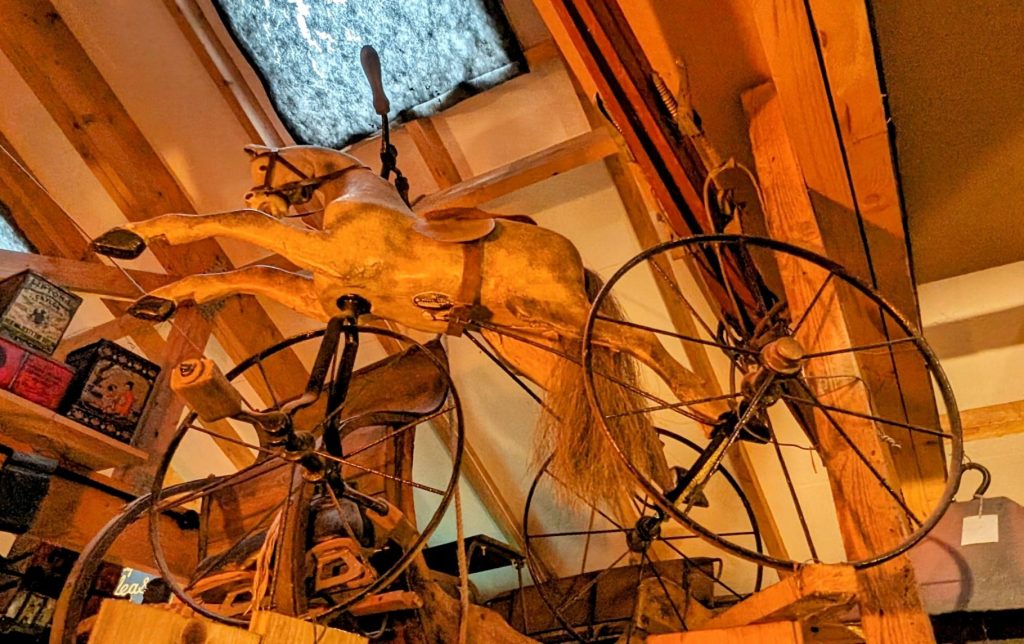
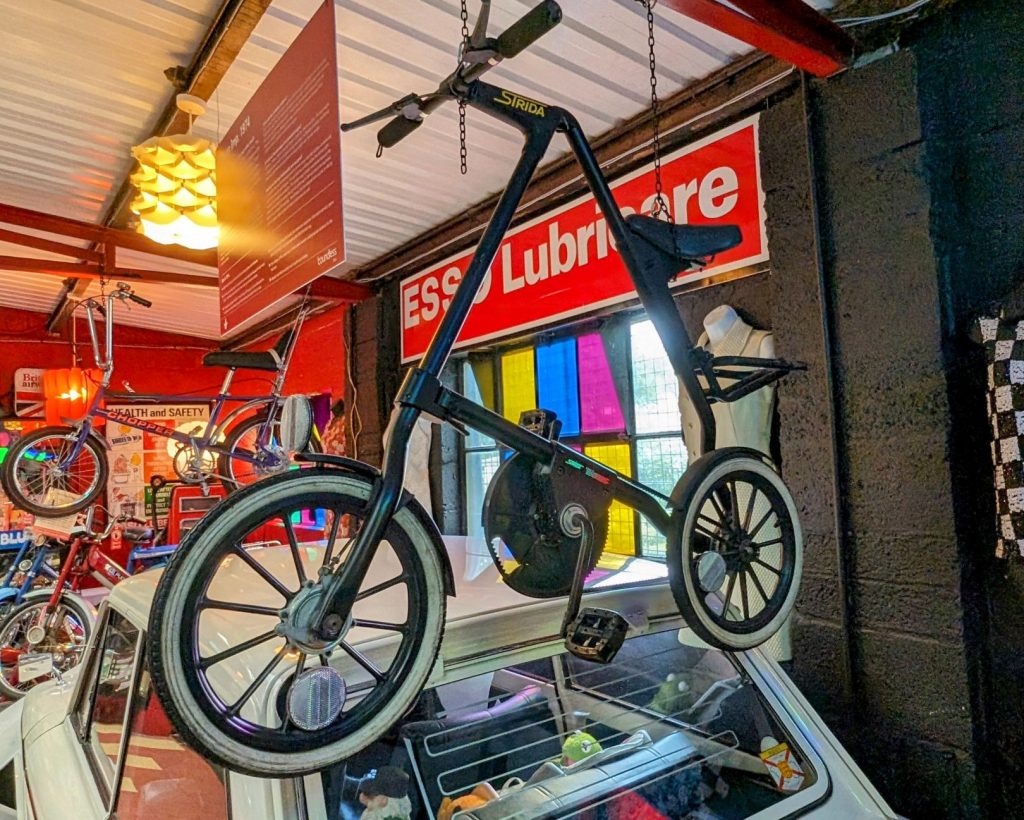
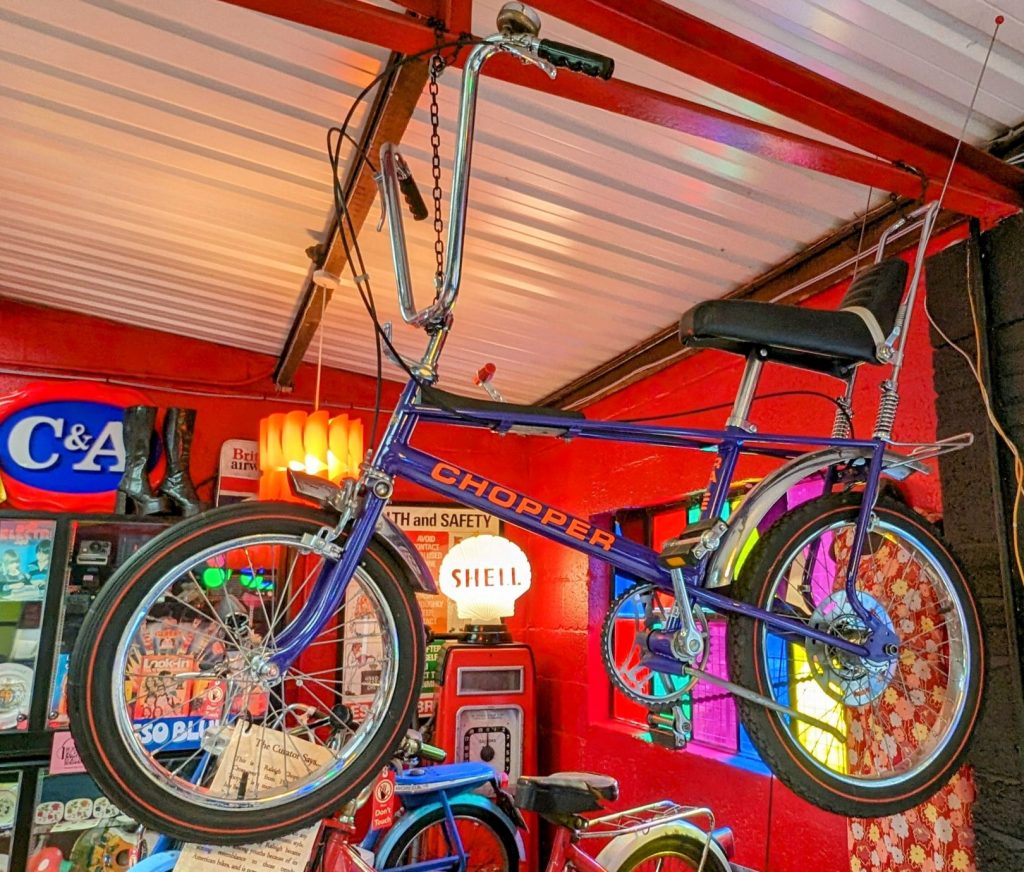
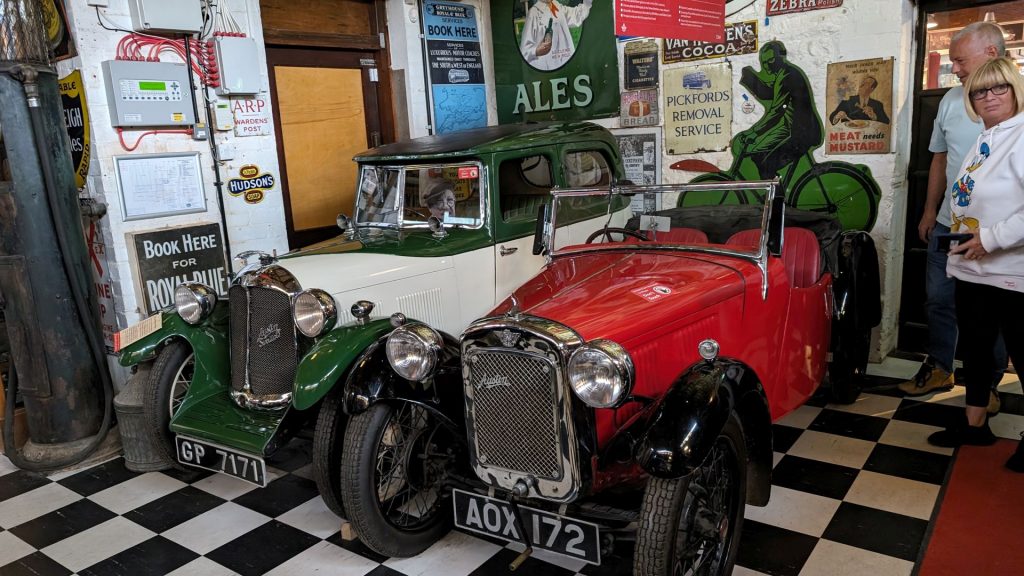
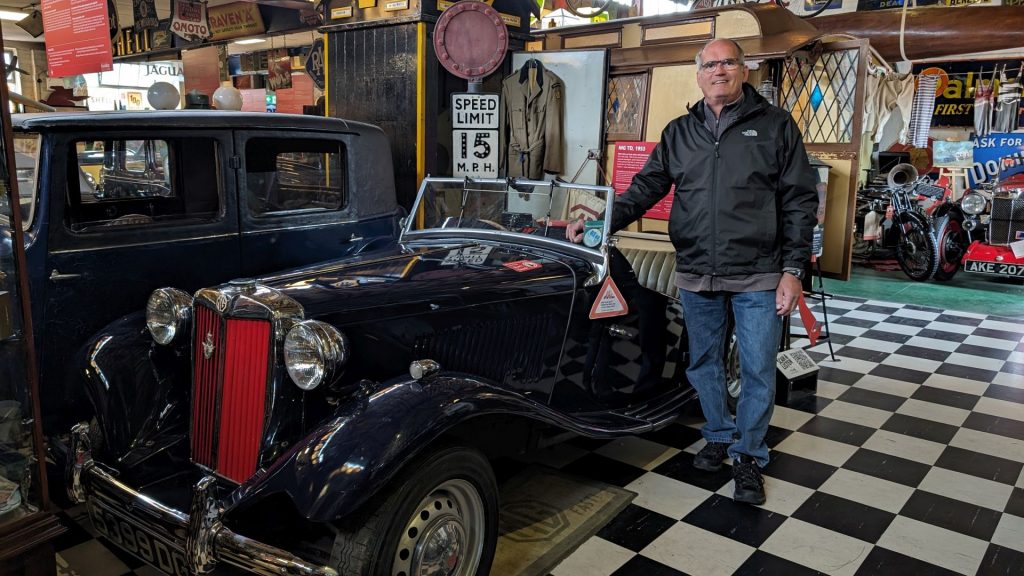
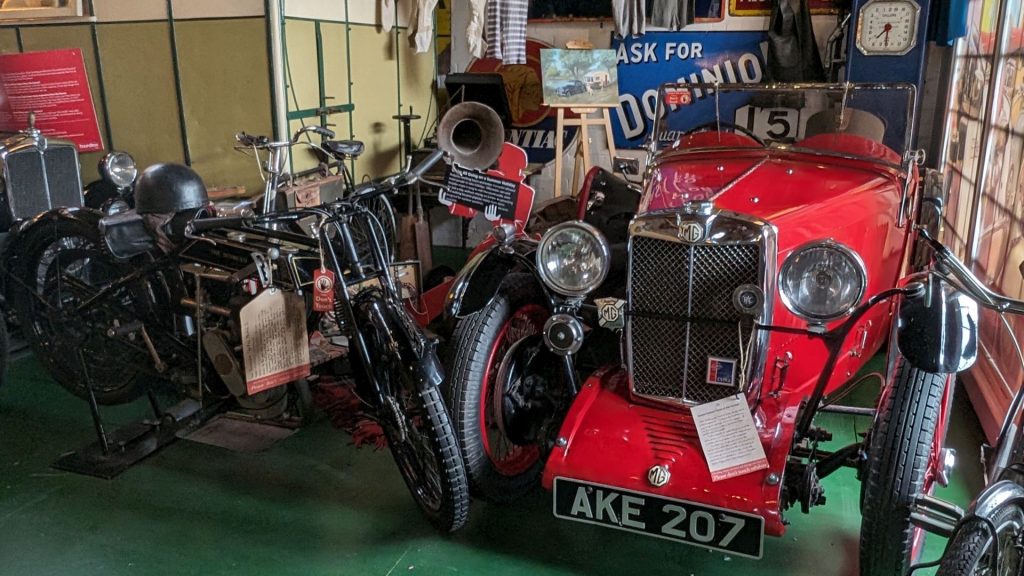
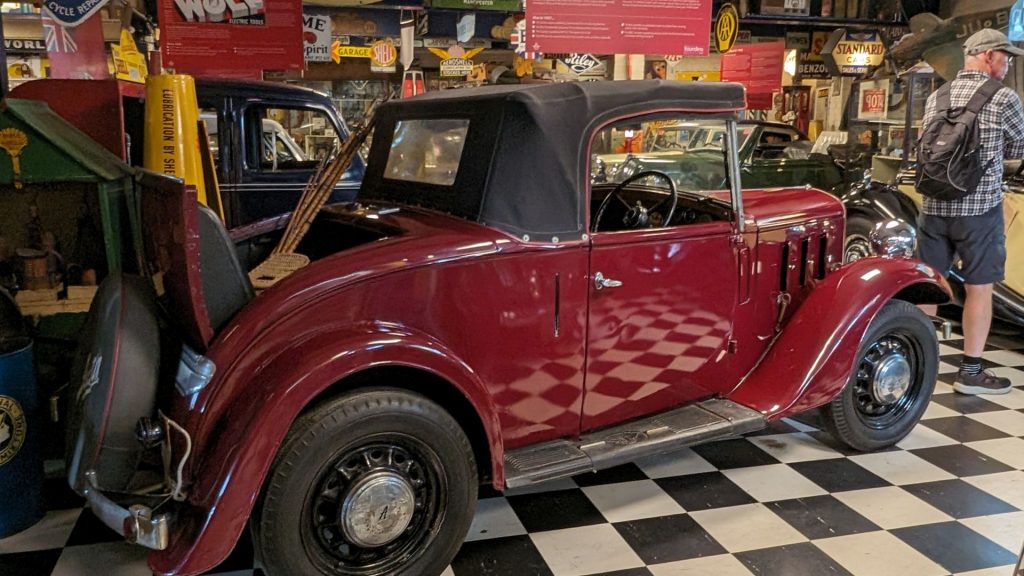
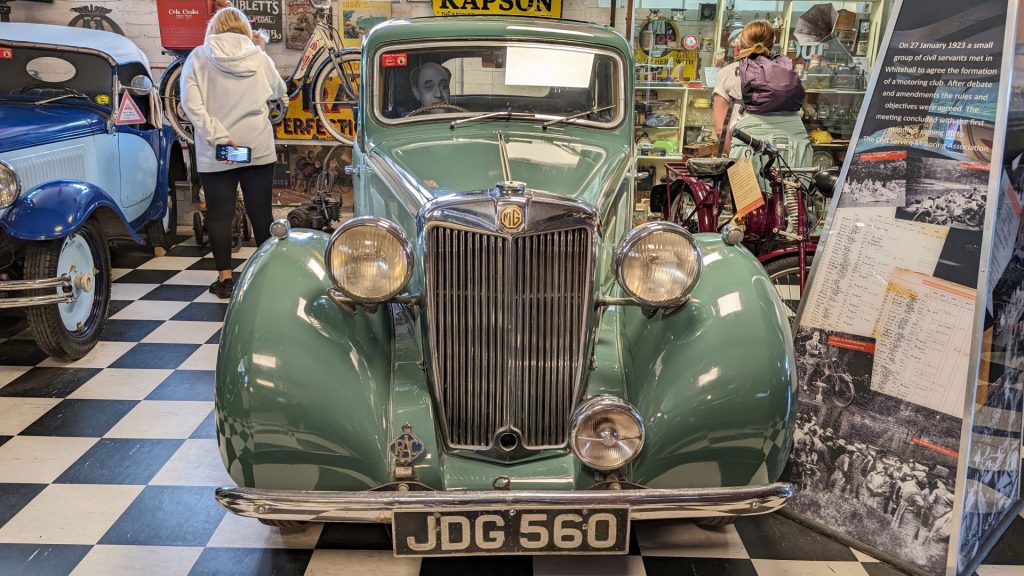
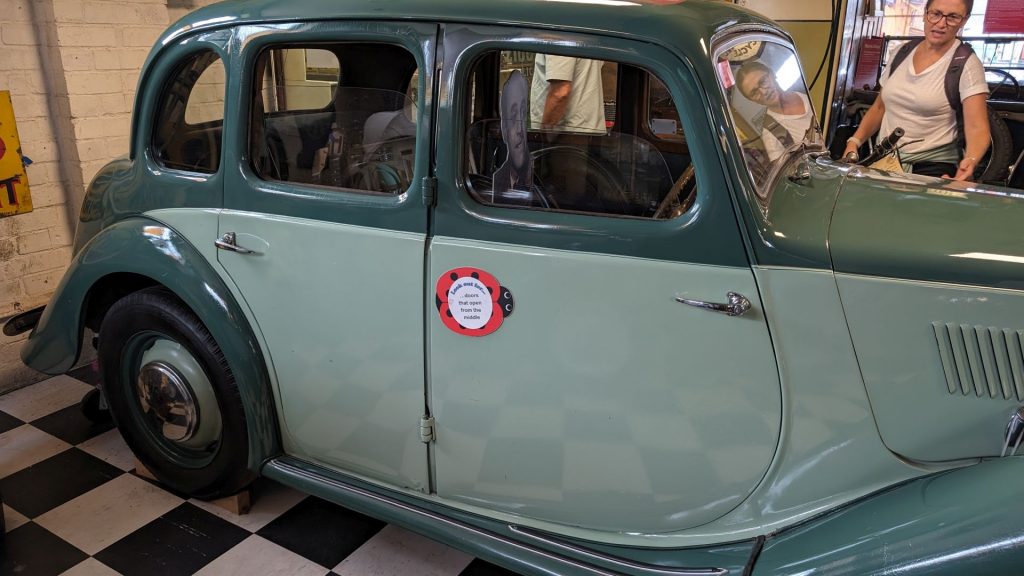
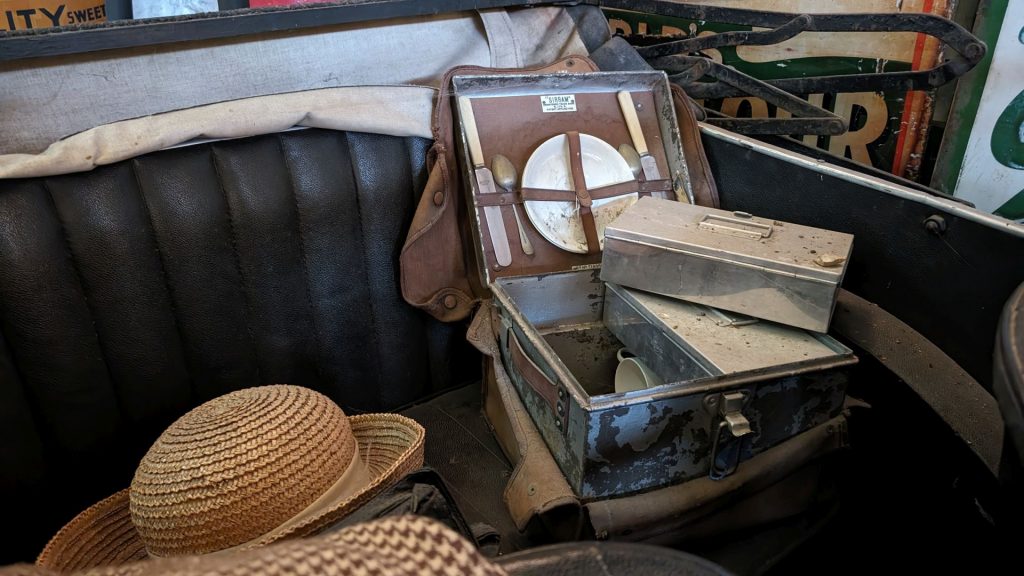
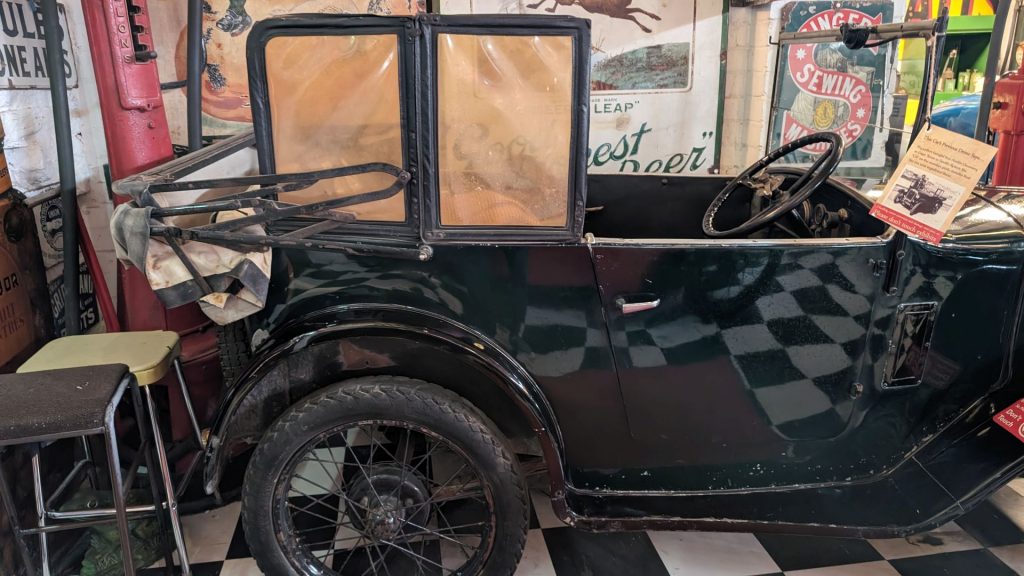
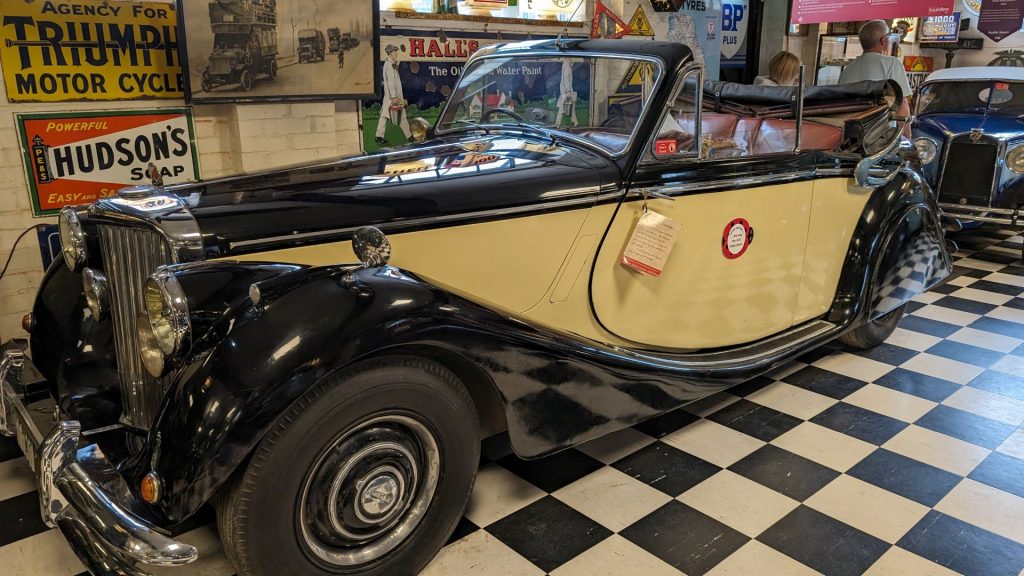
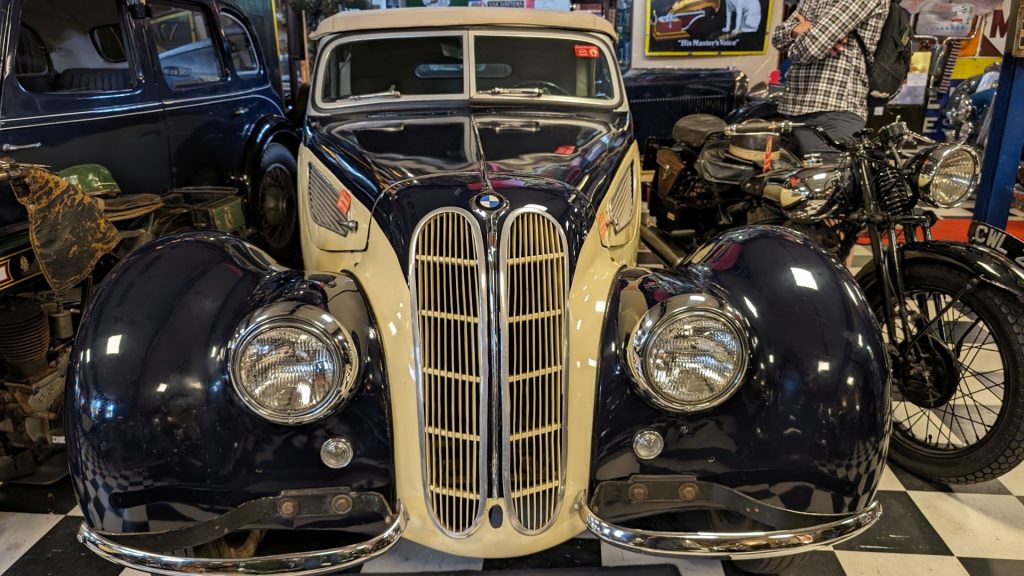
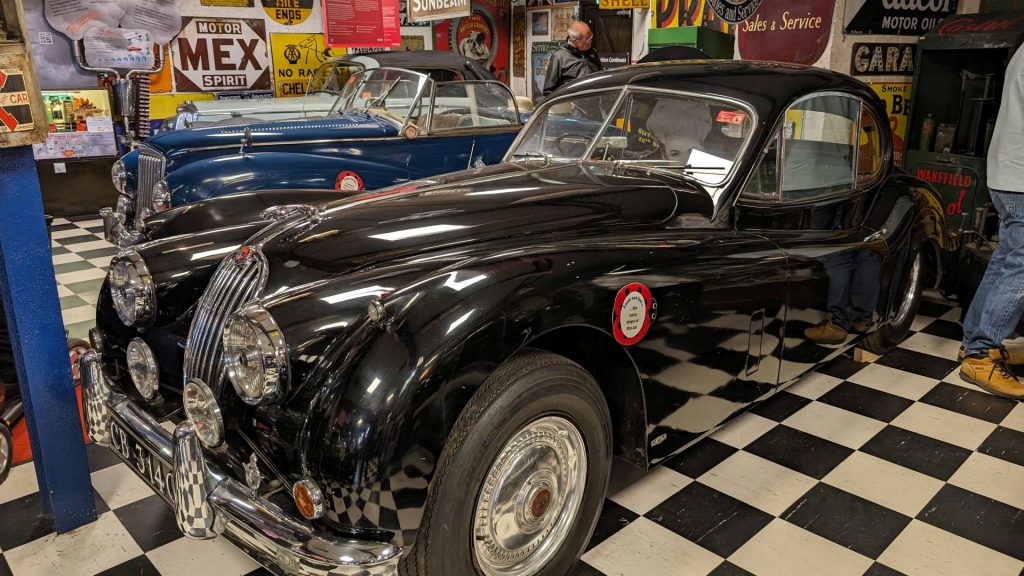
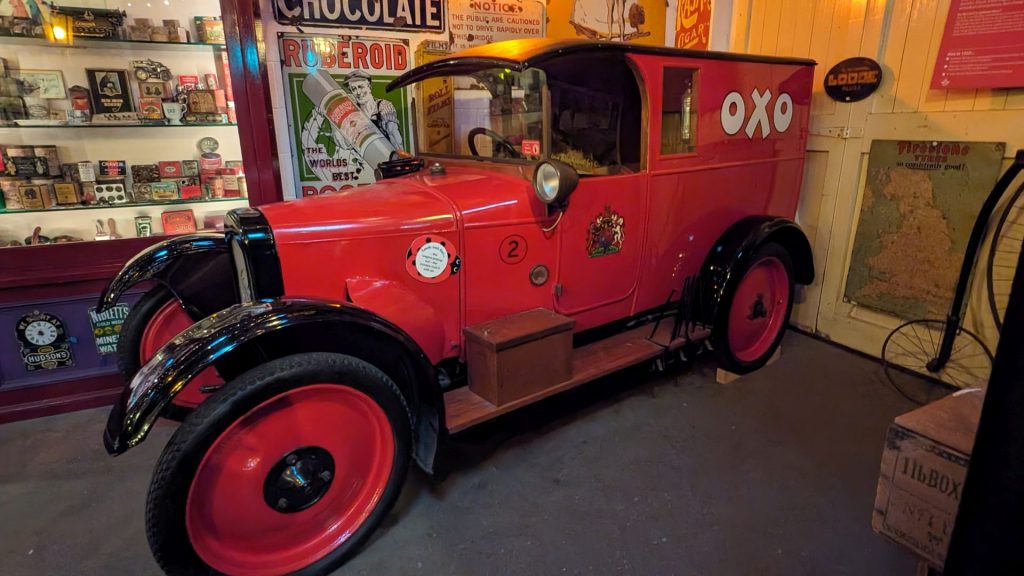
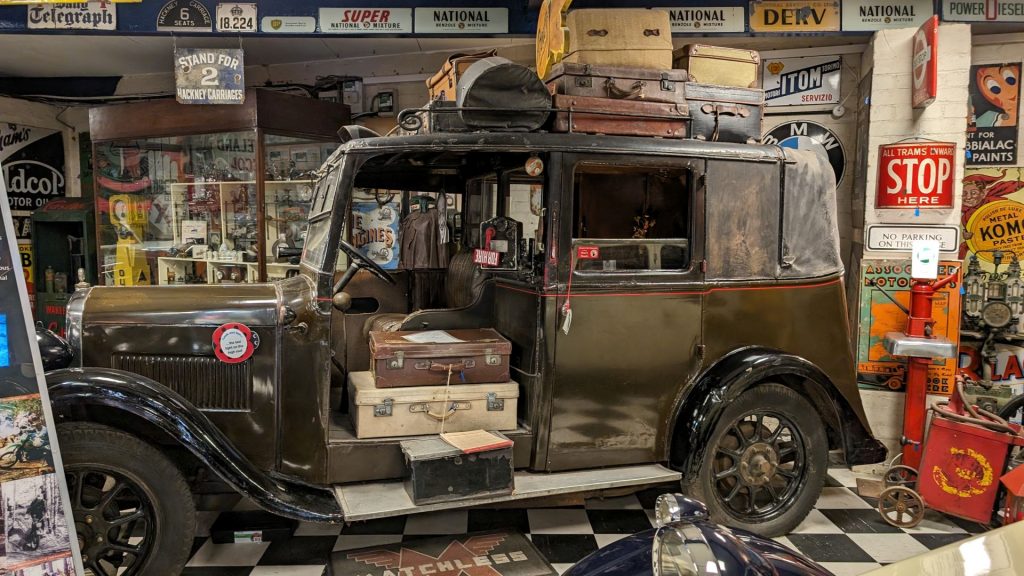
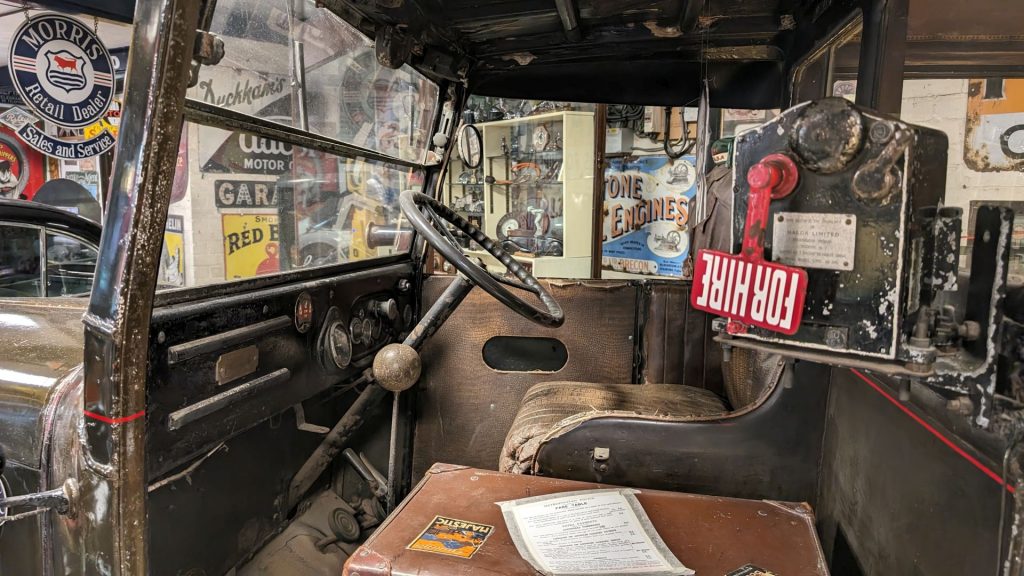
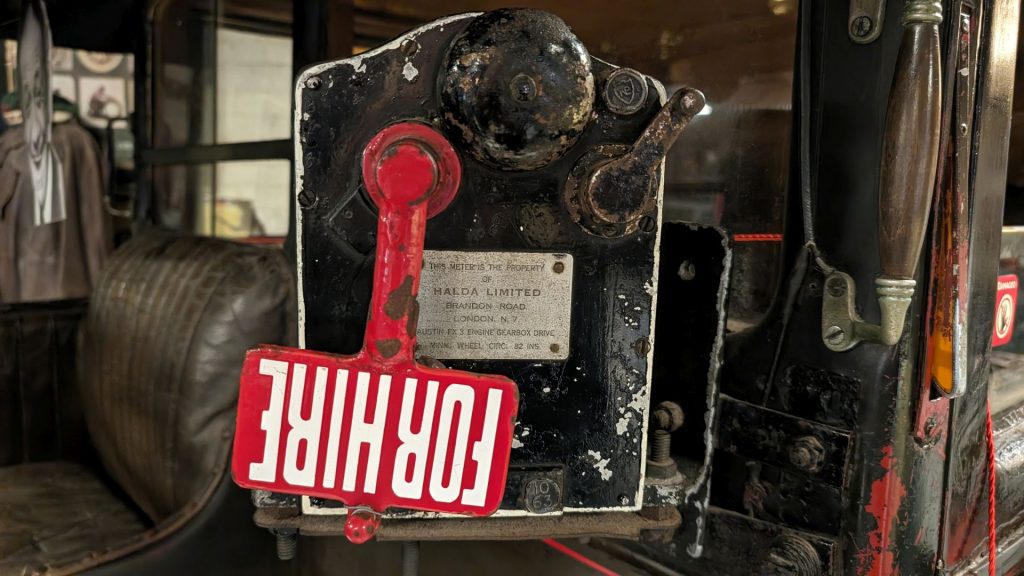
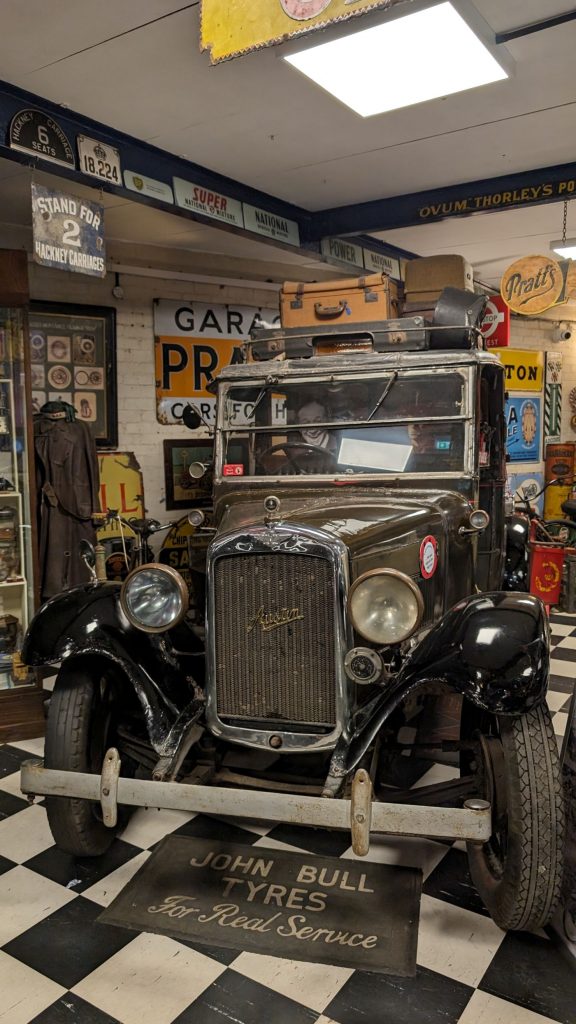
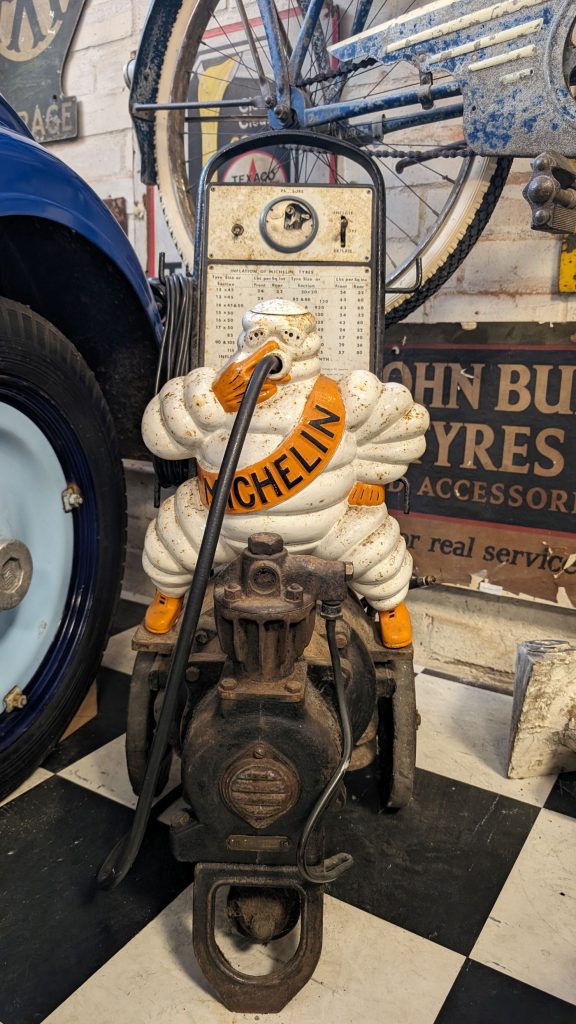
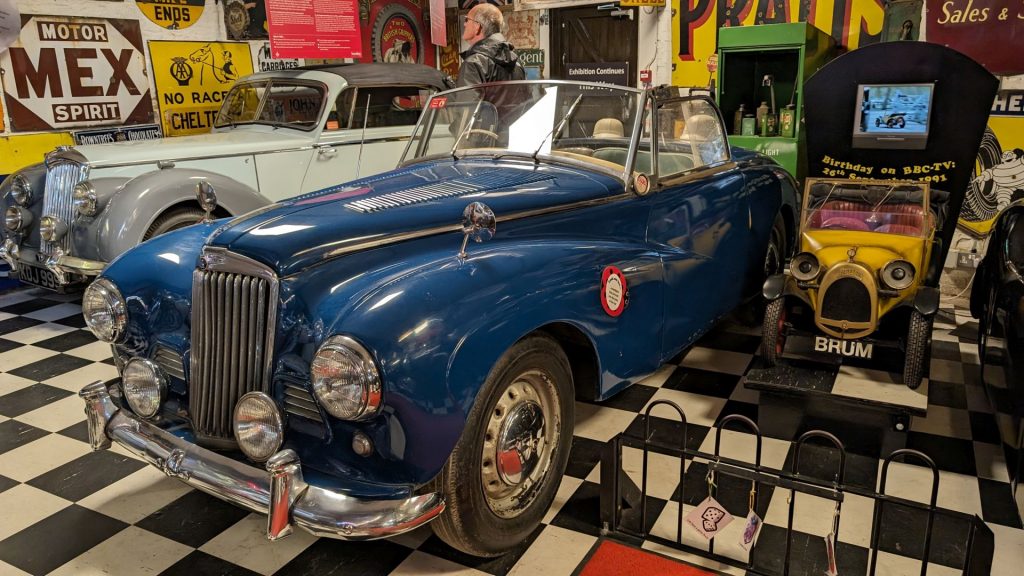
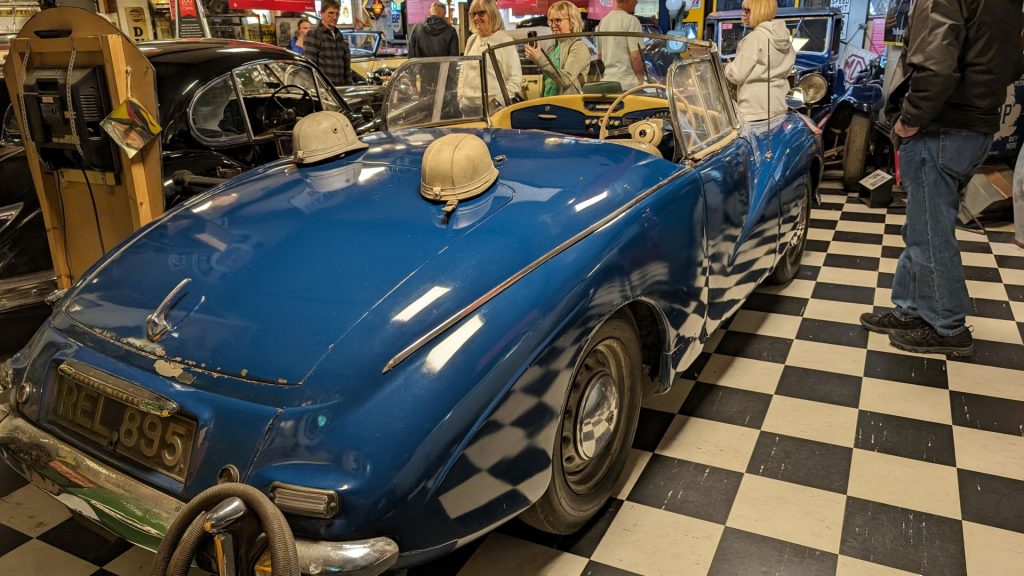
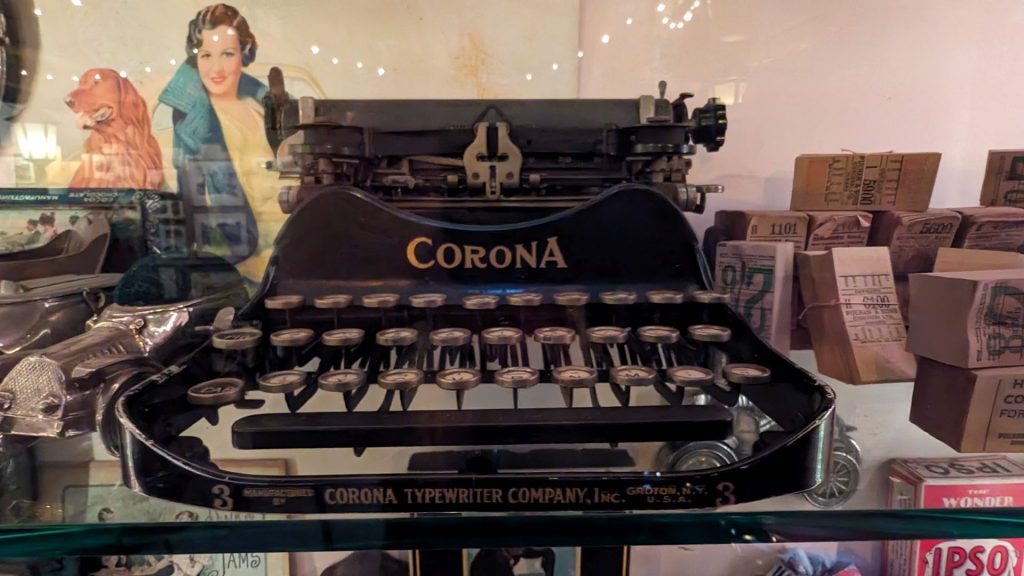
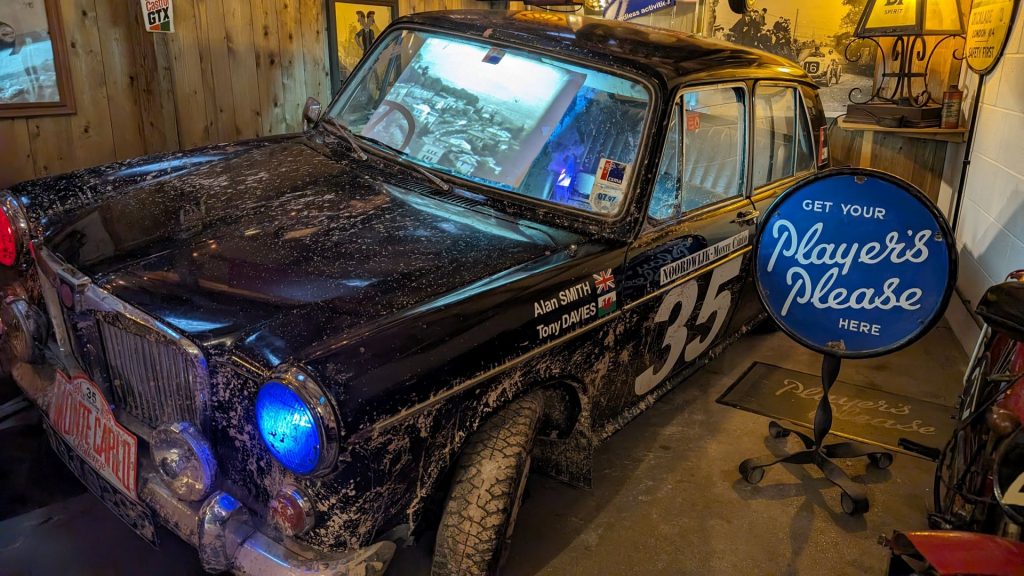
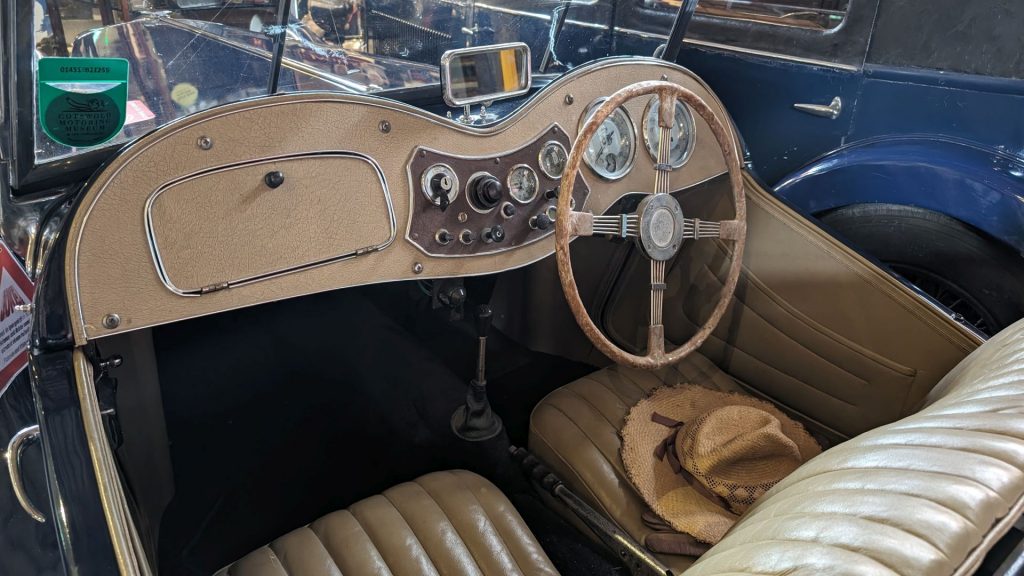
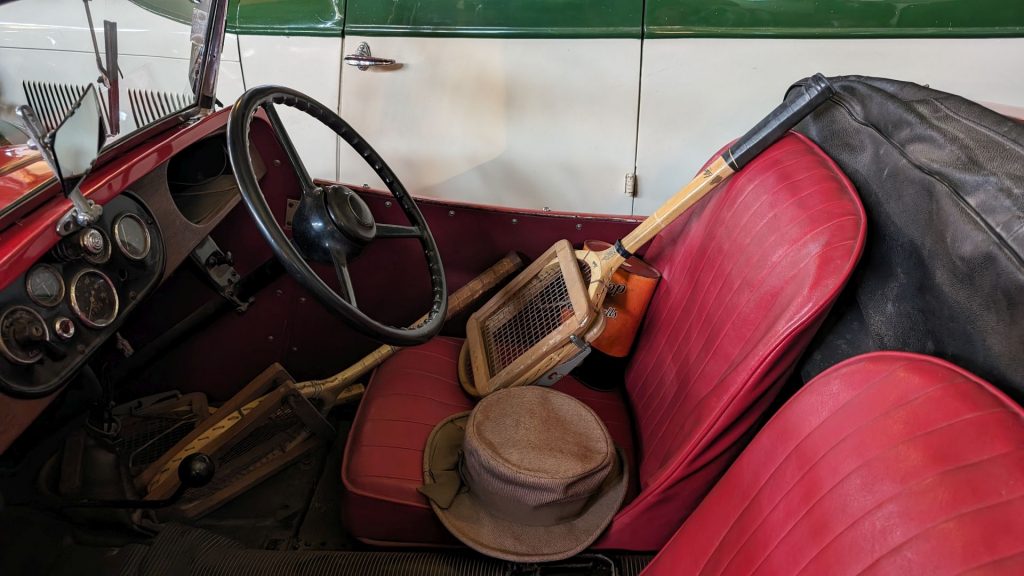
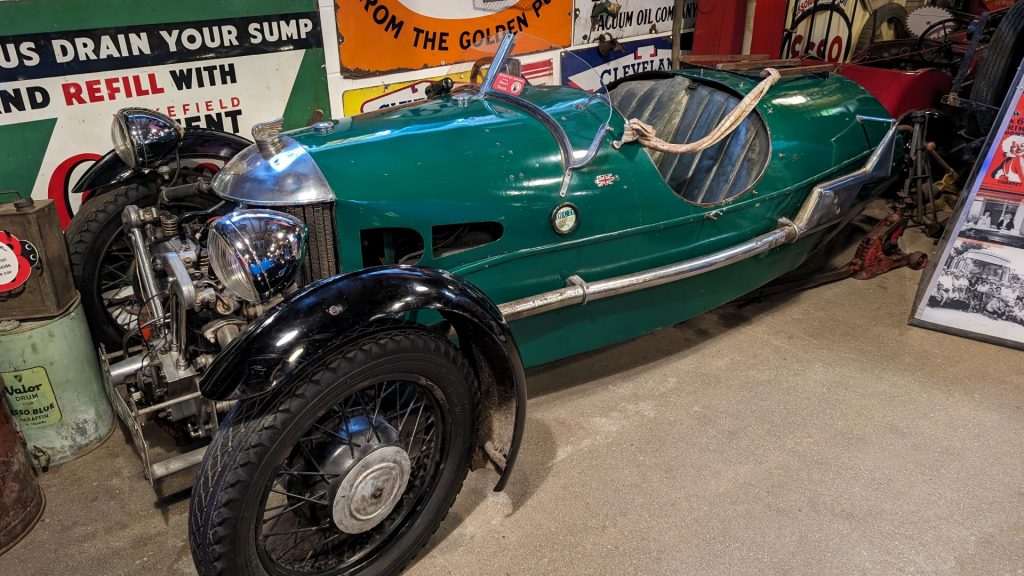
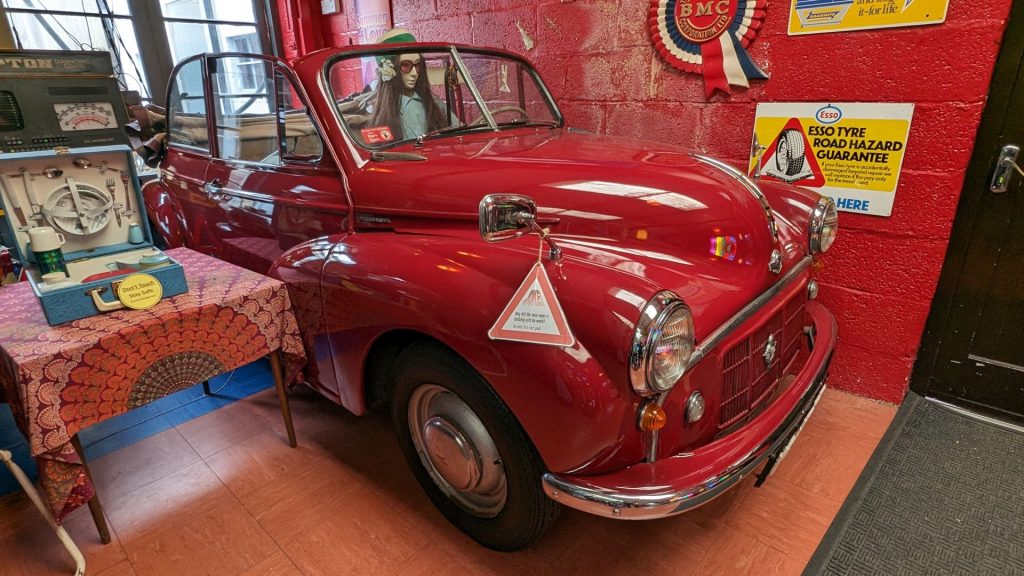
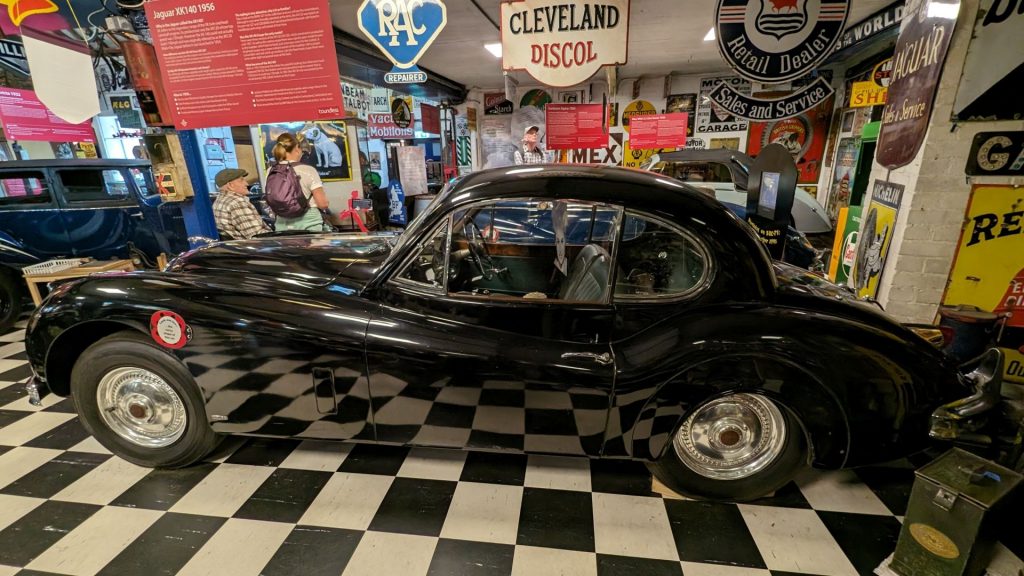
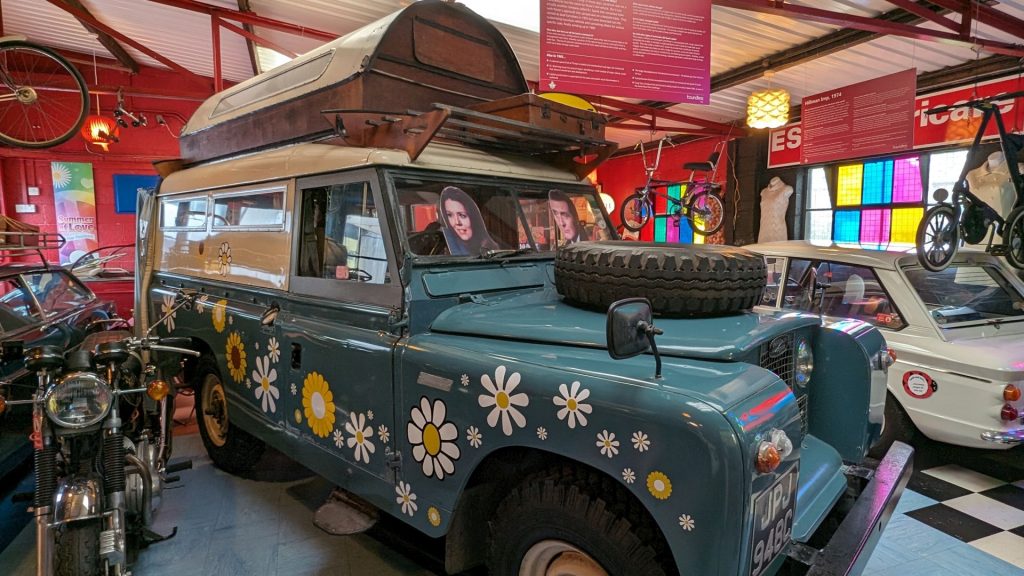
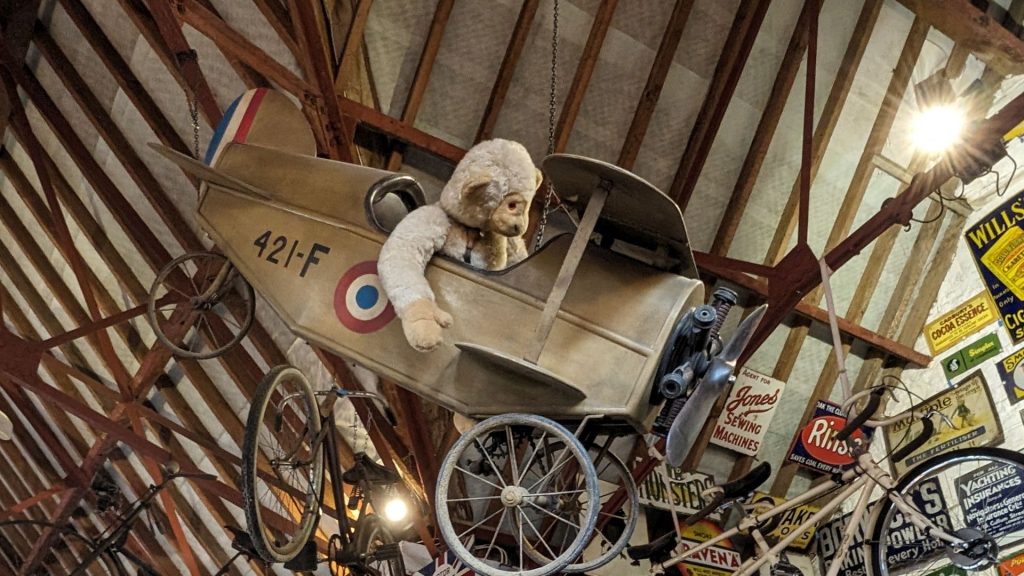
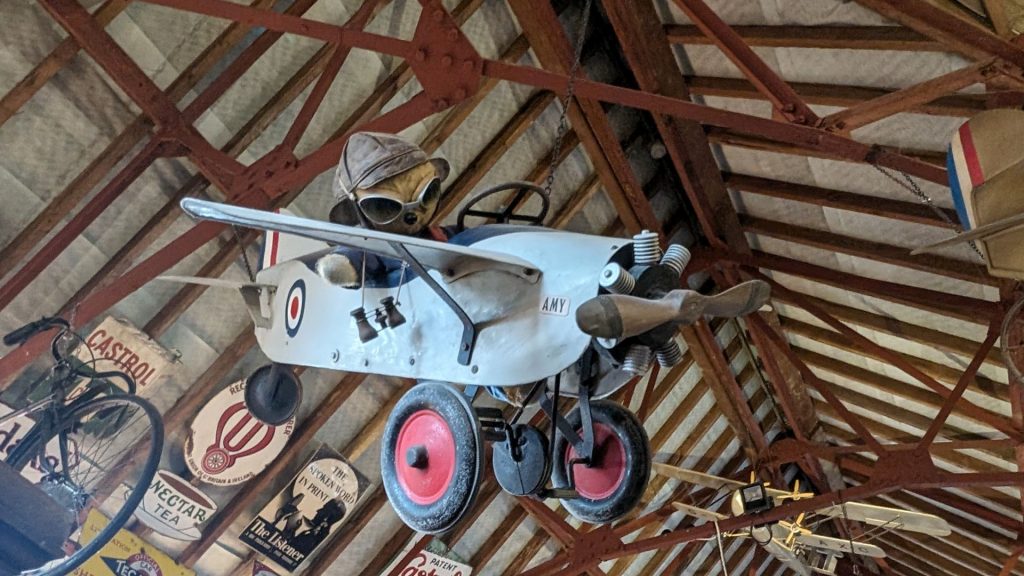
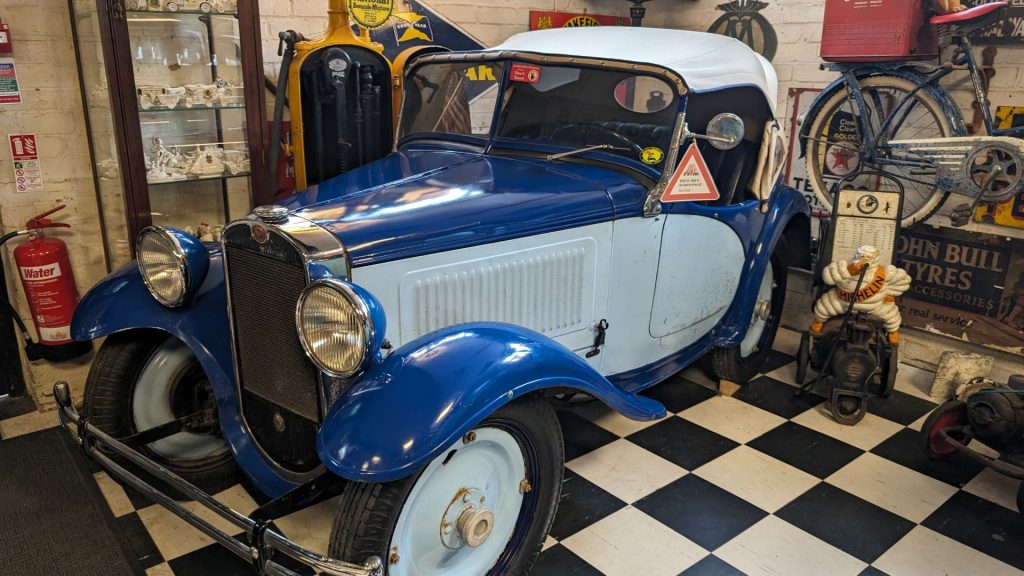
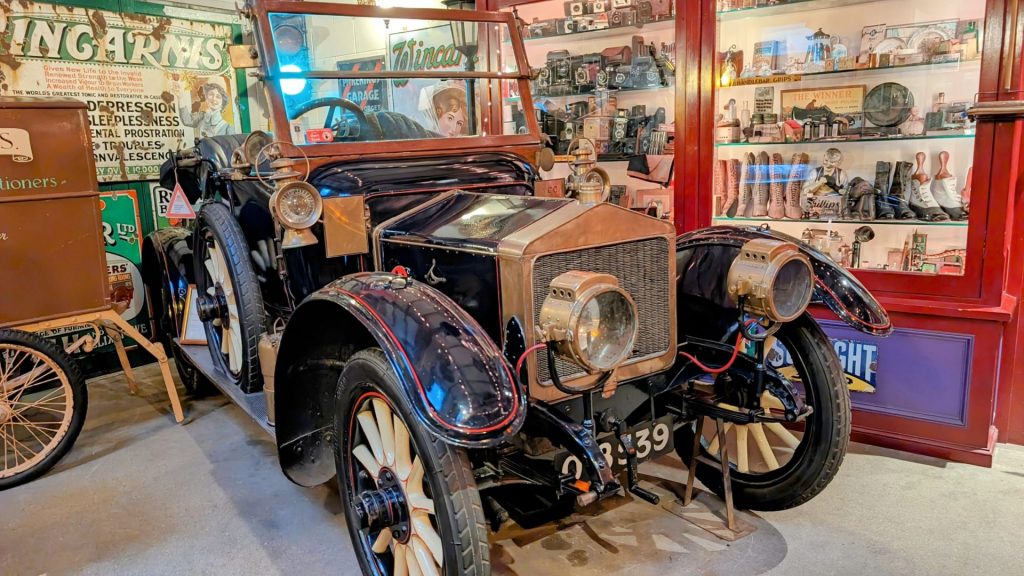
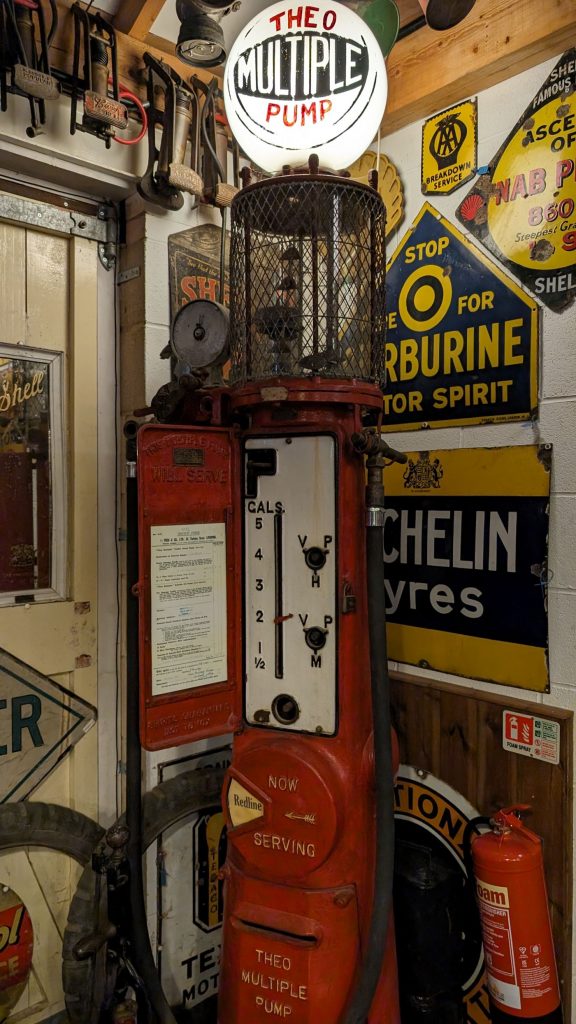
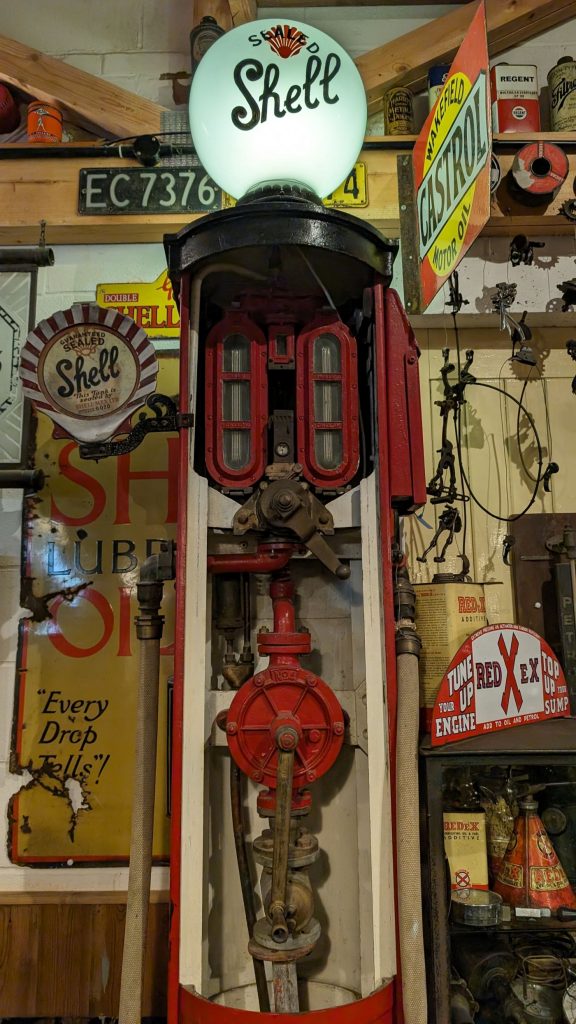
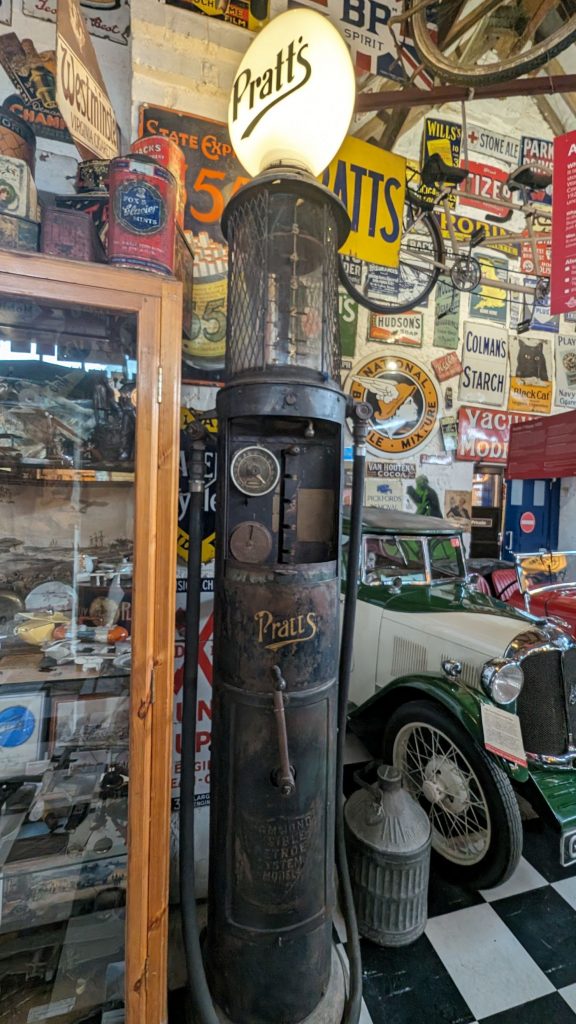
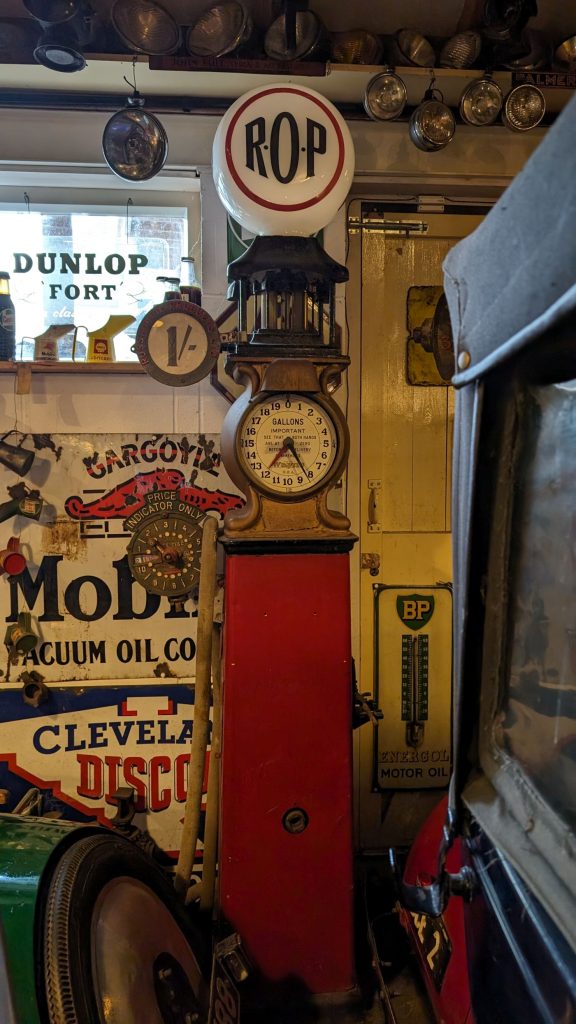
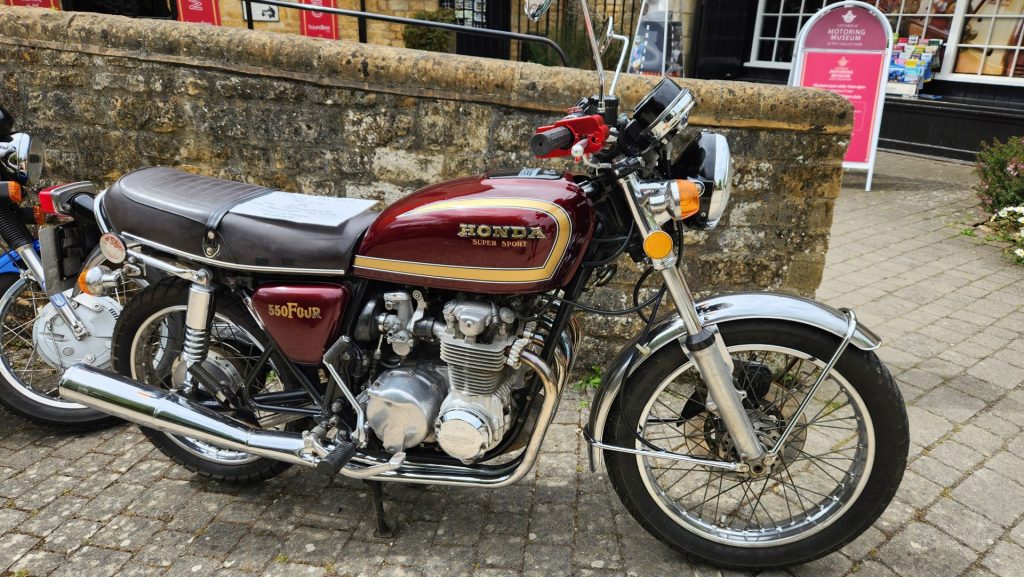
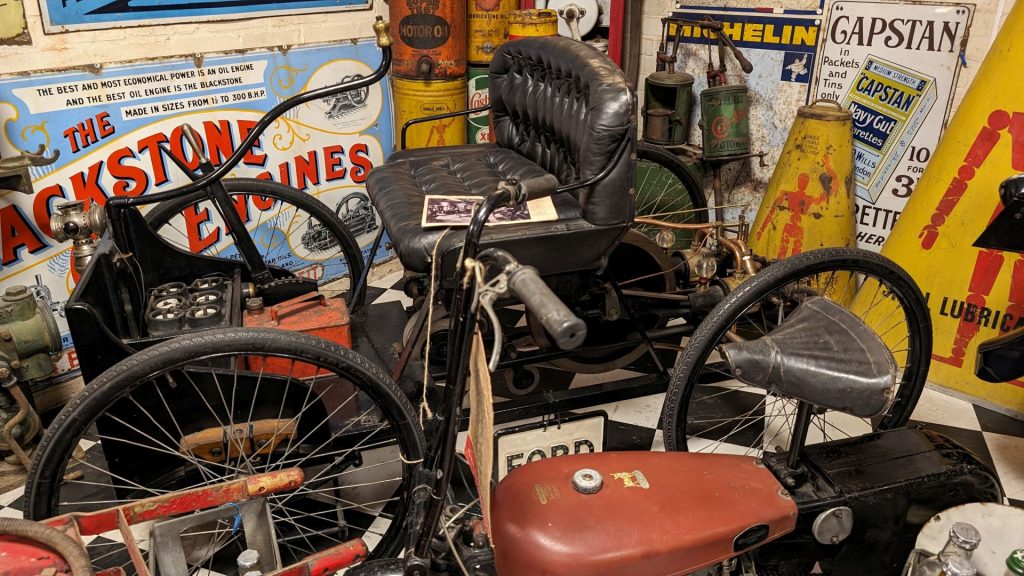
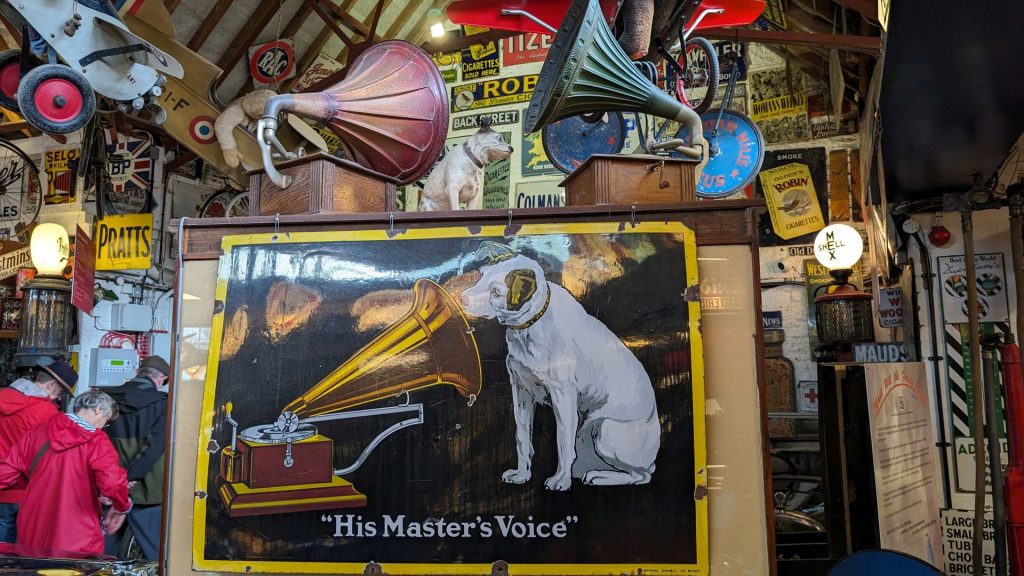
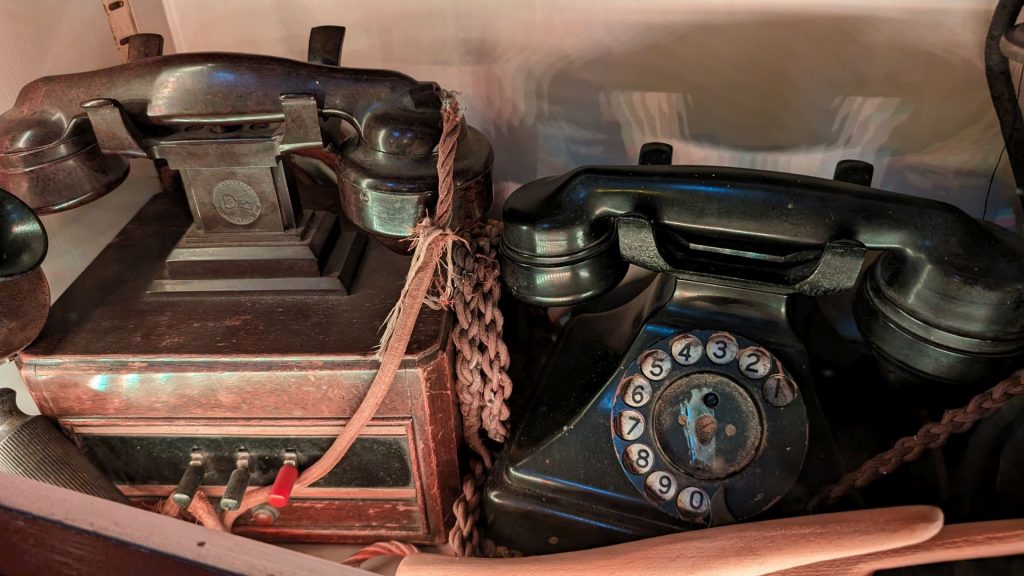
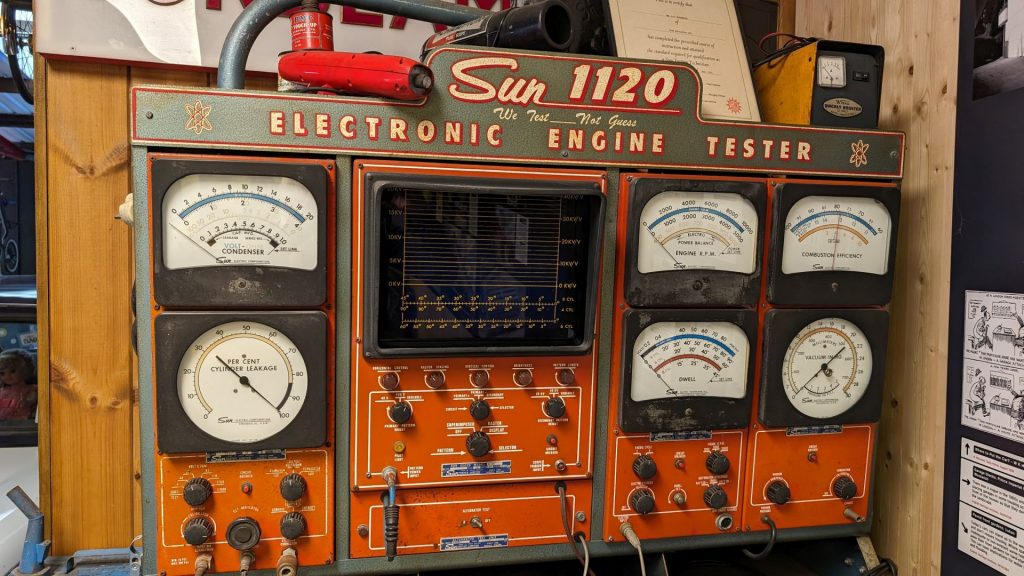
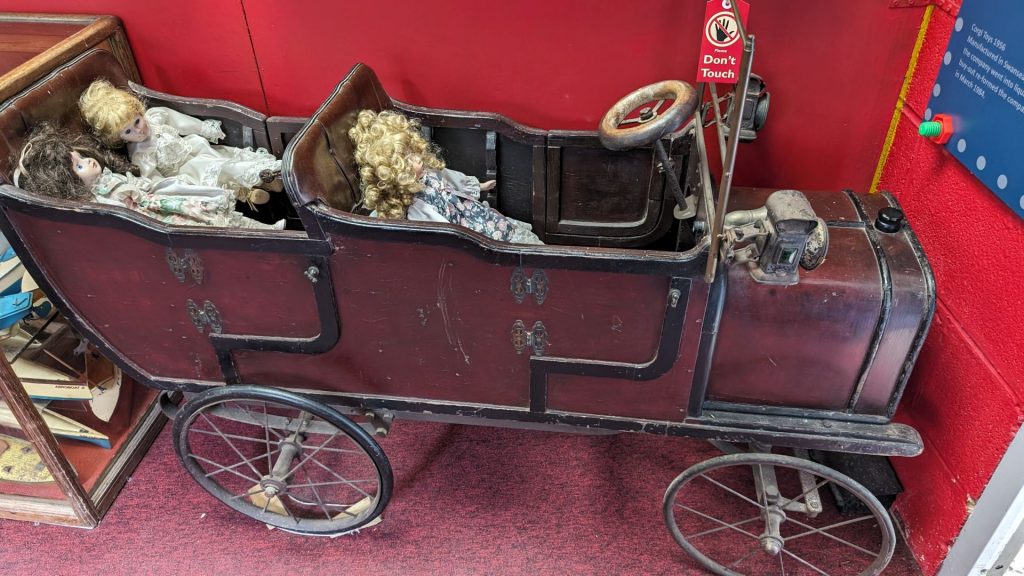
Back to the town.
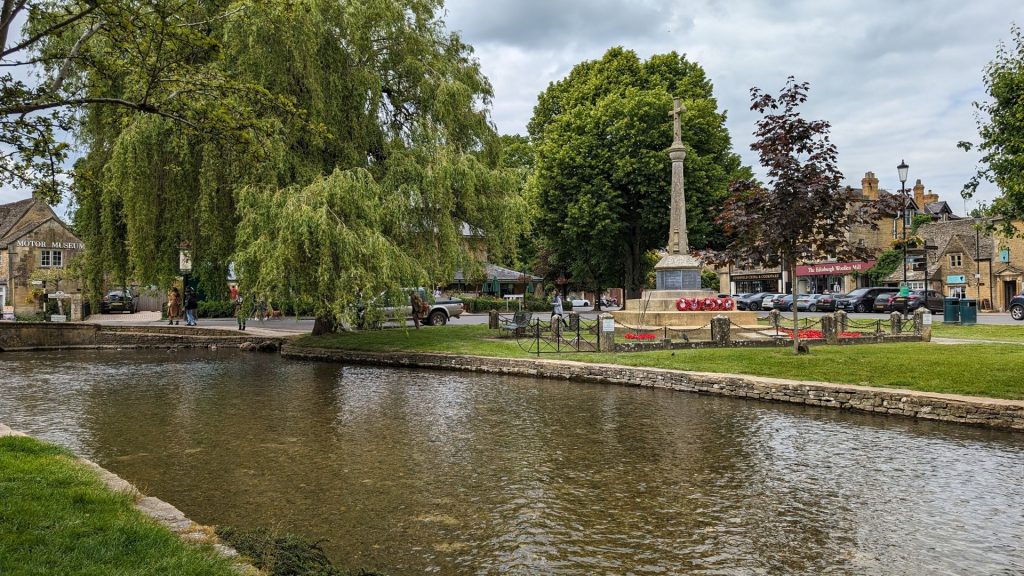
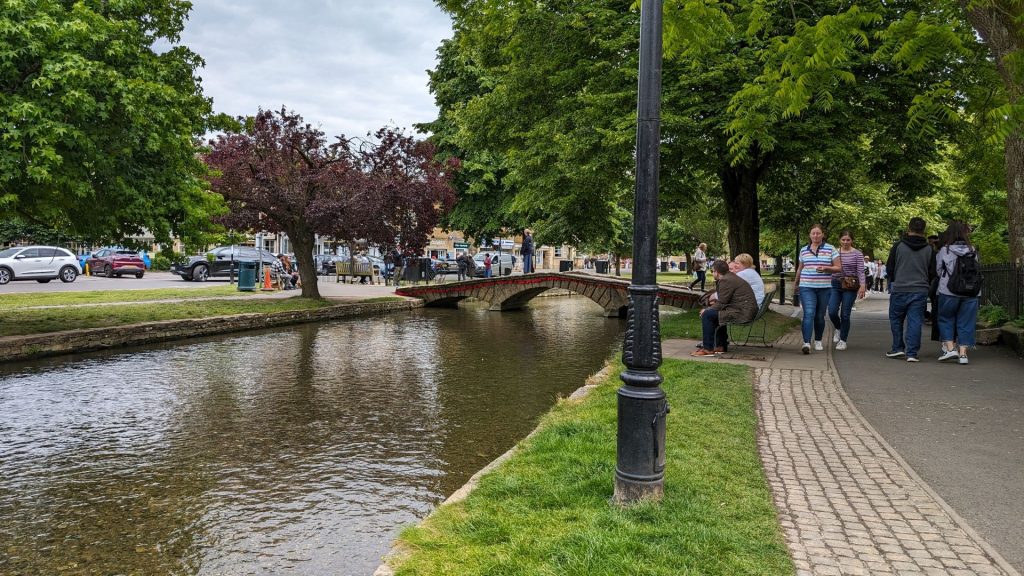
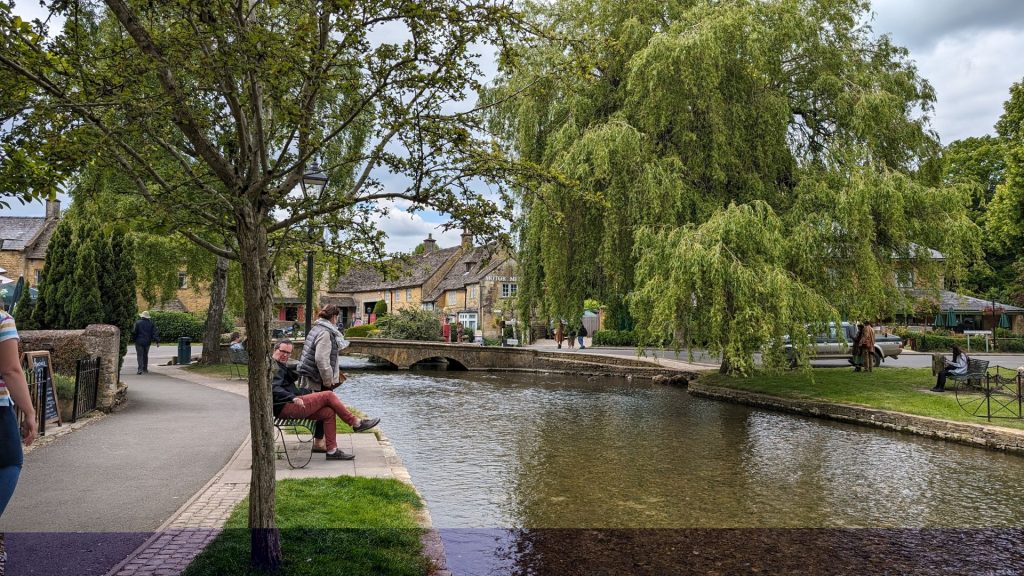
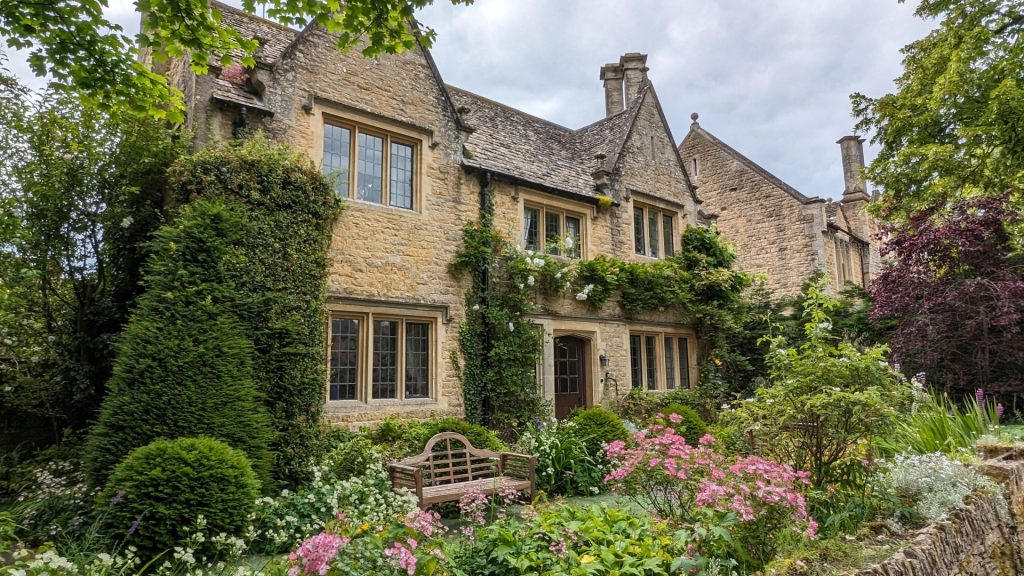
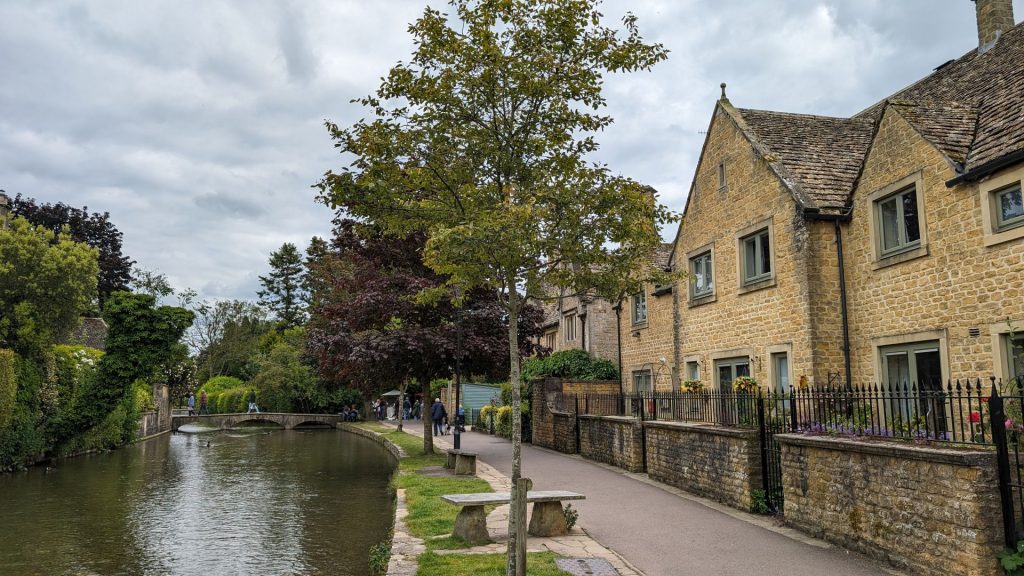
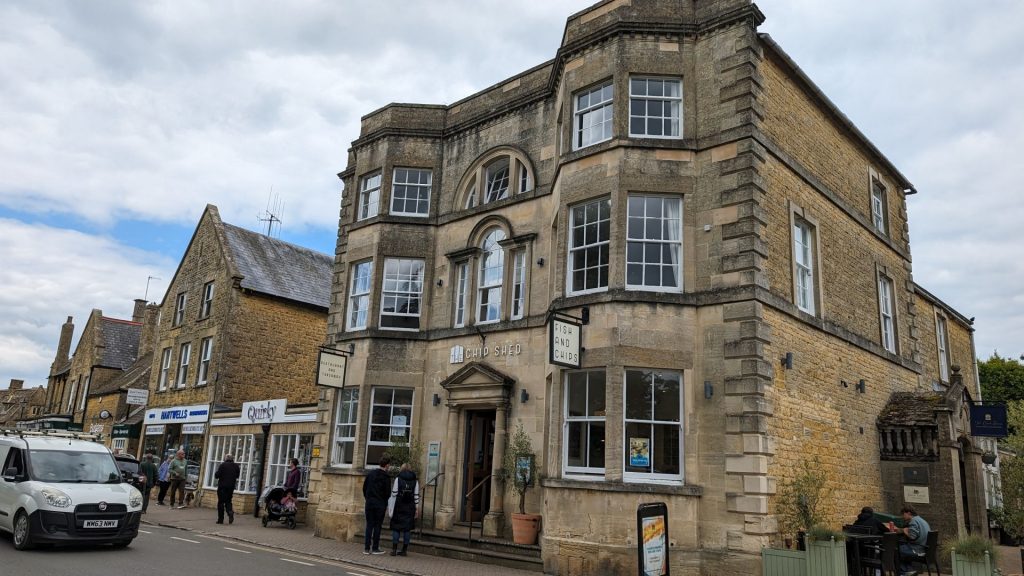
And now to the miniature model village! These were perhaps knee height – some a bit larger. This isn’t the entire model village.
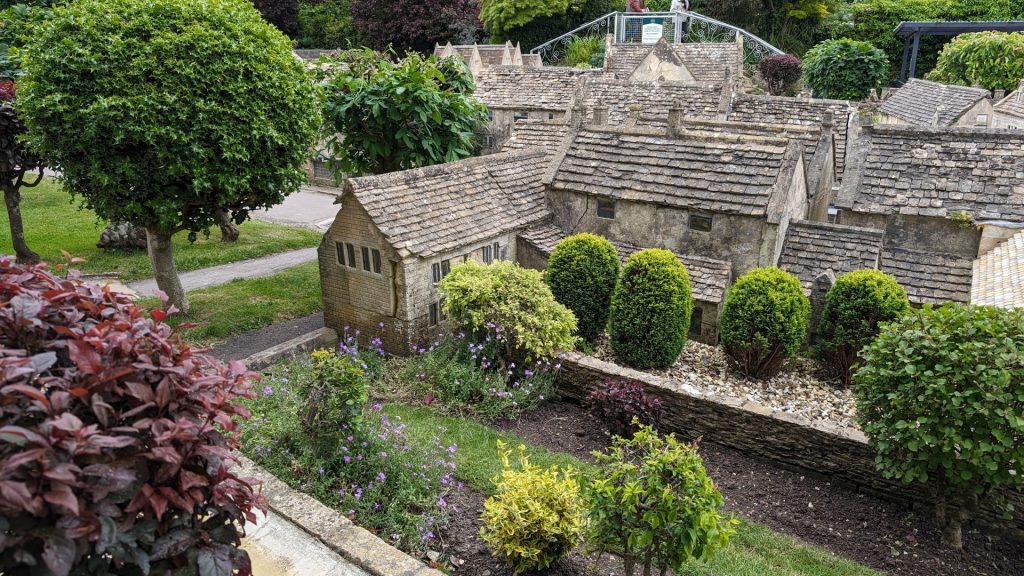
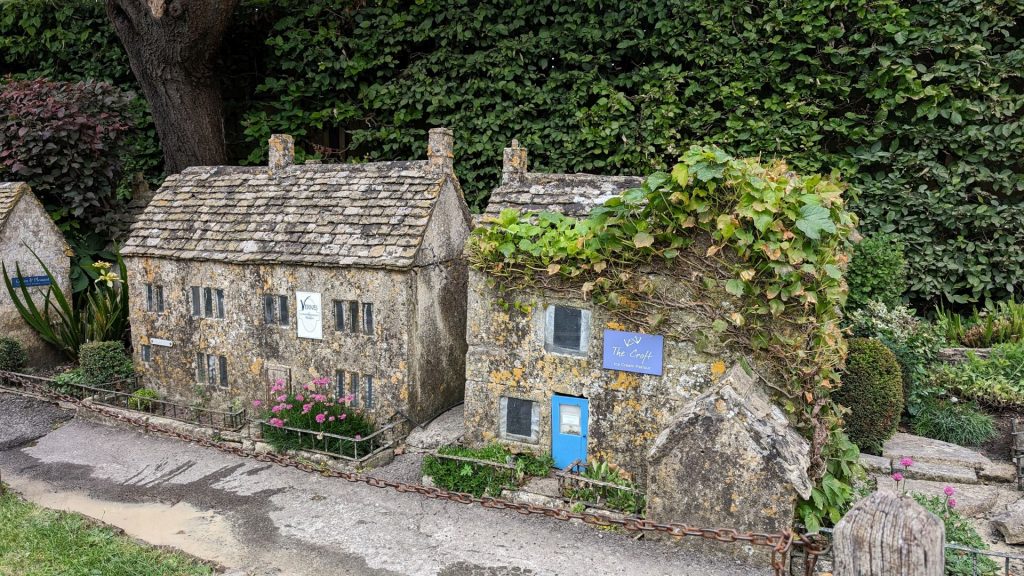
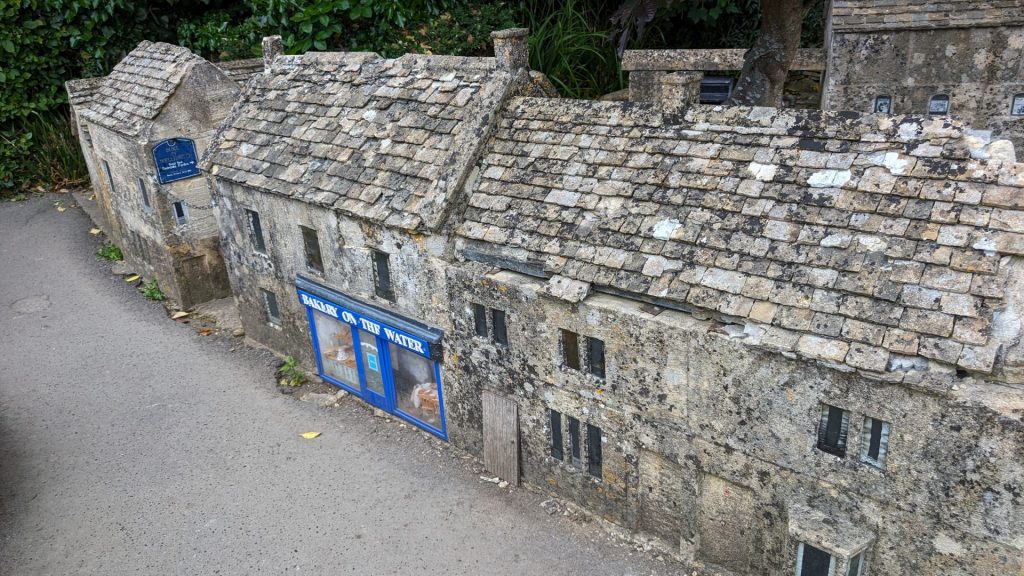
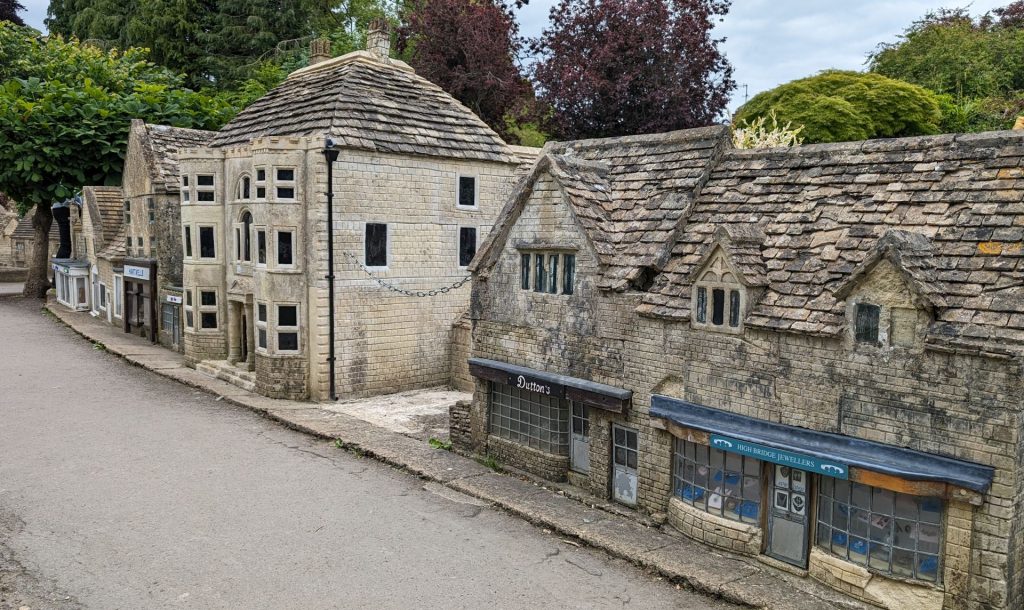
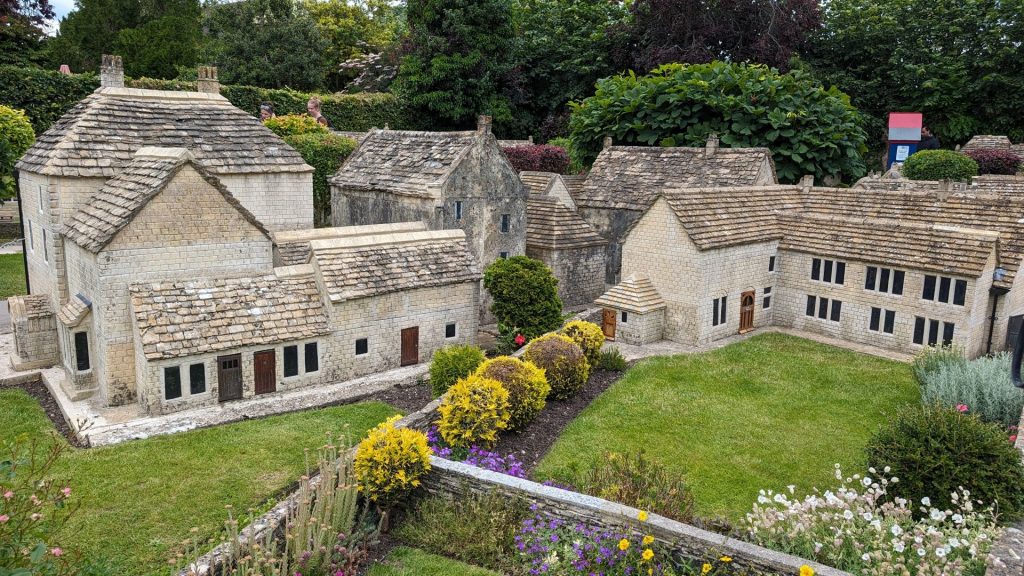
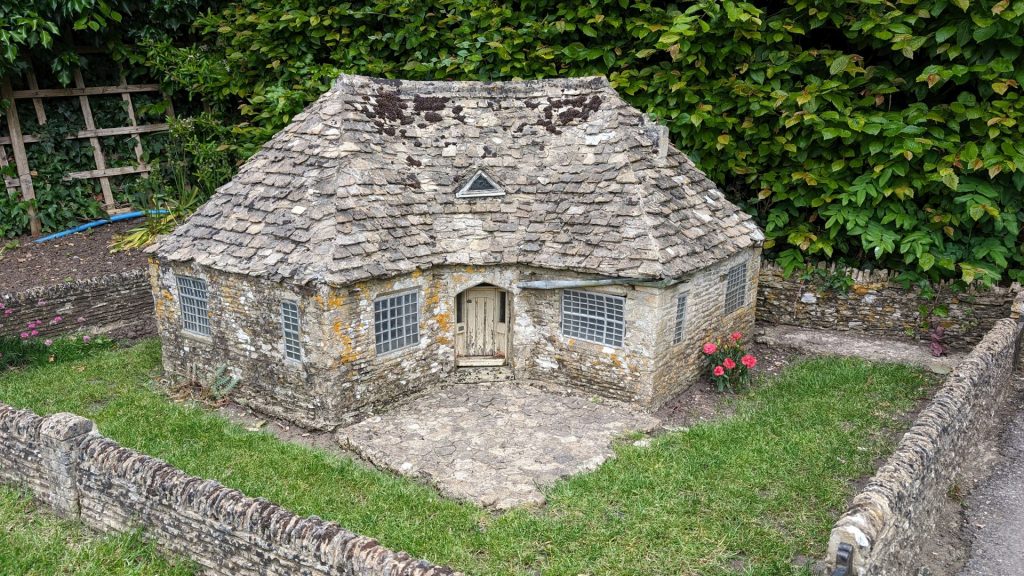
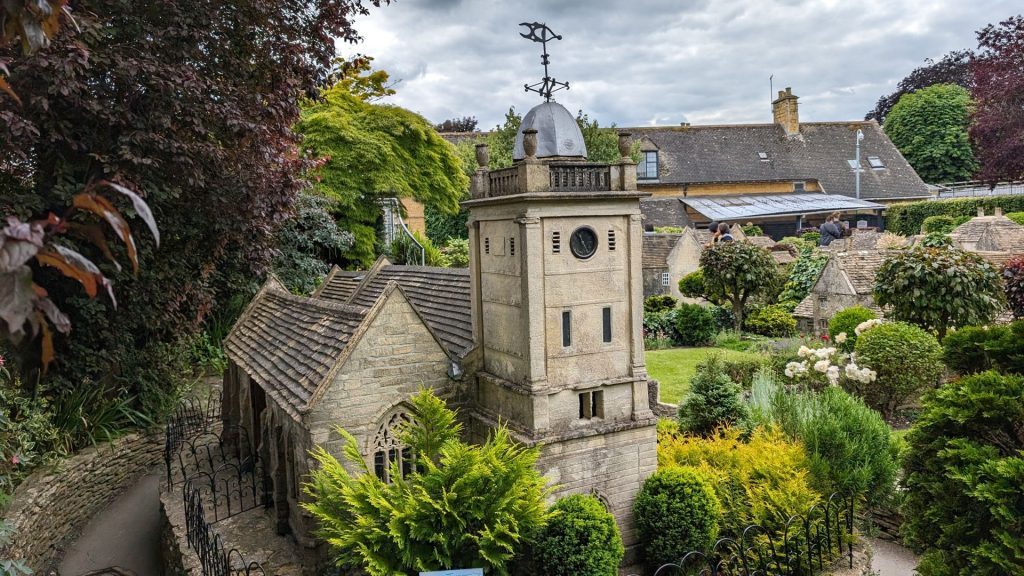
We went to Stow-on-the-Wold toward the end of the day (about 5:00 p.m.) and found most everything was closed. (Whaaaat!!) So it was a super short visit. The best part for us was the visit to St. Edward’s church. Why, you ask? Because of the door! Hidden away on the grounds of the historic St Edward’s Church Stow-on-the-Wold is a mystical Tolkien Door that looks like a portal that could transport you to another realm. With its studded wooden panels flanked by ancient yew trees and an old oil lamp hanging above it, you would be forgiven for mistaking this door for being something born of Middle Earth. Indeed, there is a local legend that says J. R. R. Tolkien visited this church and the entrance inspired his Doors of Durin in the Lord of the Rings trilogy.
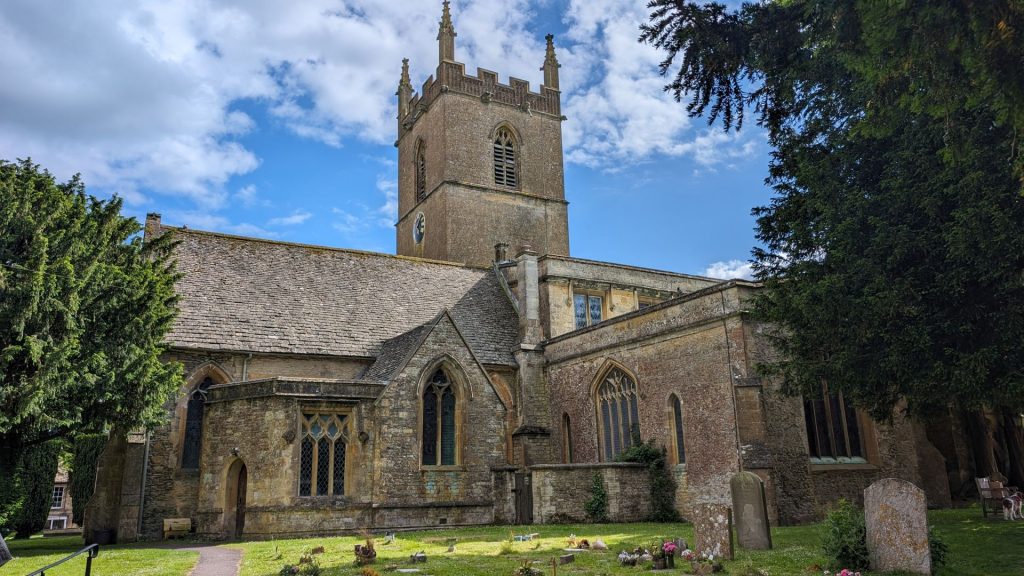
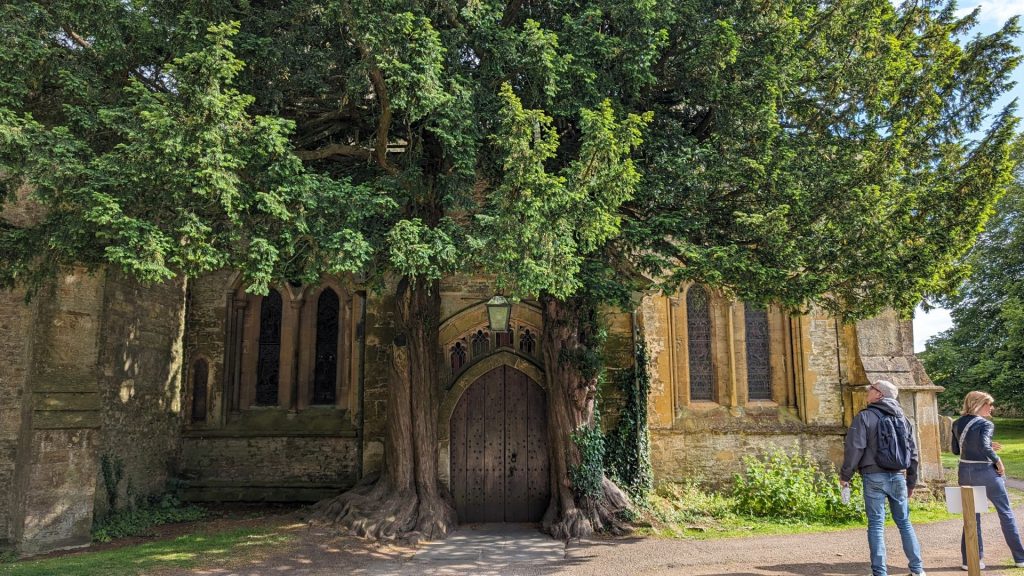
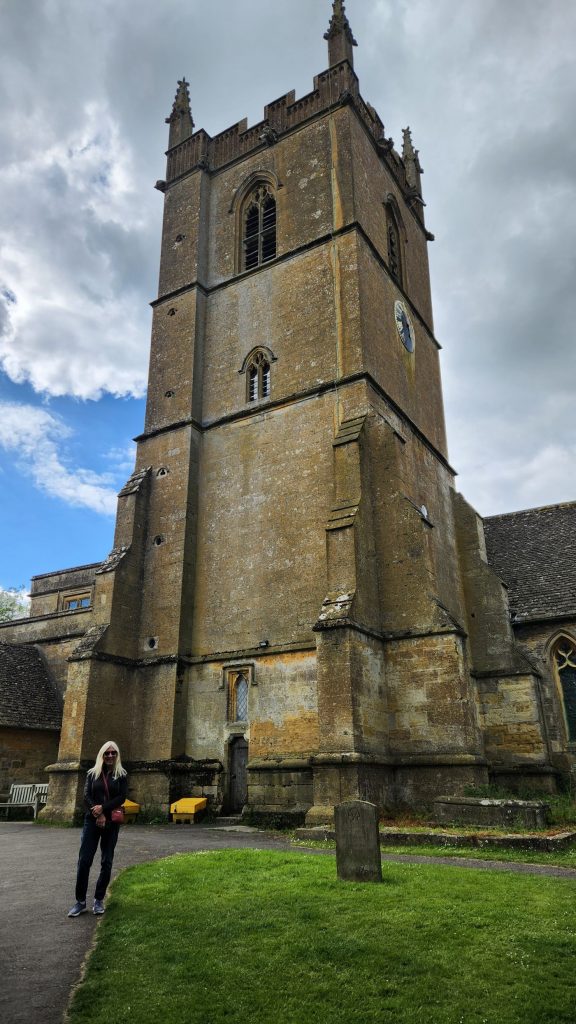
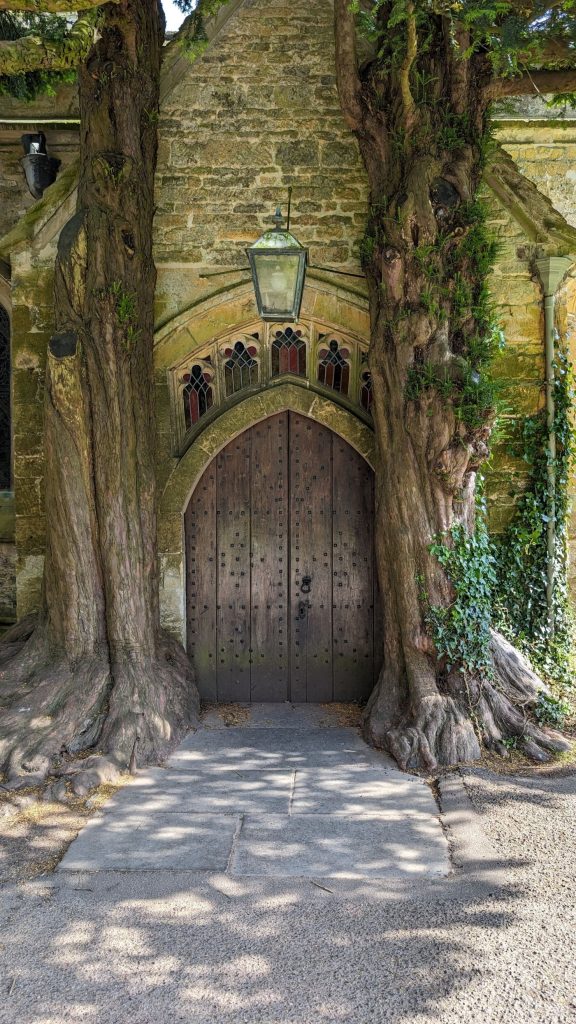
We stopped at Burton-on-the-water again for dinner and tasted a few types of gin and whiskey and bought this.
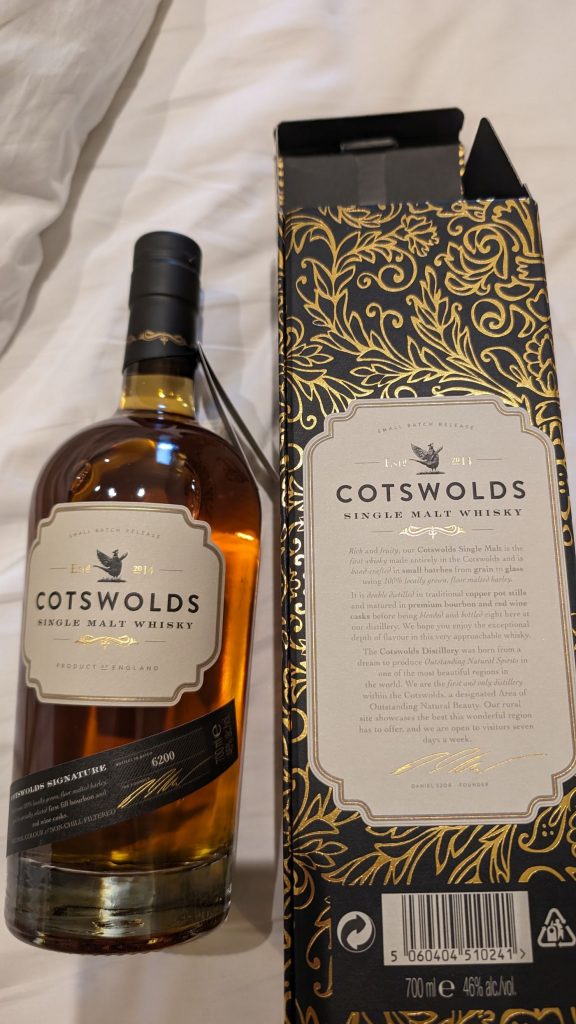
We visited Snowshill and Chipping Campden on our last day in the Cotswolds. We spent so much time at Snowshill that we had the same experience as the day before: nearly everything was closed when we arrived at Chipping Campden. But I wouldn’t do it any differently because I loved Snowshill Manor, and the best part of Chipping Campden was just walking around the town anyway!
Snowshill
Nestled amidst the picturesque Cotswold hills, Snowshill exudes charm, surrounded on three sides by steep rises that enhance its idyllic setting. Renowned for its unspoiled beauty, the village offers sweeping views across the Severn Vale to the west. Crossing the parish is Buckle Street, an ancient thoroughfare steeped in history. Snowshill Manor, under the stewardship of the National Trust, stands as a beacon of architectural beauty within the village. Its picturesque gardens, both outside and within, house the remarkable and eclectic collections of Sir Charles Wade.
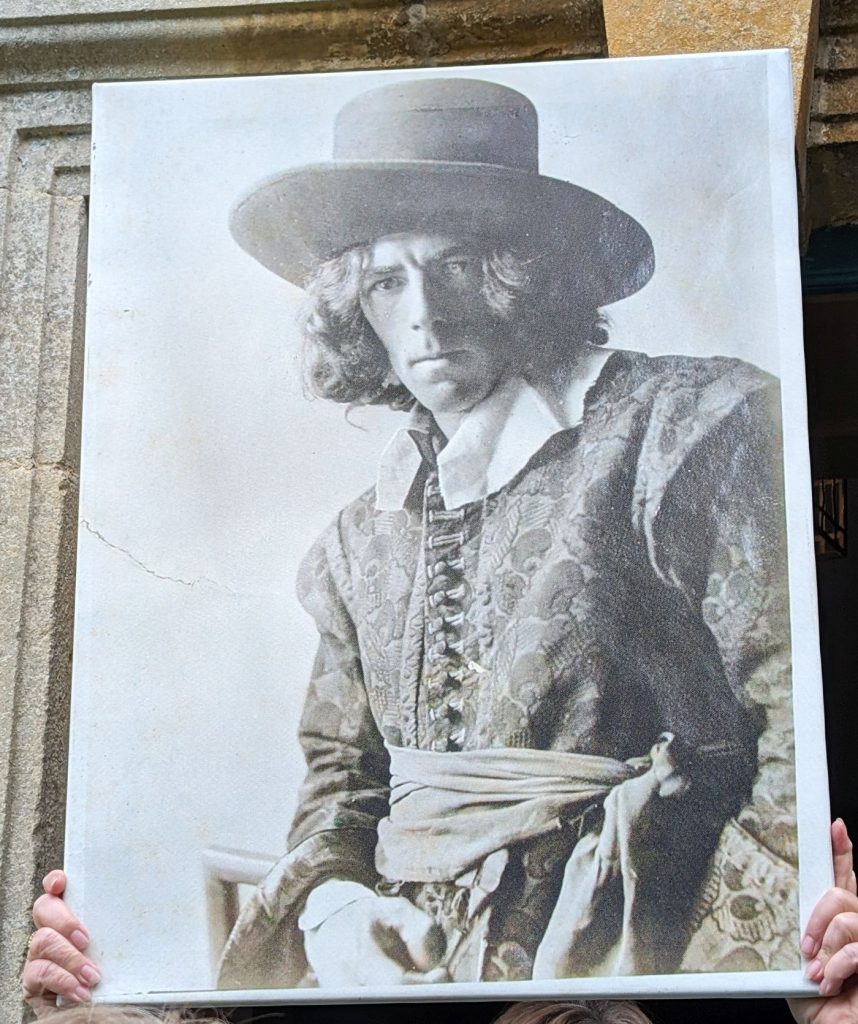
Charles Wade was the son of Paget Augustus and Amy Wade, who owned several sugar estates in the West Indies. Wade’s paternal grandmother, Mary Jones, was a black woman whom his grandfather married in 1885 in St. Kitts before moving the family to England in 1879. Their children and grandchildren, including Charles, were among the largest Black landowners in St. Kitts.
When Wade’s father died in 1911, Wade inherited a share in the family sugar business, leaving him independently wealthy.
In 1919, after service in France during World War I, Wade purchased the estate at Snowshill, which he restored – first the manor house, then the gardens – over the next four years. Having started collecting at the age of 7, Wade eventually built up a collection of more than 22,000 items of furniture, clothing, paintings, and many other pieces which reflected his interest in color, design and good craftsmanship. He housed the collection in the manor house at Snowshill, choosing to live in a small cottage in the garden. He continued to add to his collection over the years. The objects he collected included musical instruments, clocks, bicycles, and 26 sets of samurai armor. Wade gave the estate to the National Trust in 1951.
Despite the international flavor of the displays, Wade purchased nearly all of the objects in the UK. He purchased items that made him happy. He spent most of his time restoring objects before adding them to the displays.
There is a plaque on the walk to the manor that says something along the lines of love it or loathe it. I loved it! Michael thought it was okay. 🙂 Here is just a sampling of the 22,000 items on display.
Fun fact: All of the clocks run but they aren’t set to the correct time.
Before we go there, here is a picture of the French toast Michael and I each had for breakfast. The version we received was more like a croissant sliced in thin pieces then layered then, well . . . I am not sure what they did with it, but it was delicious!
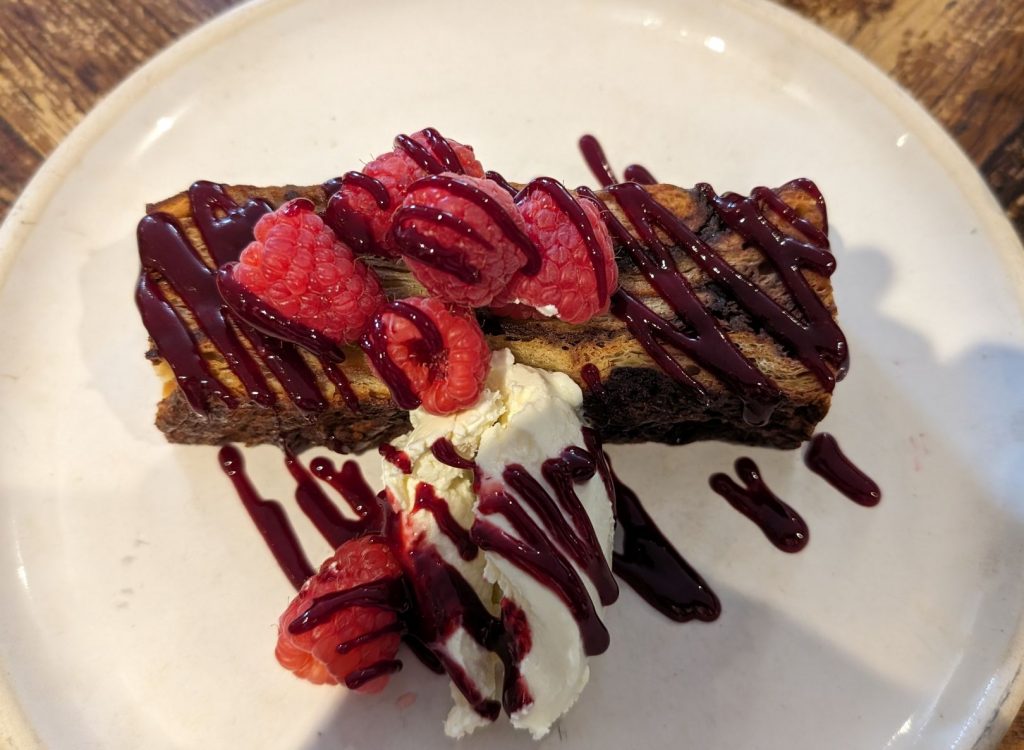
Now, pictures of the town and then the manor.
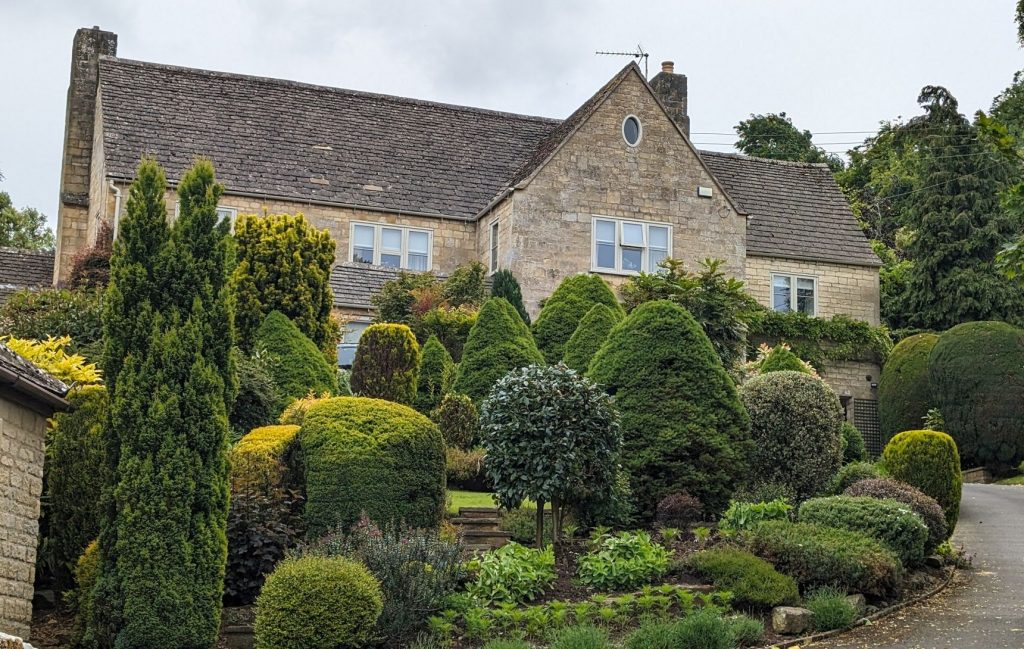
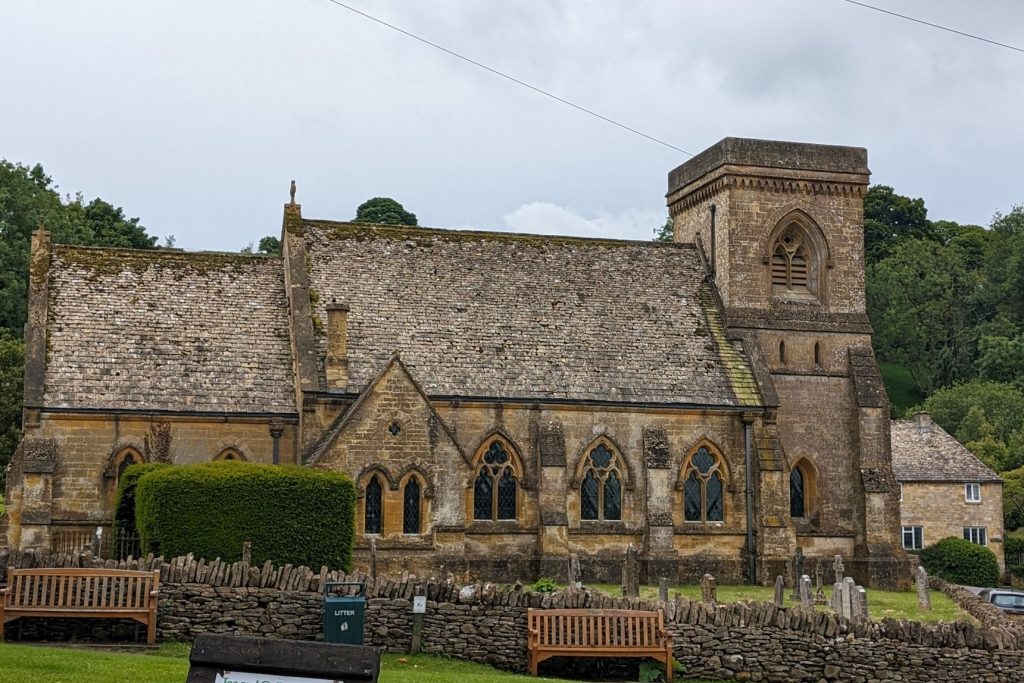
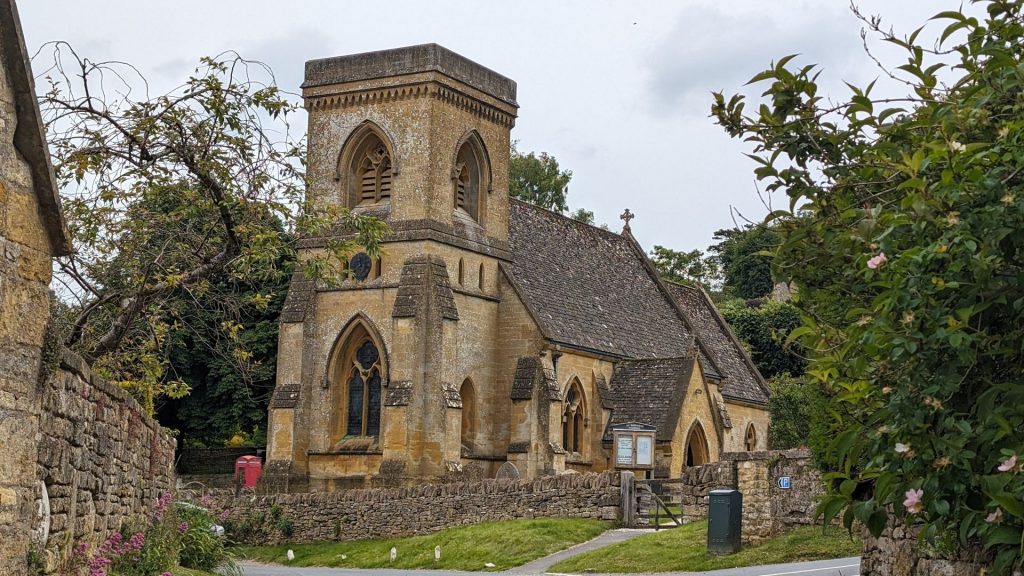
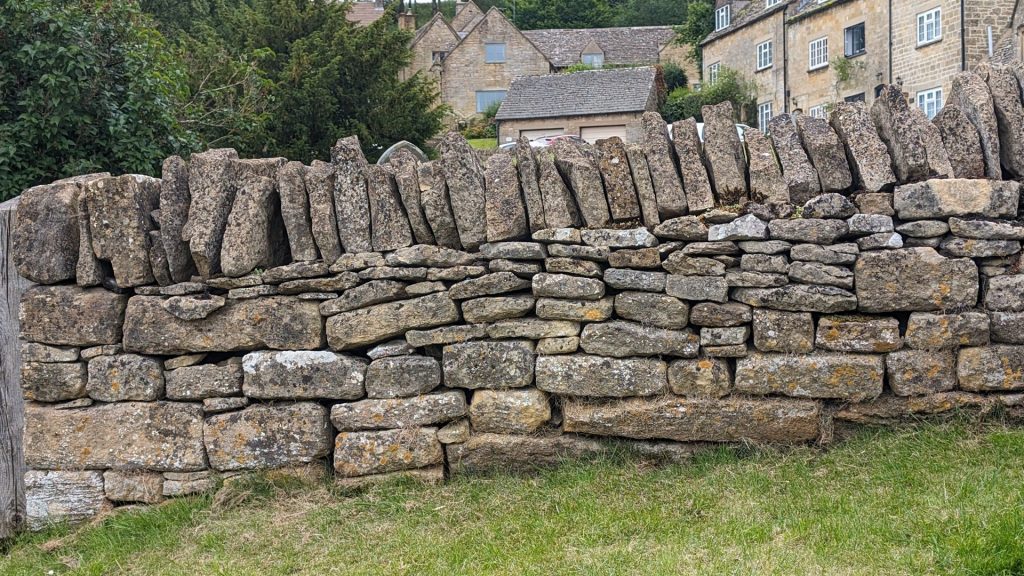
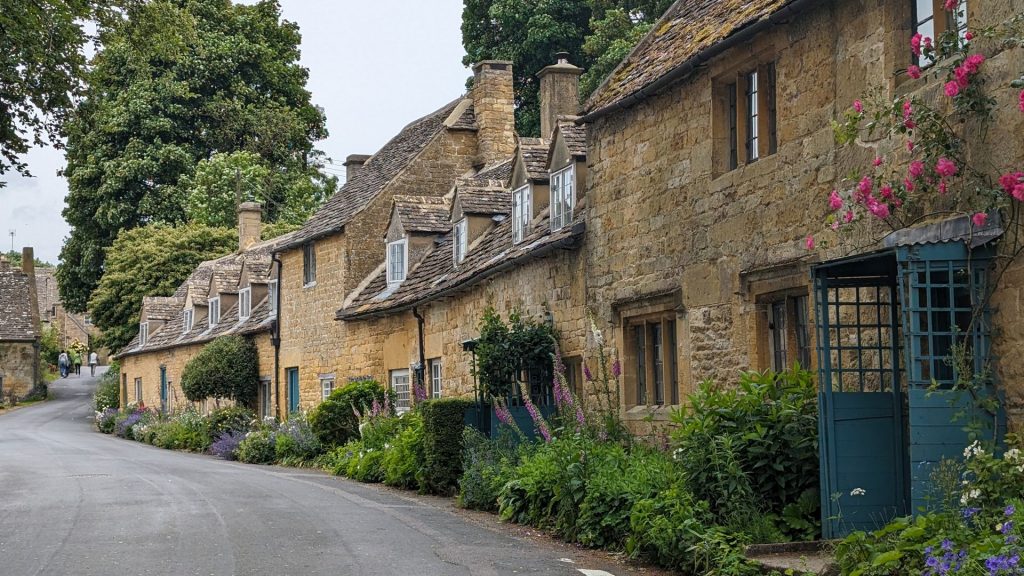
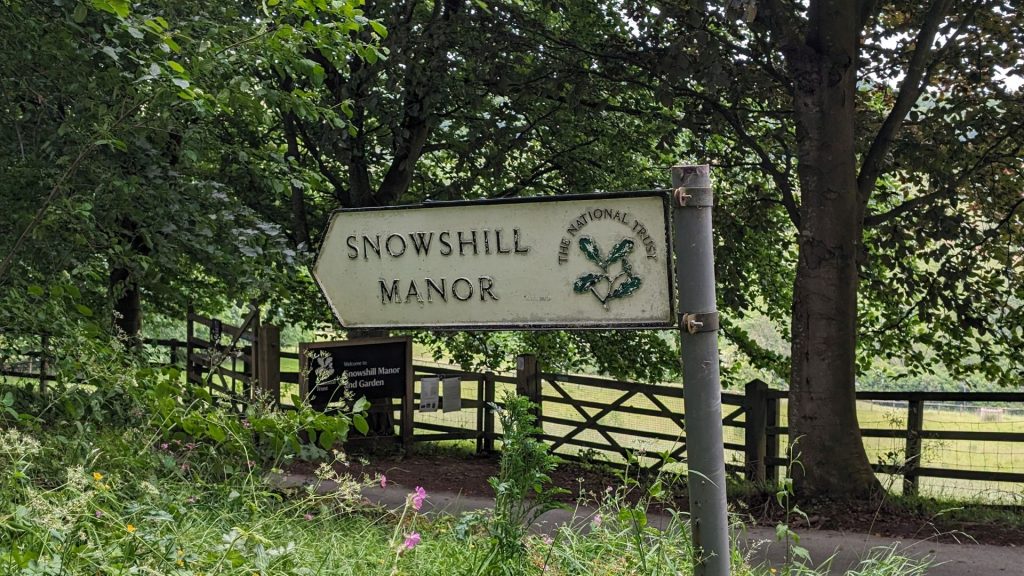
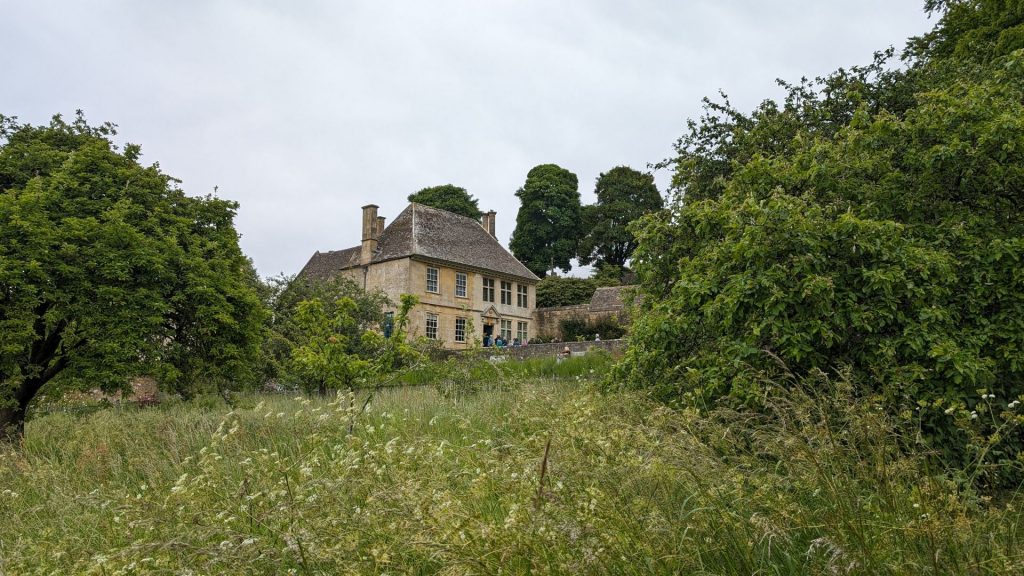
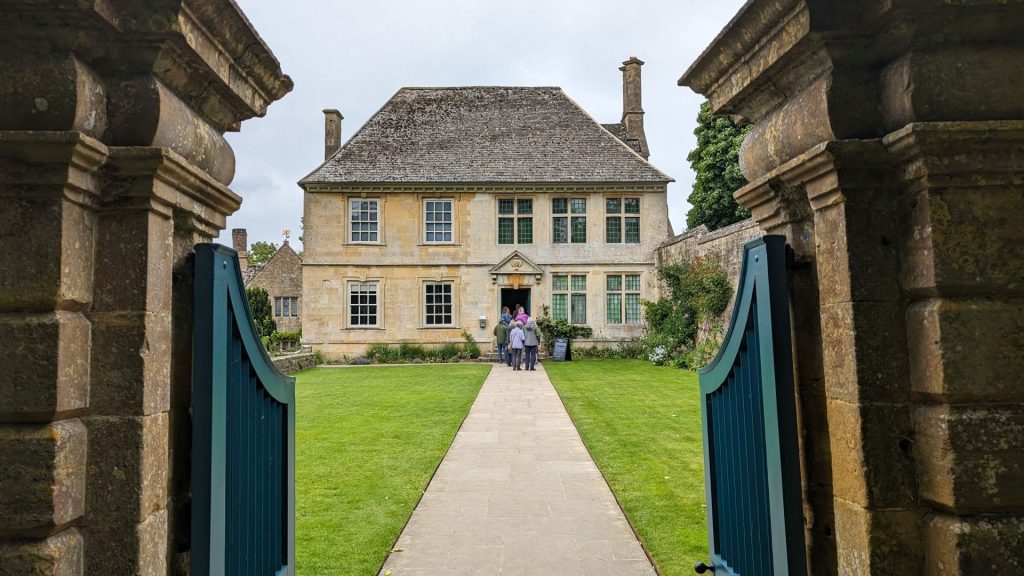
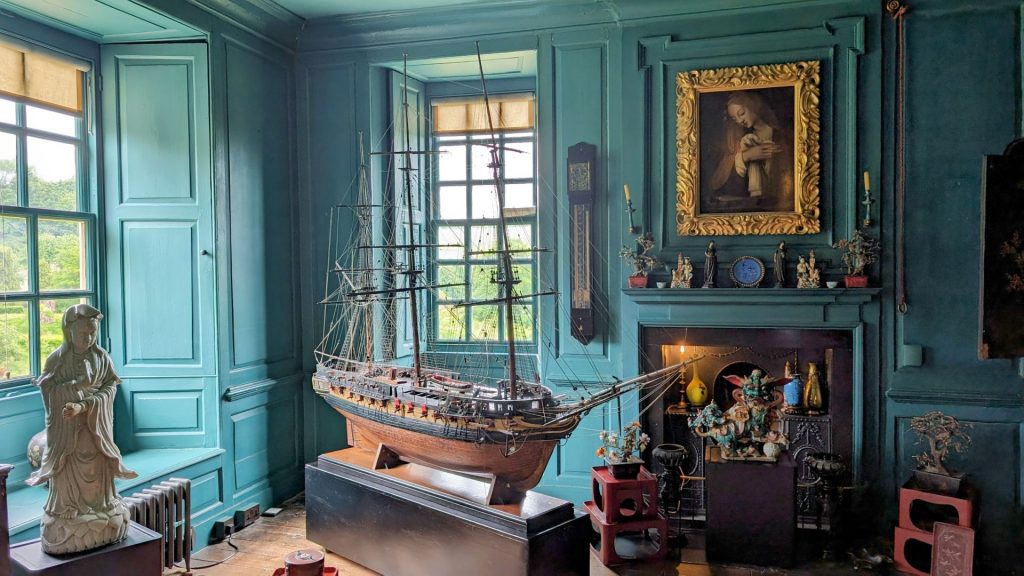
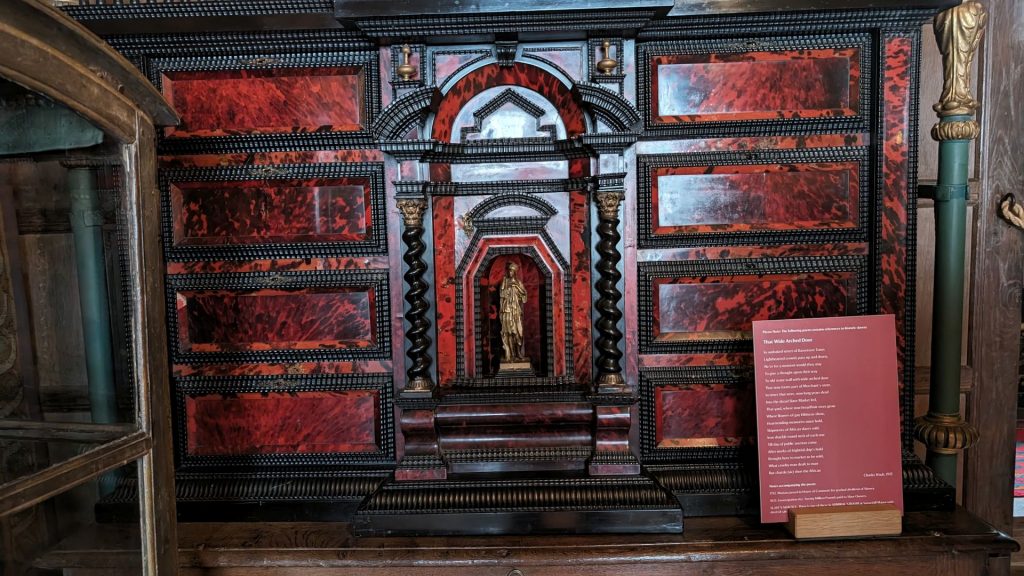
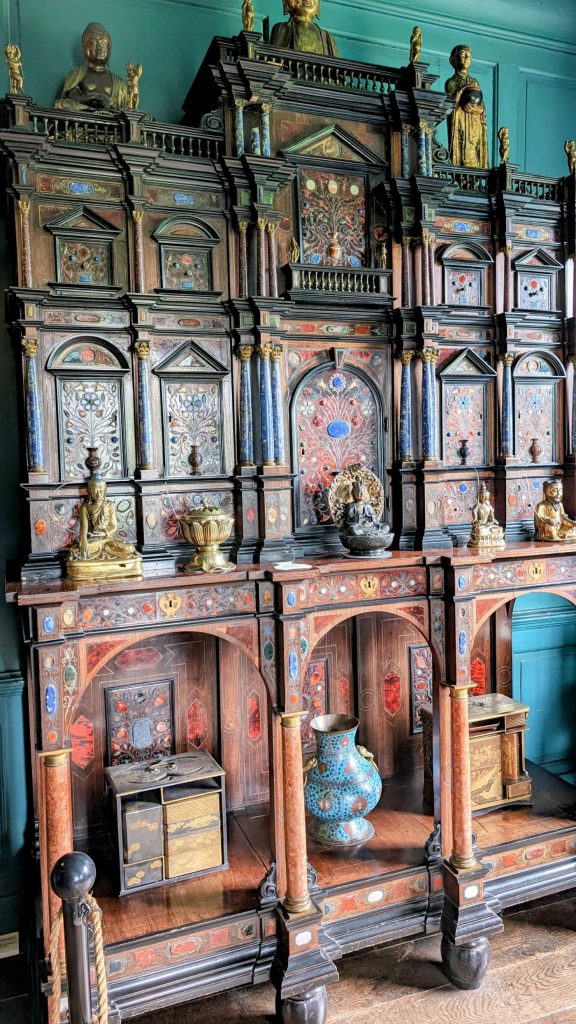
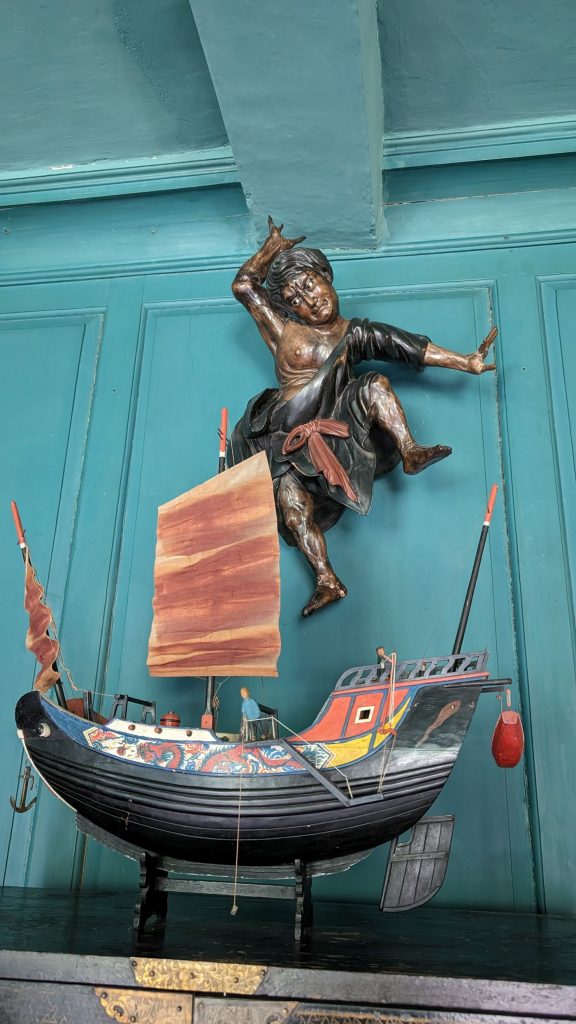
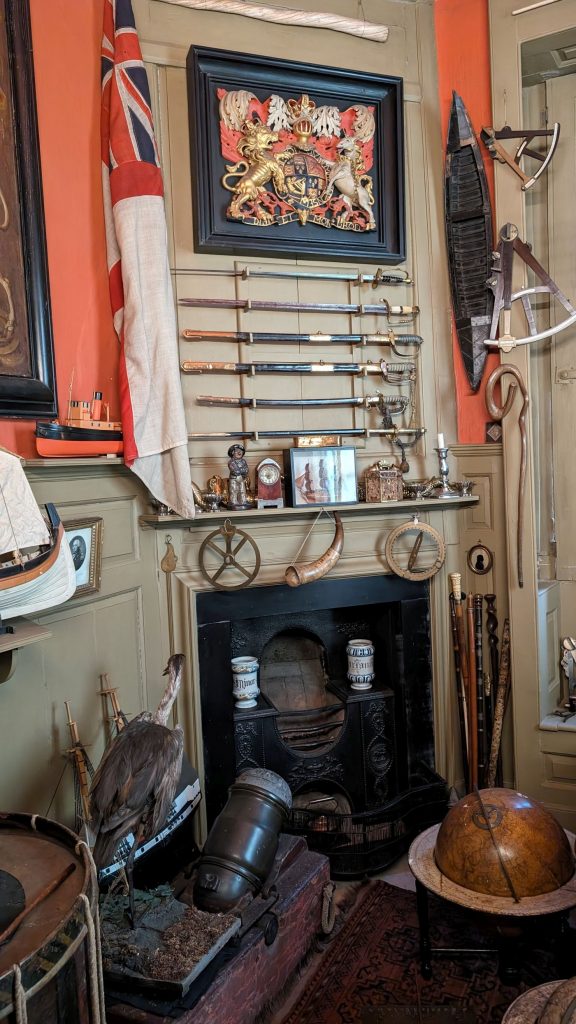
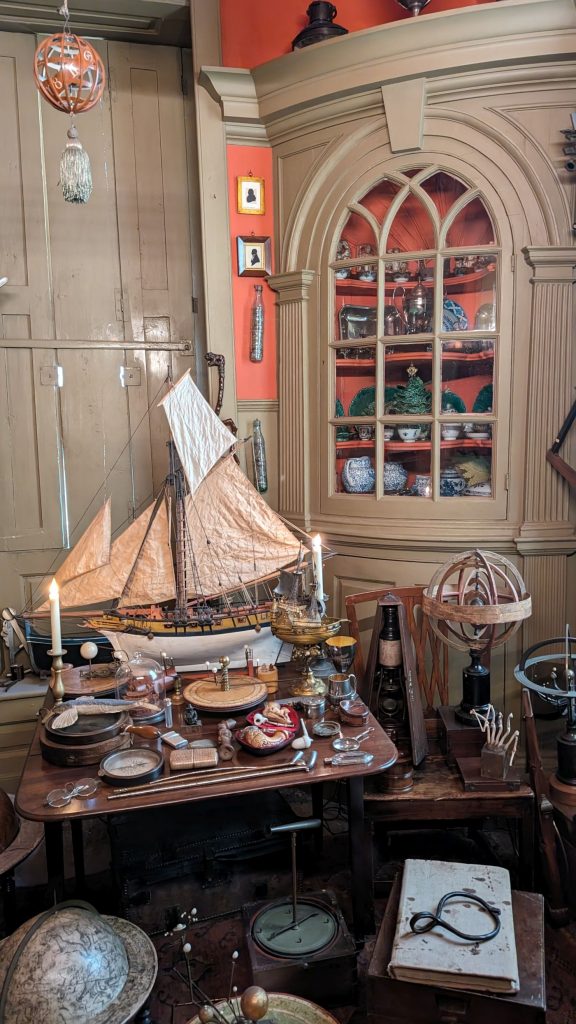
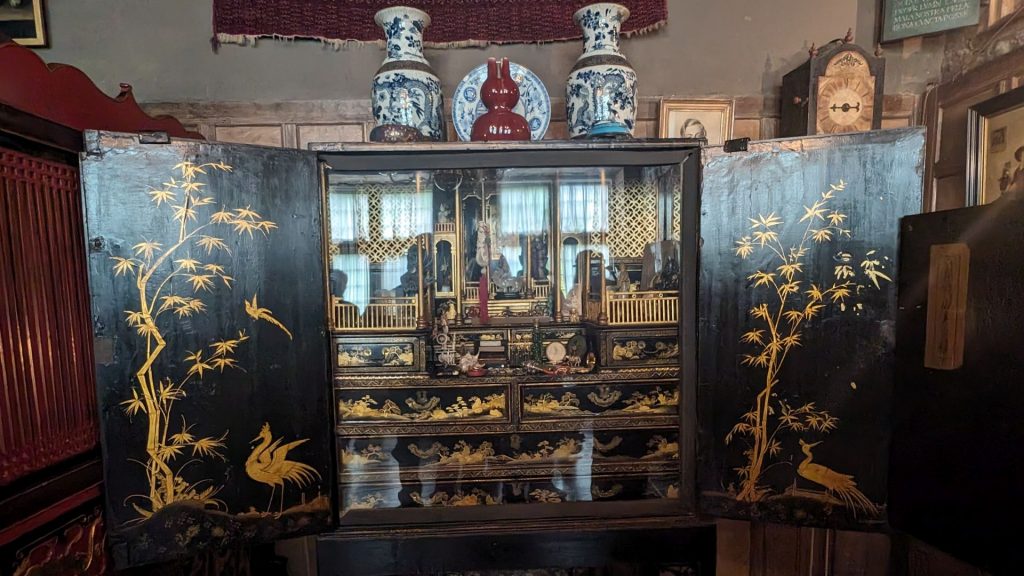
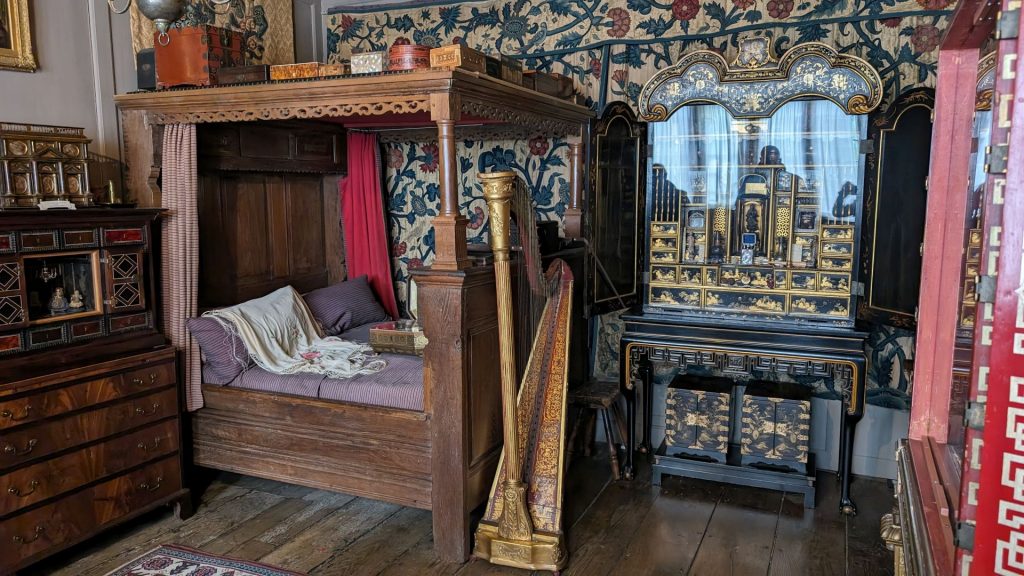
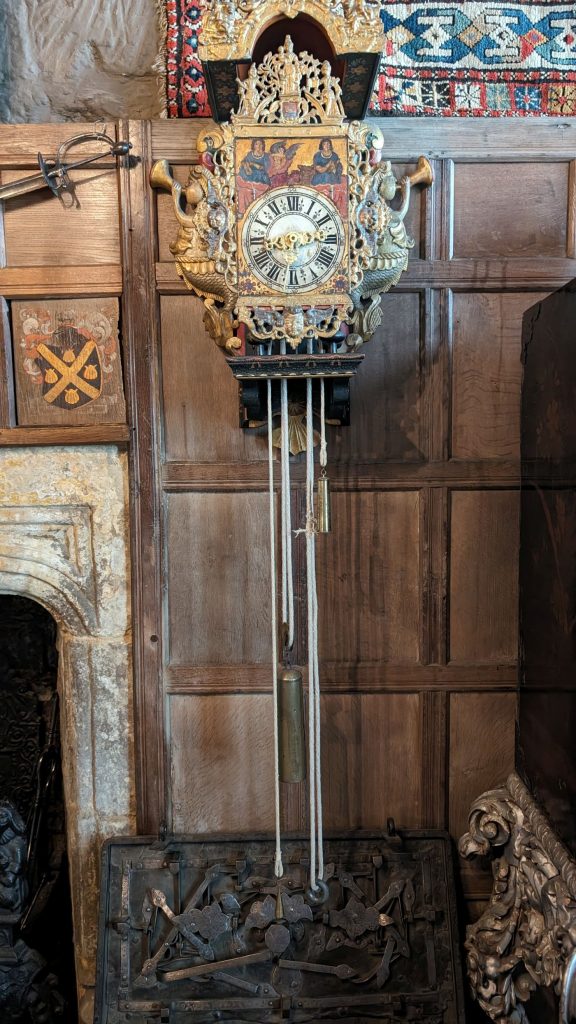
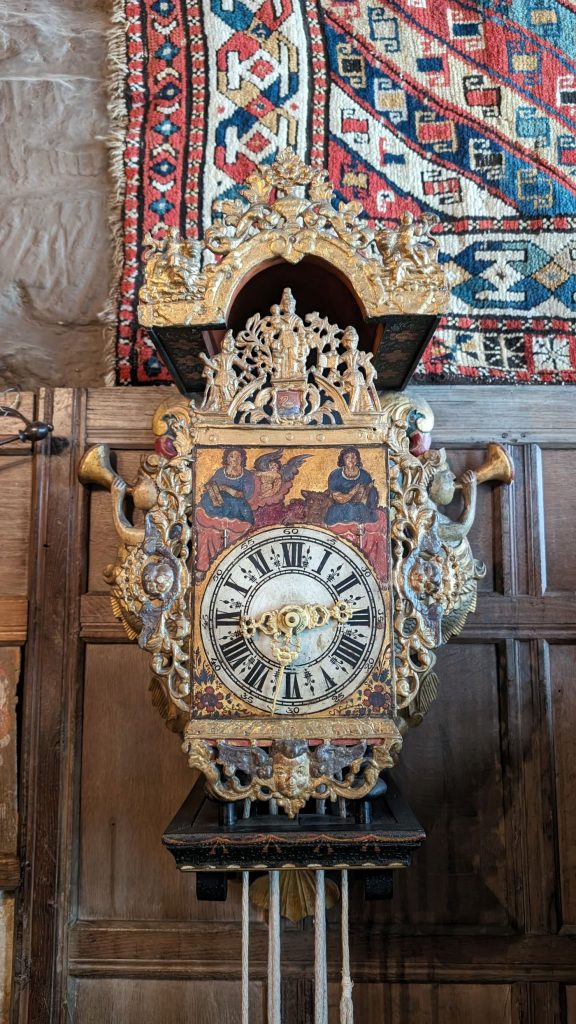
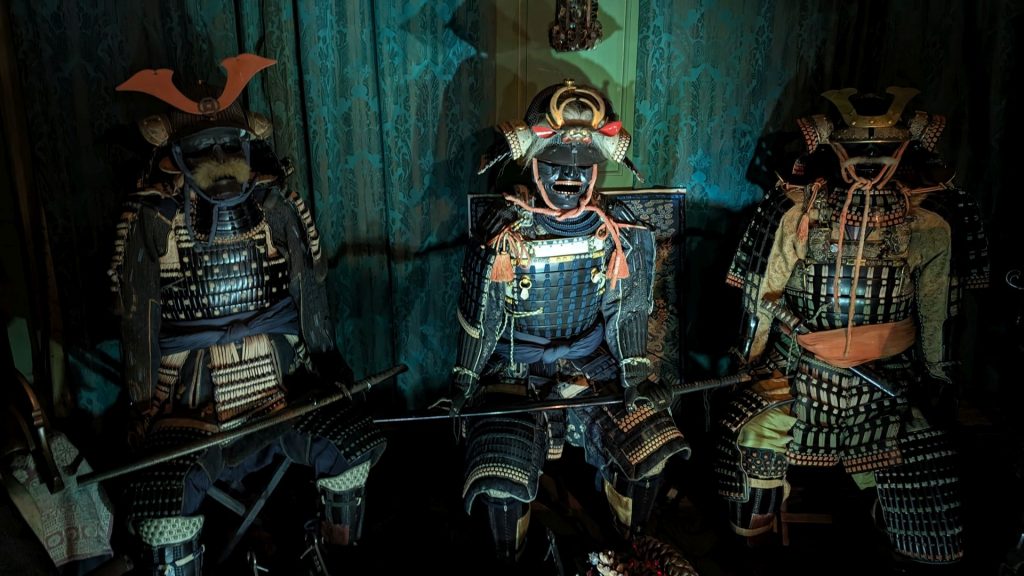
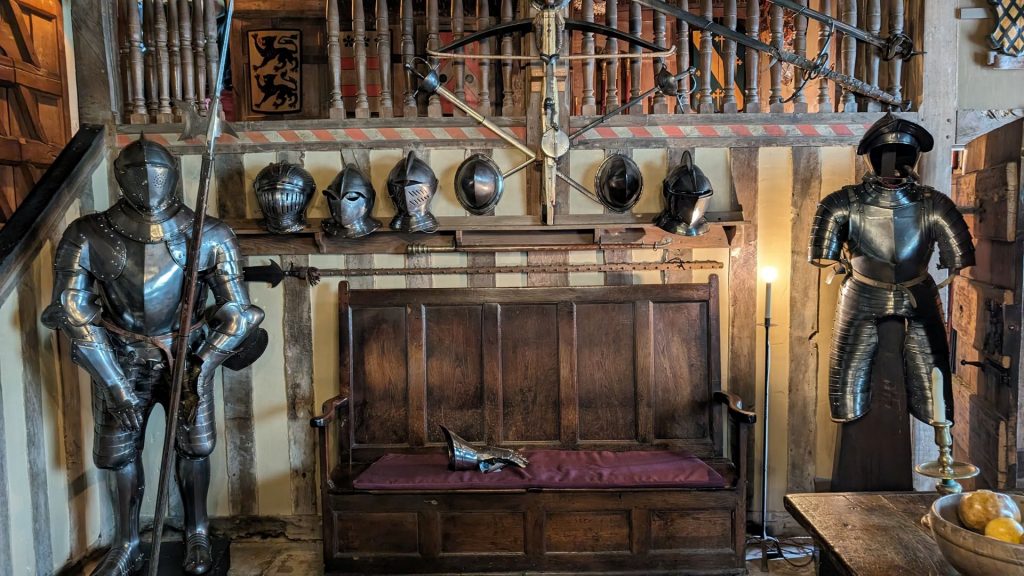
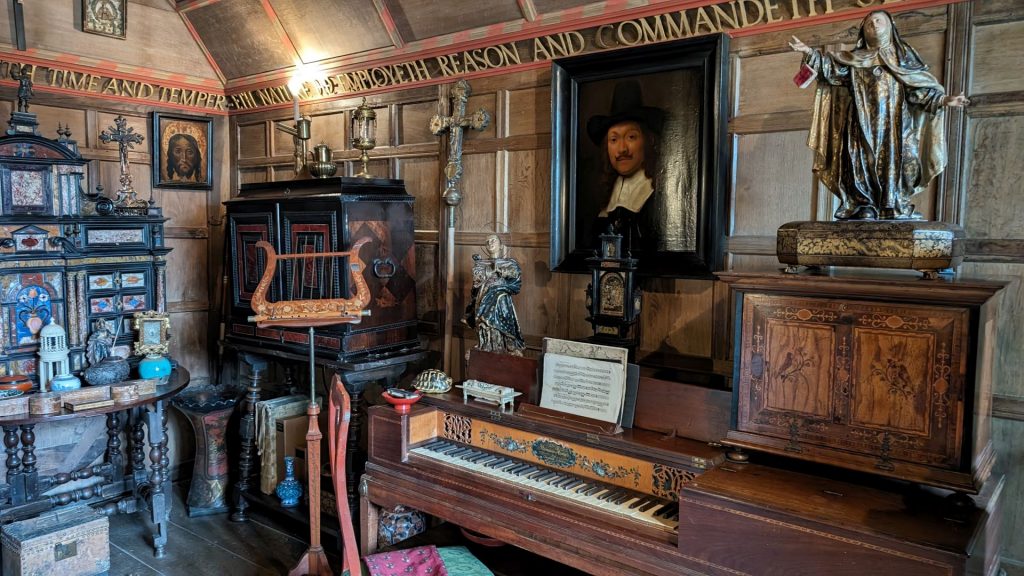
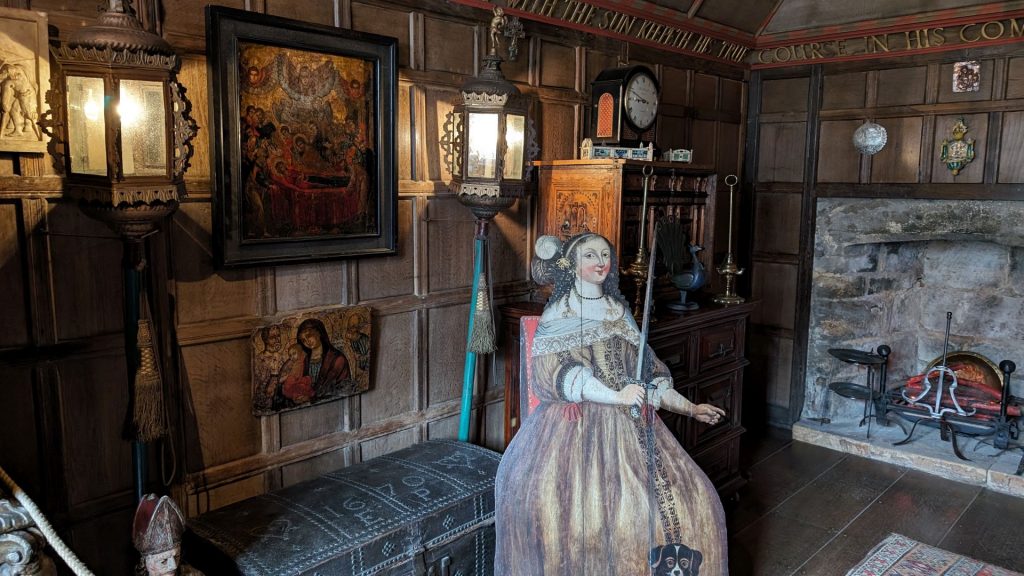
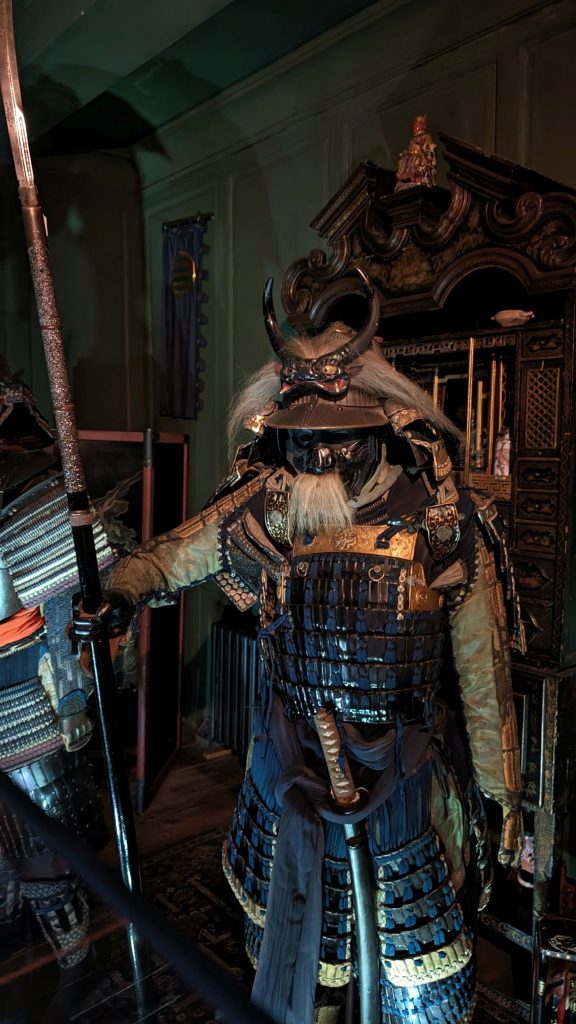
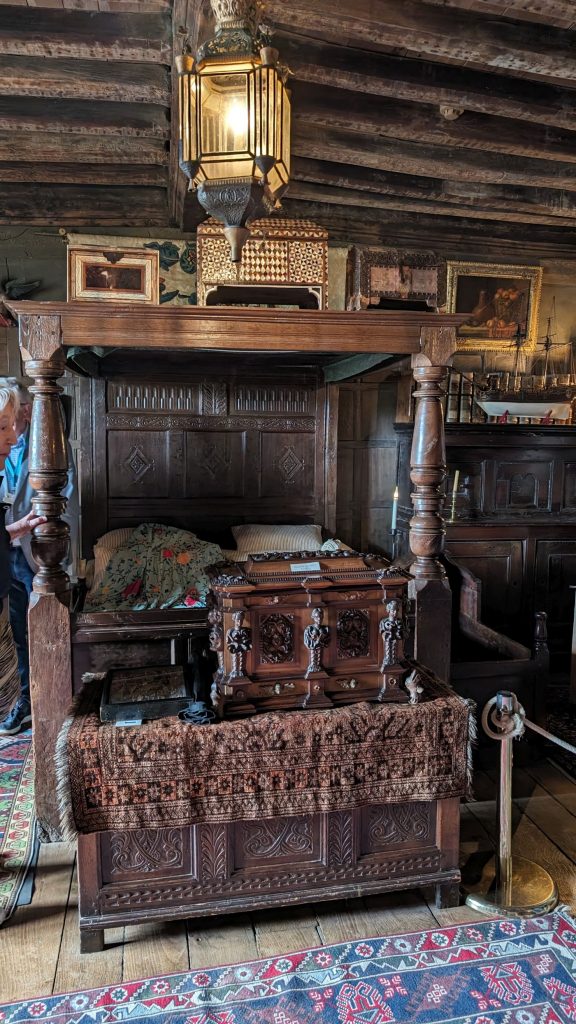
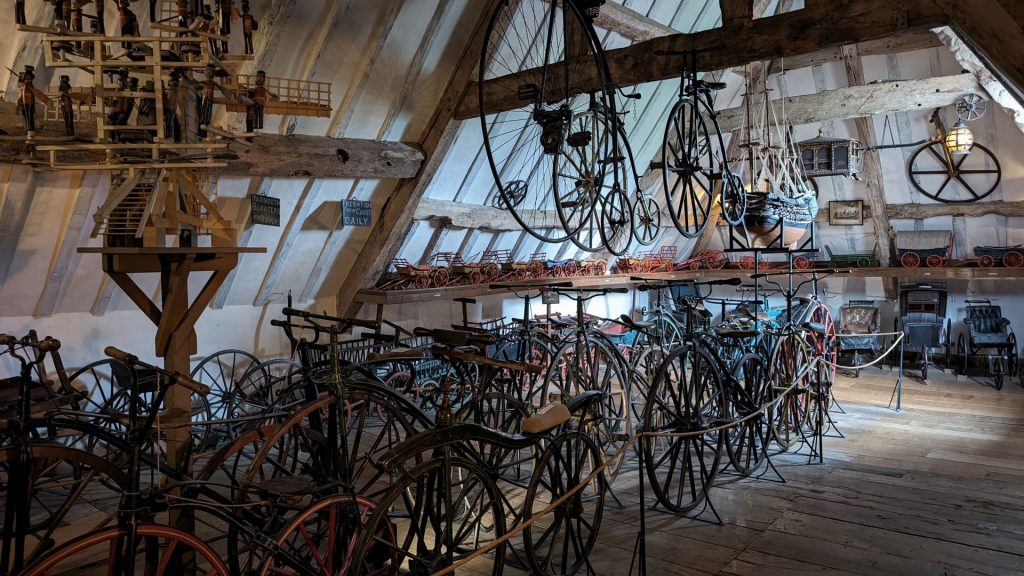
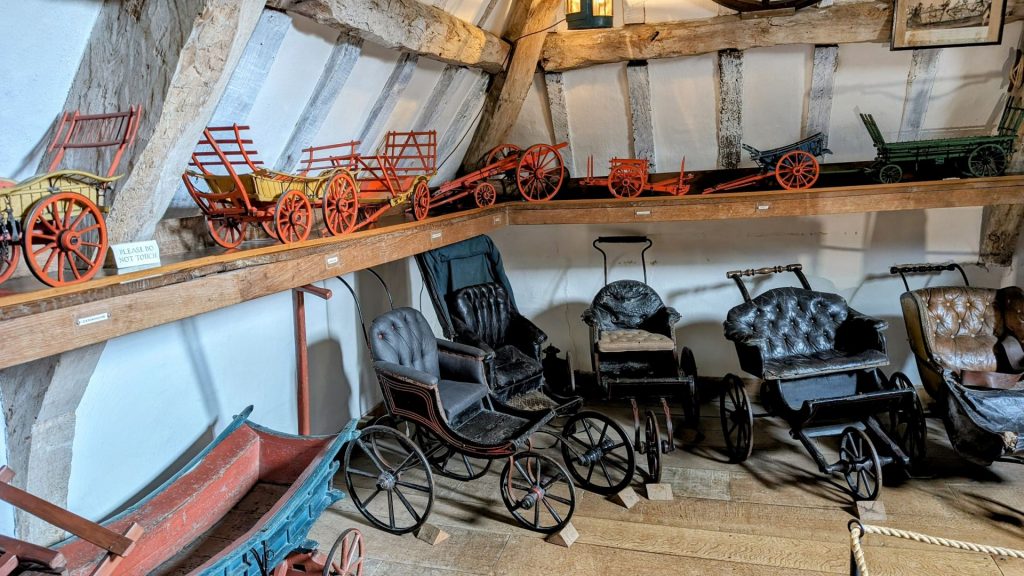
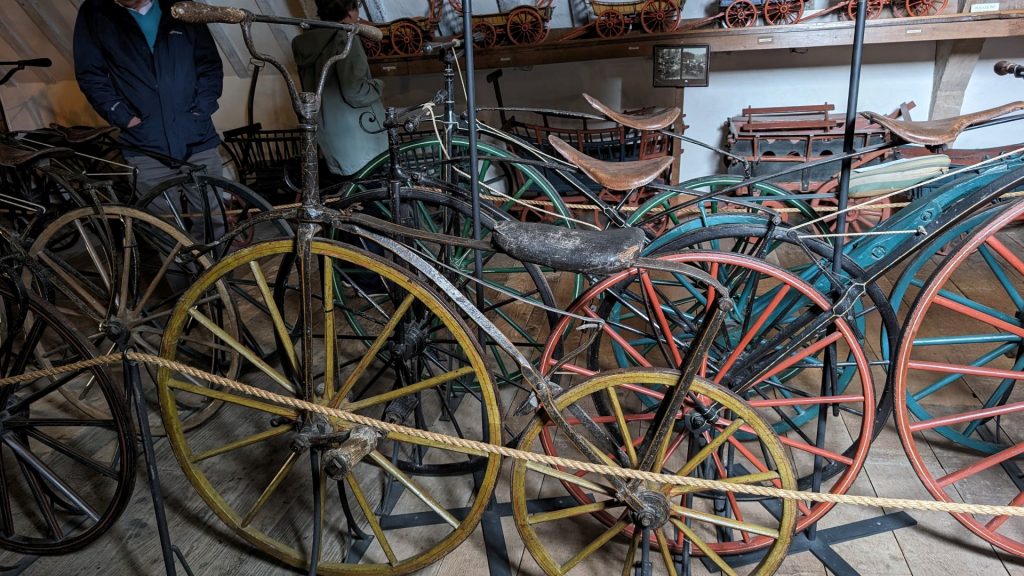
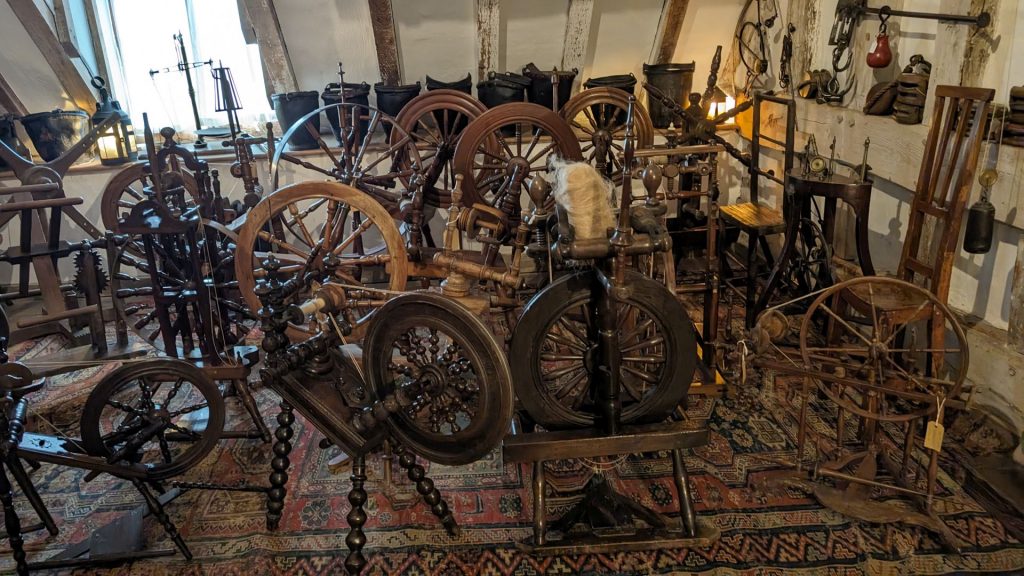
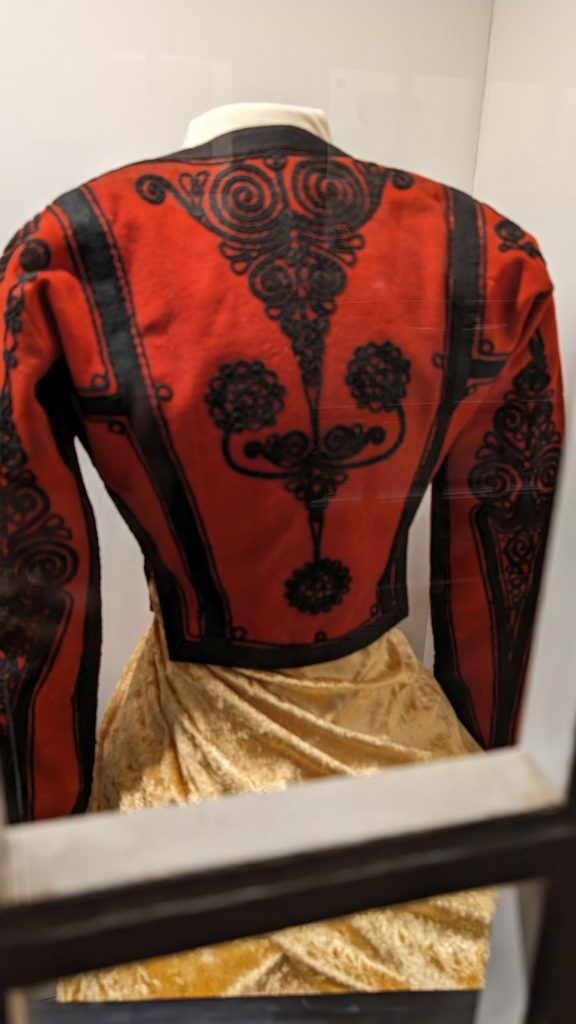
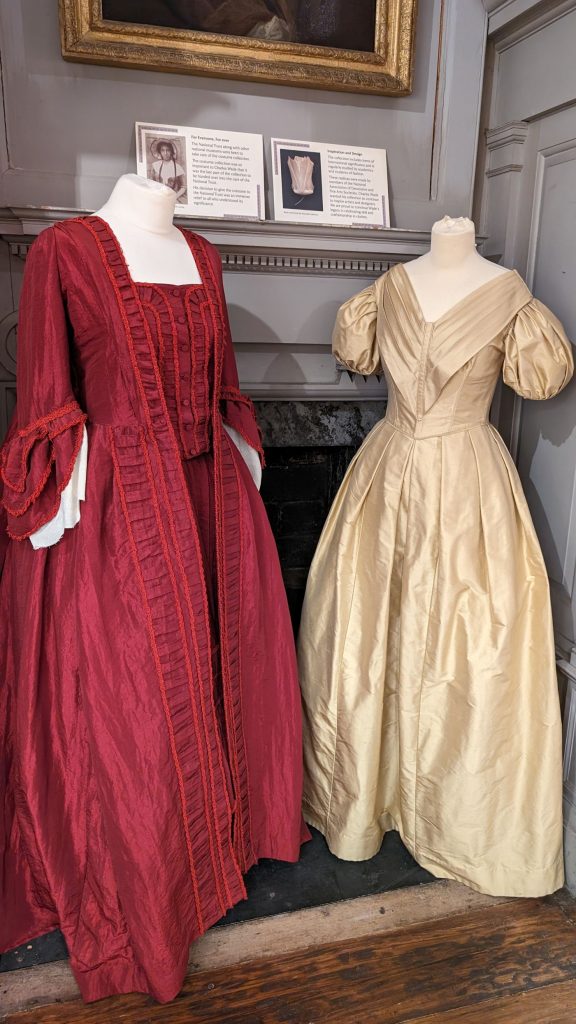
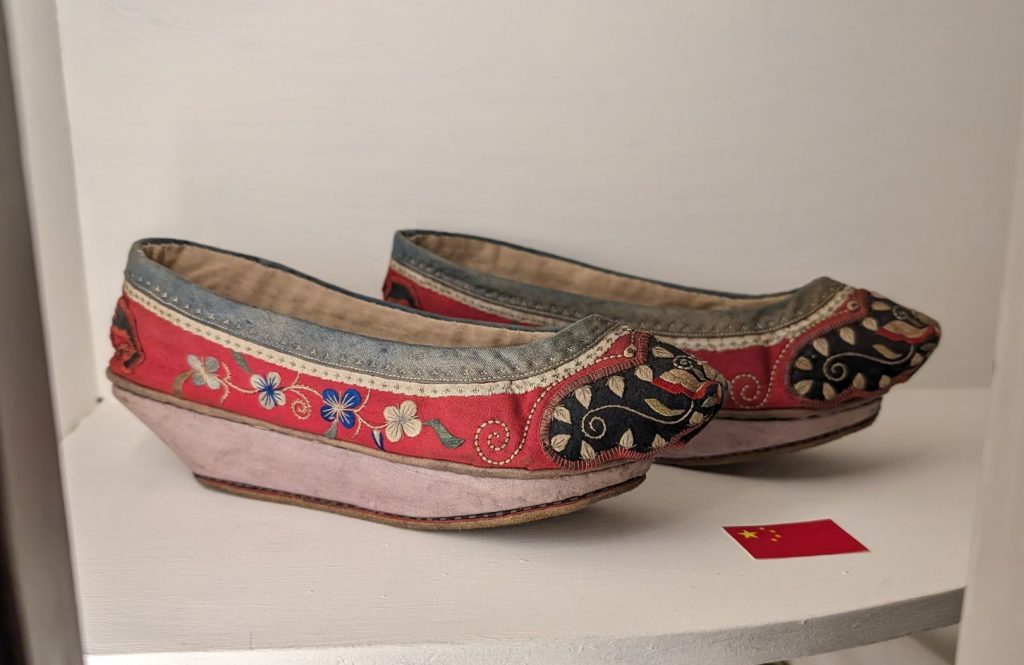
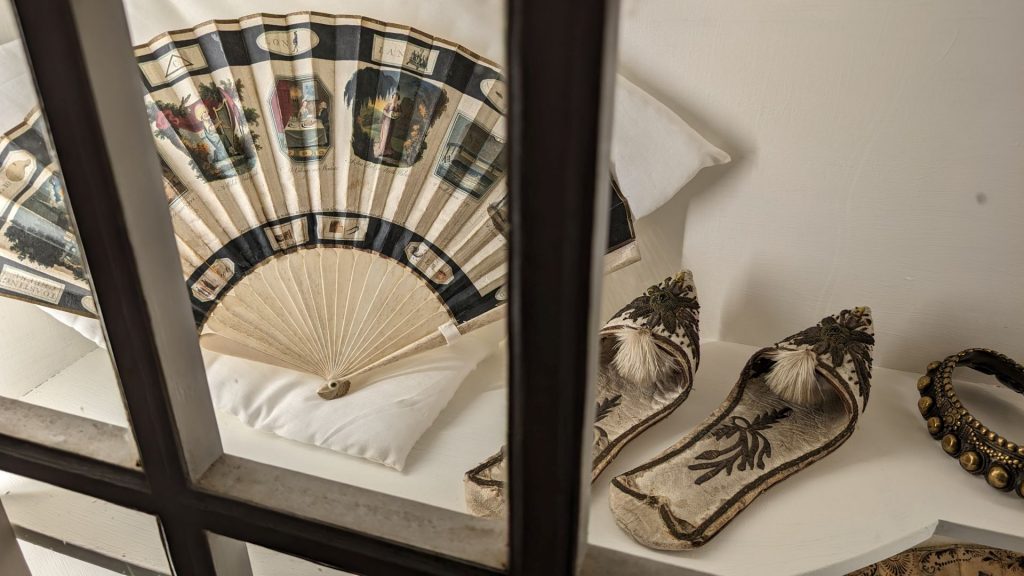
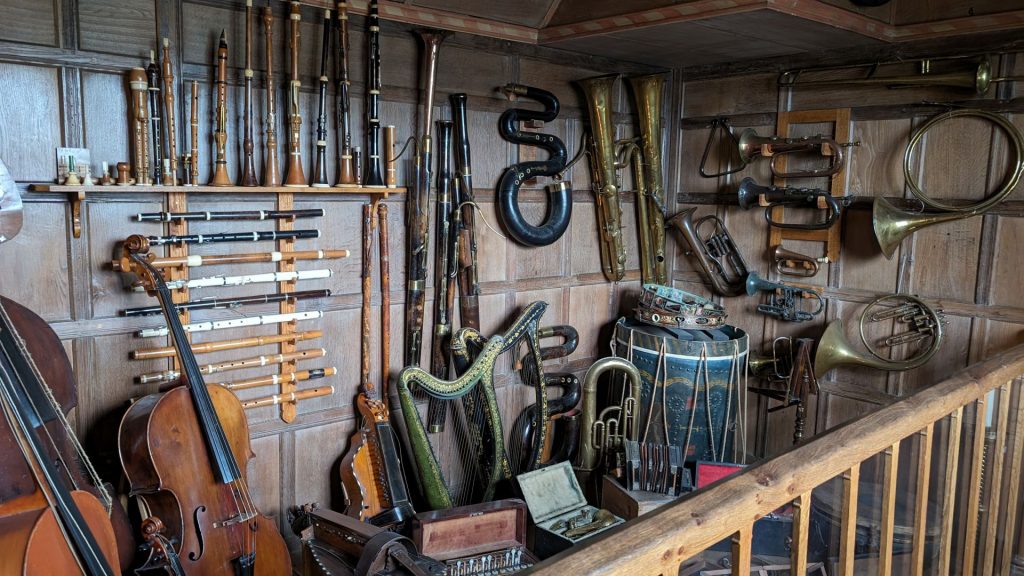
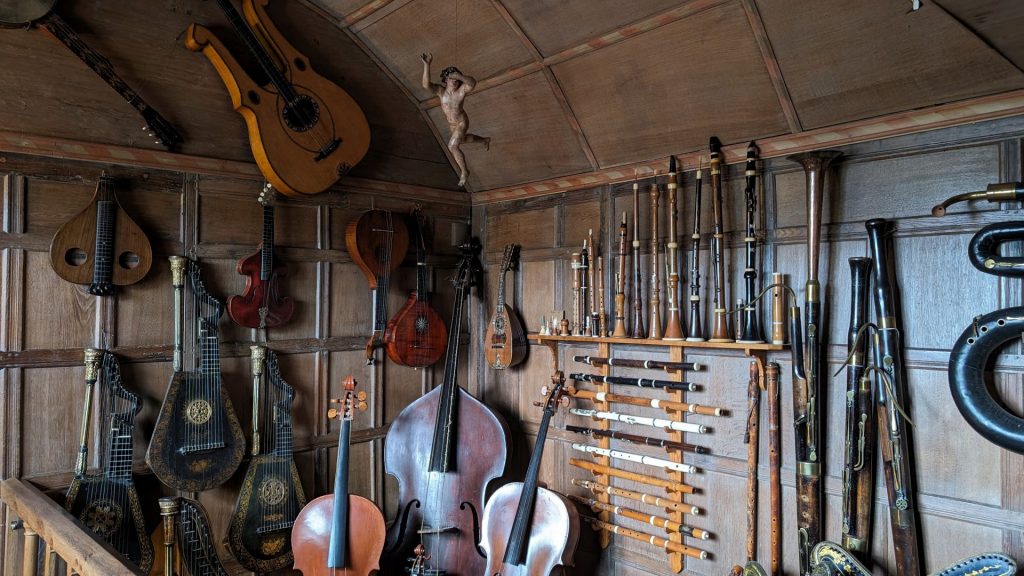
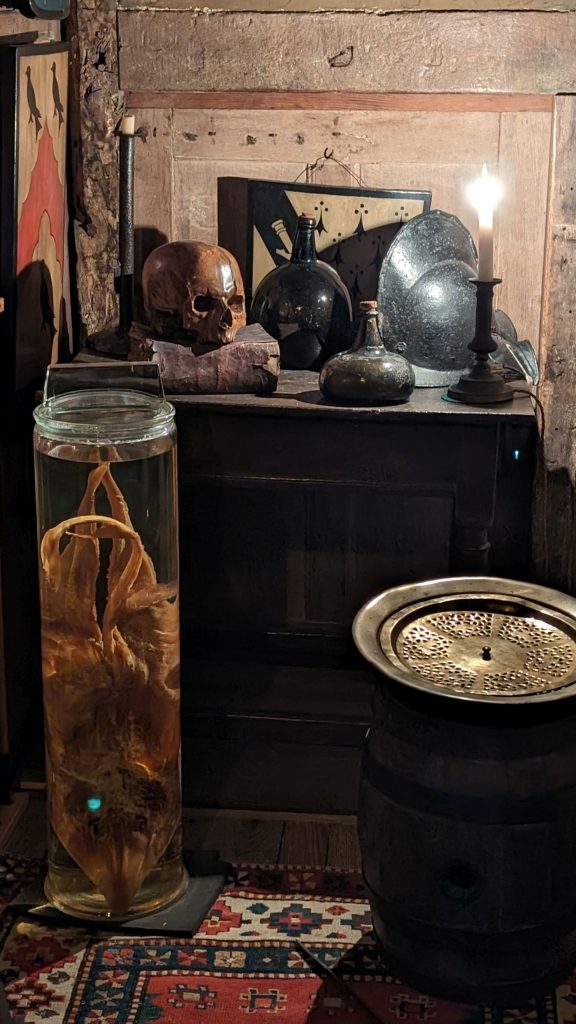
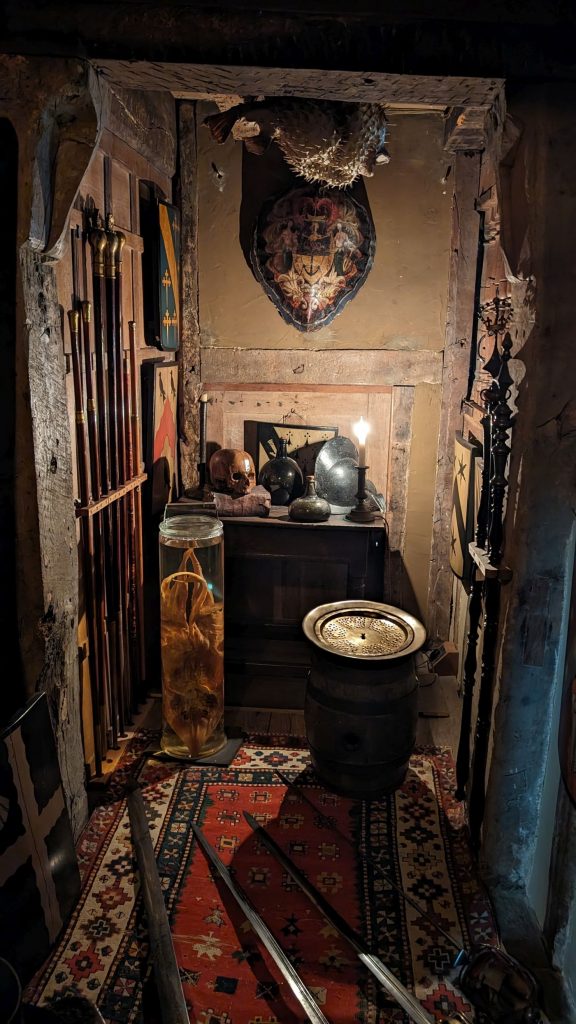
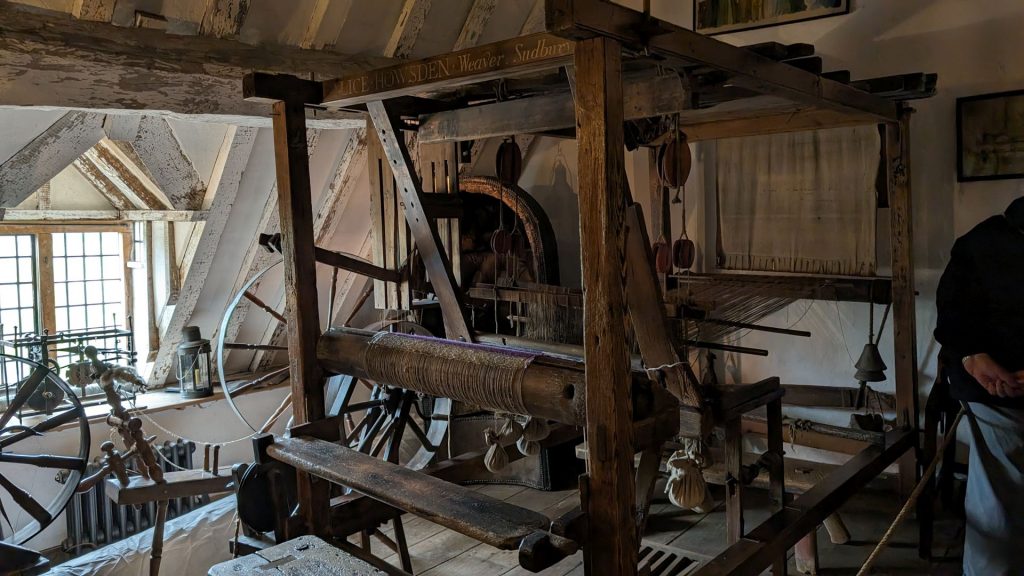
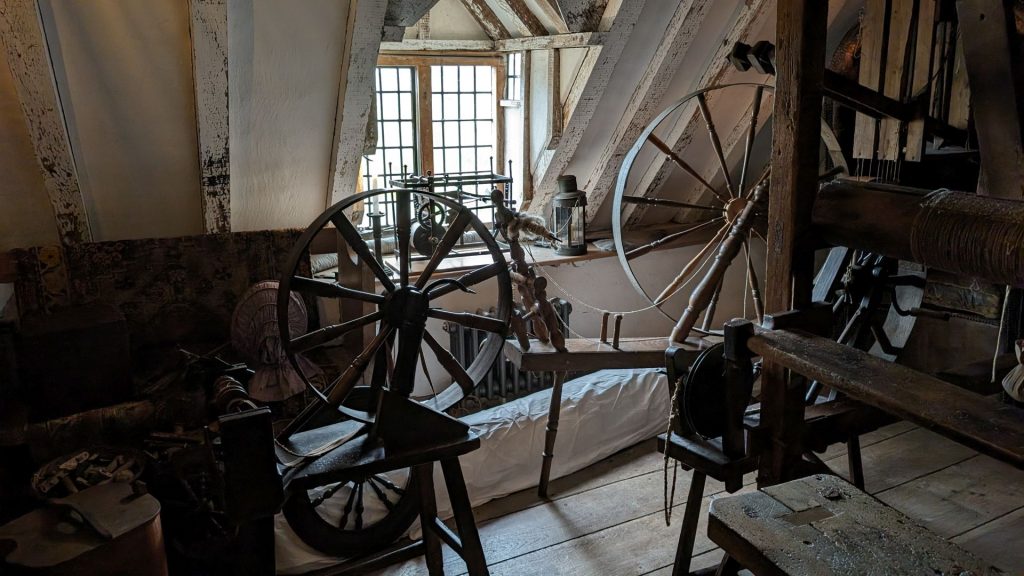
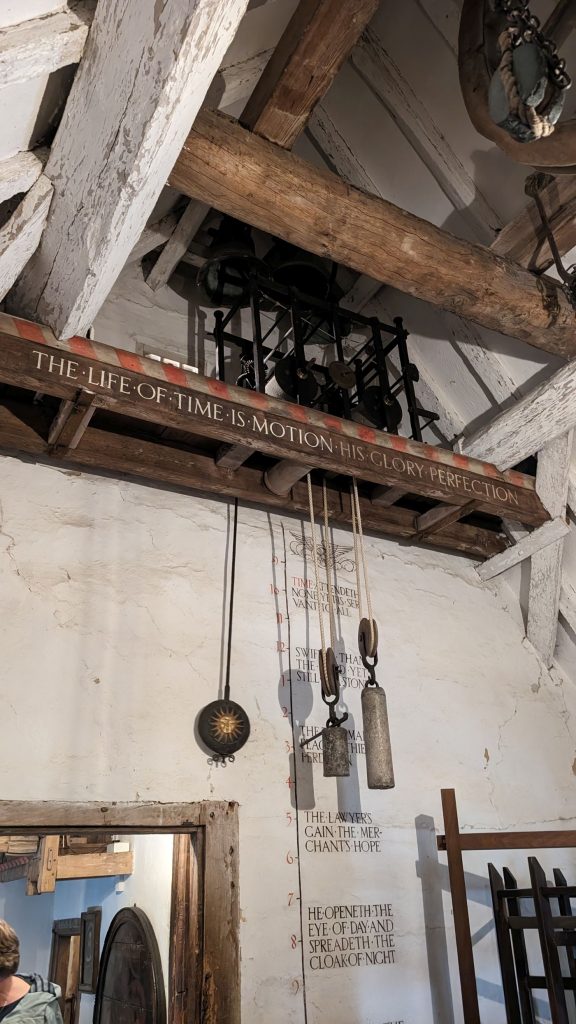
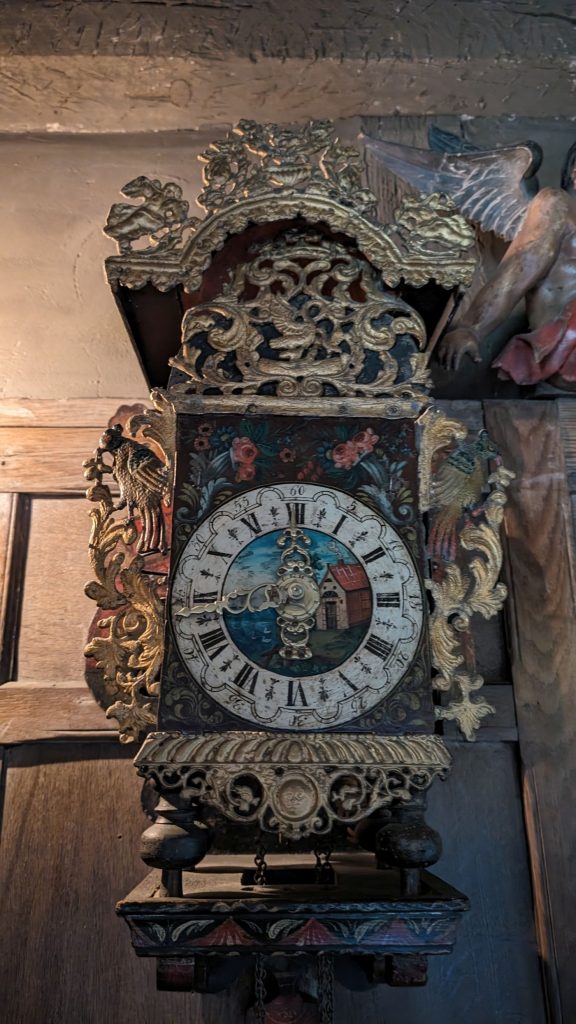
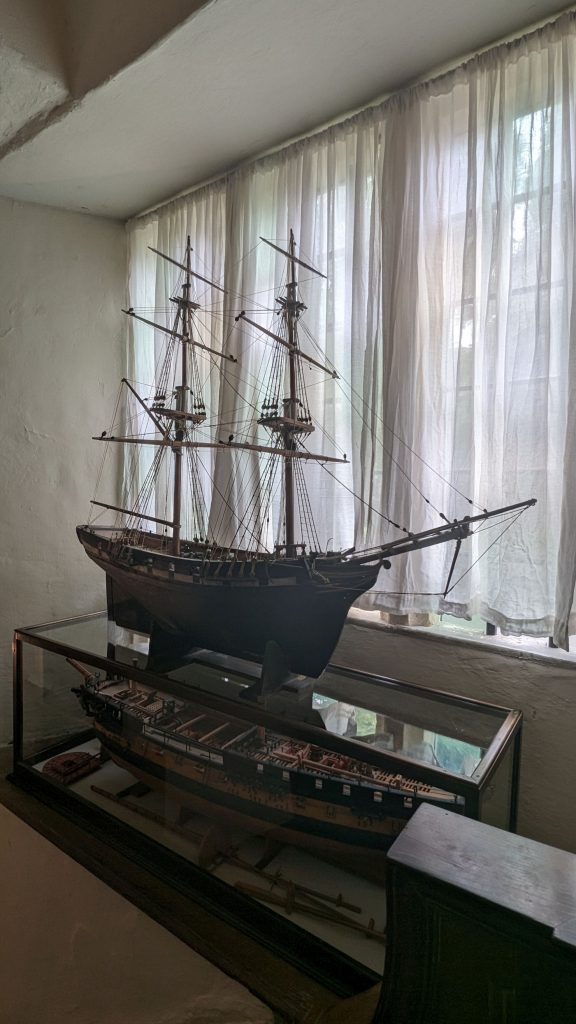
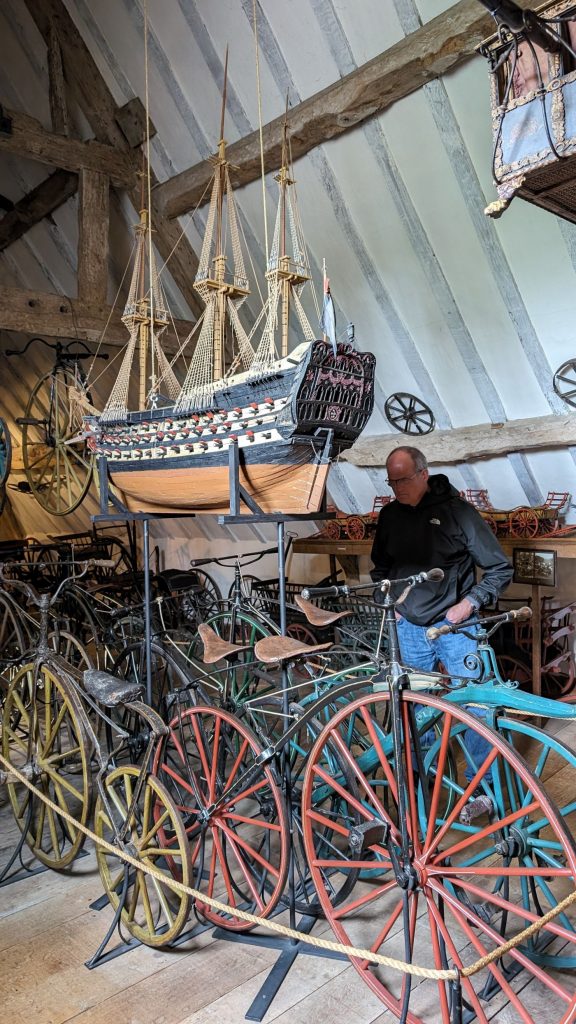
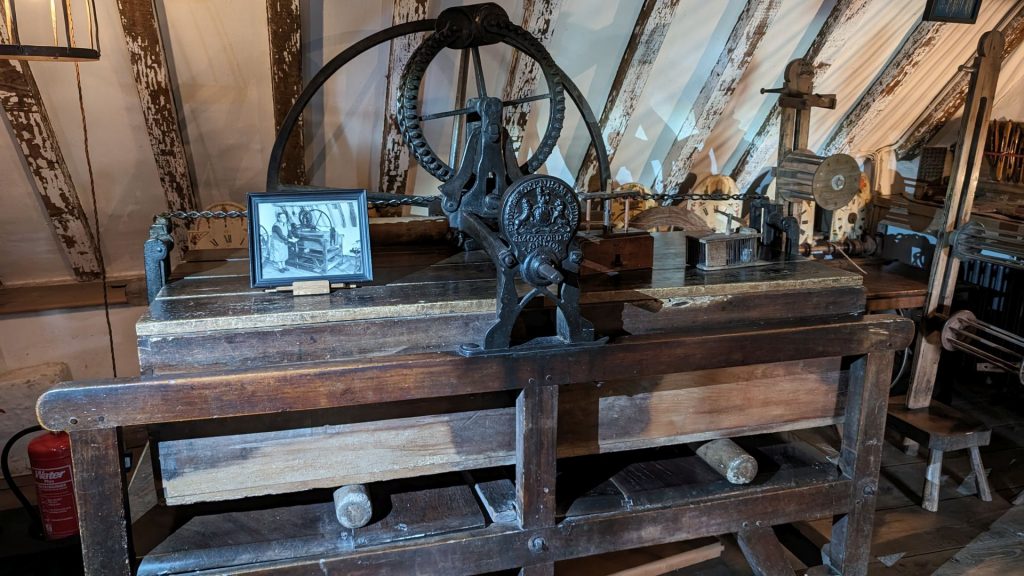
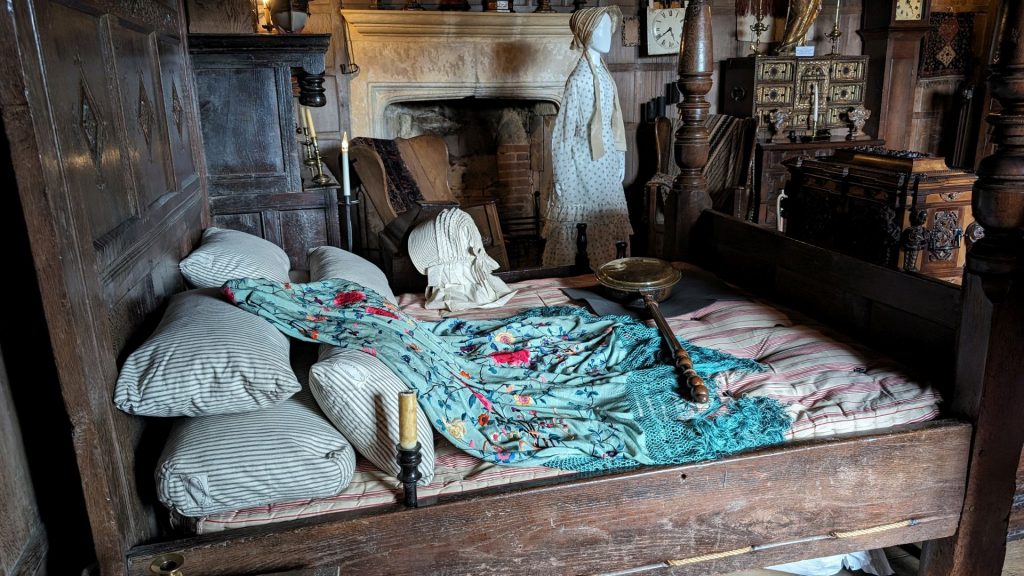
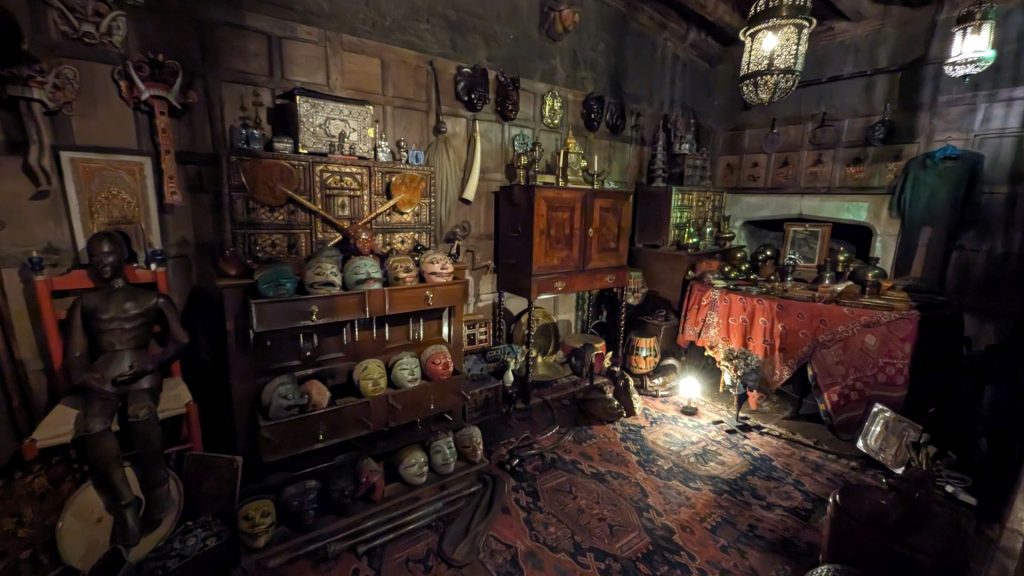
This scorpion shaped container was intended to scare children away so they wouldn’t become curious and see what was inside. (It was closed so there was a picture to show how it opened.)
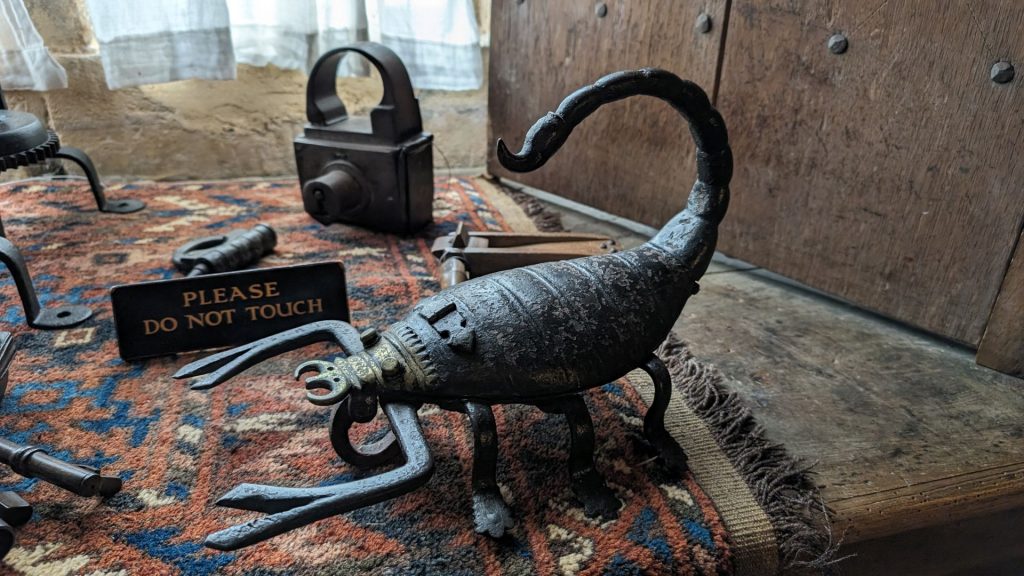
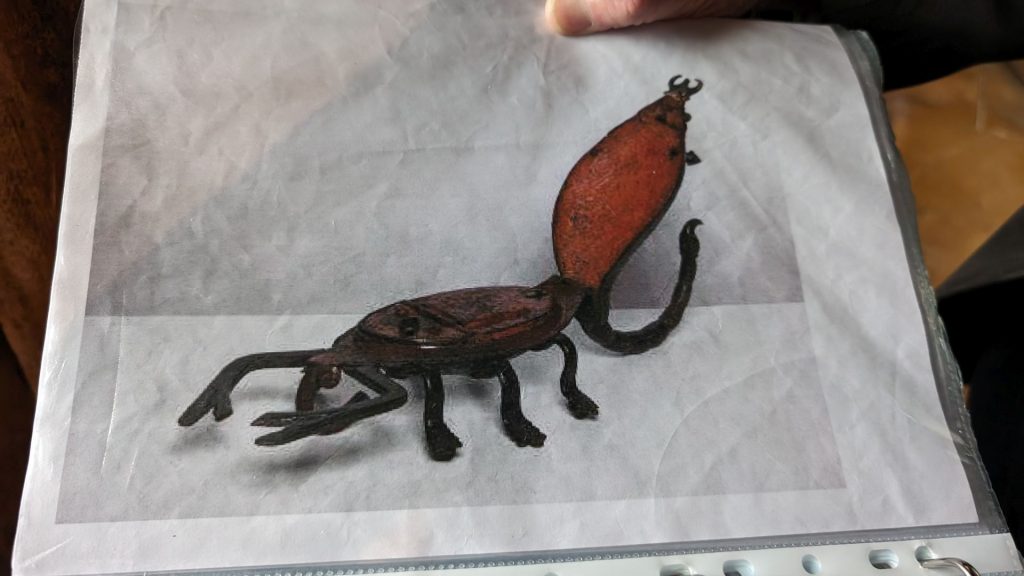
The next few pictures are of the building in which Charles lived. It is a very small building.
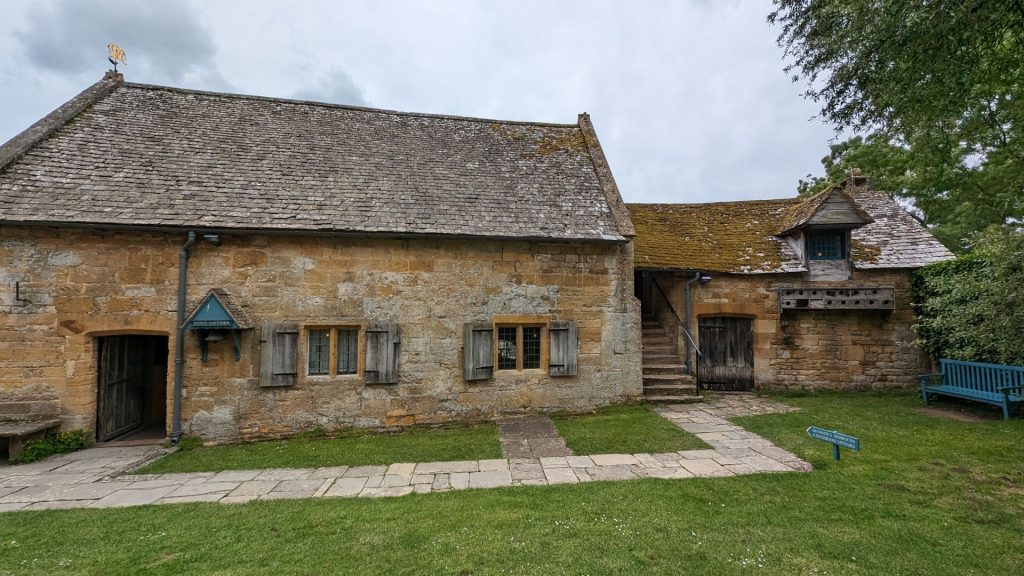
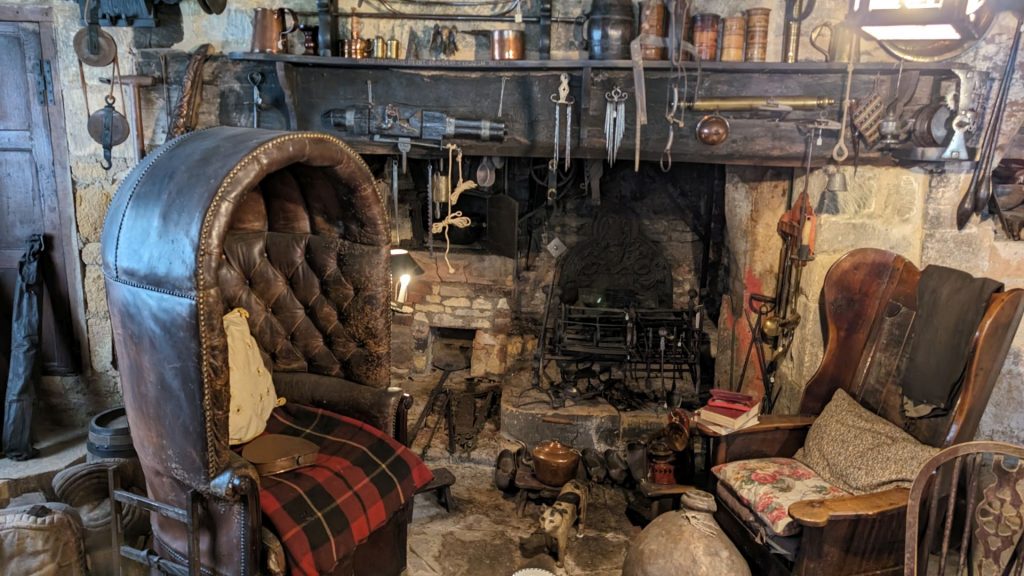
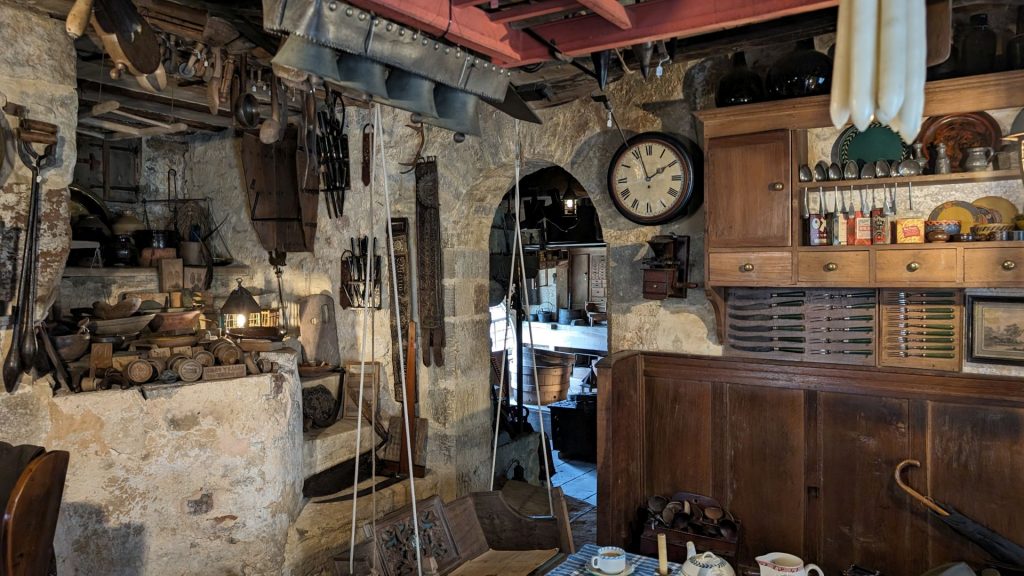
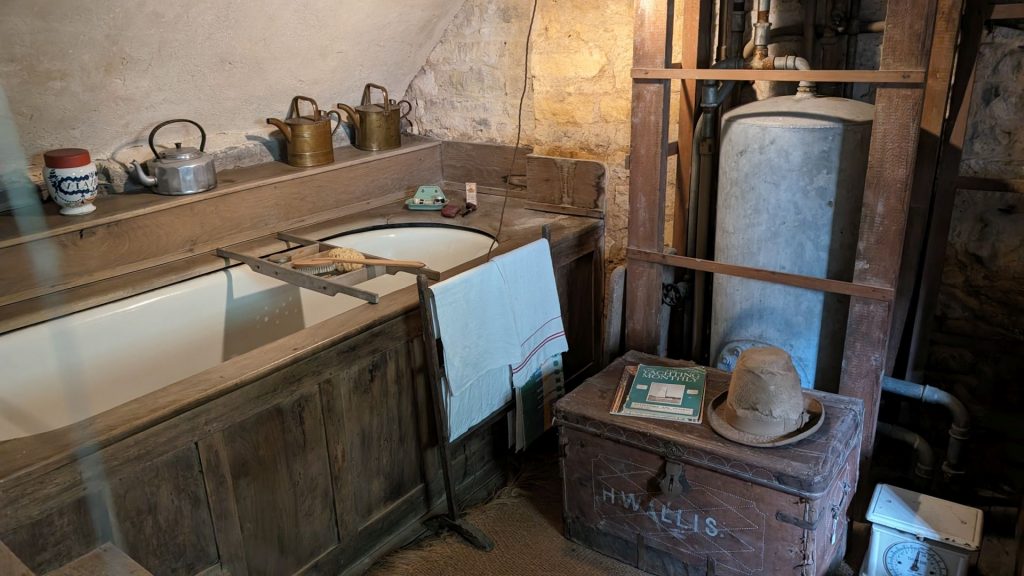
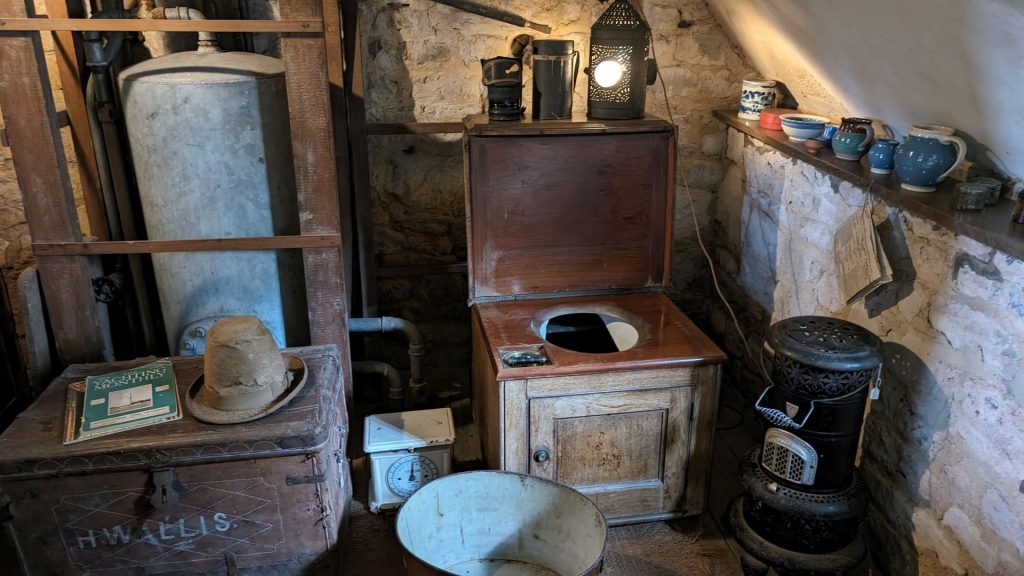
This set of stairs separated the bathroom from the rest of the house, thus affording privacy.
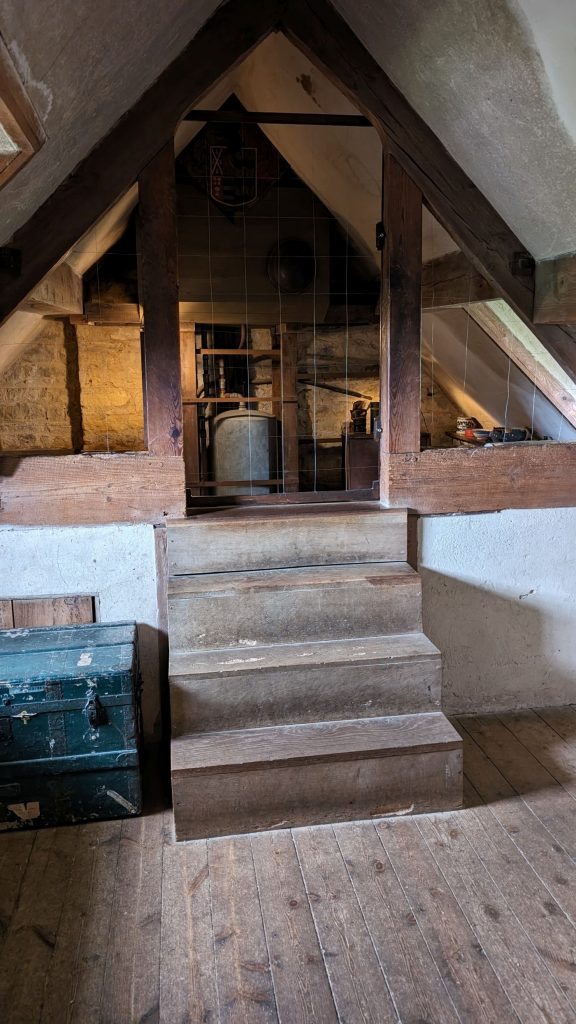
Let’s go outside and check out the beautiful gardens!
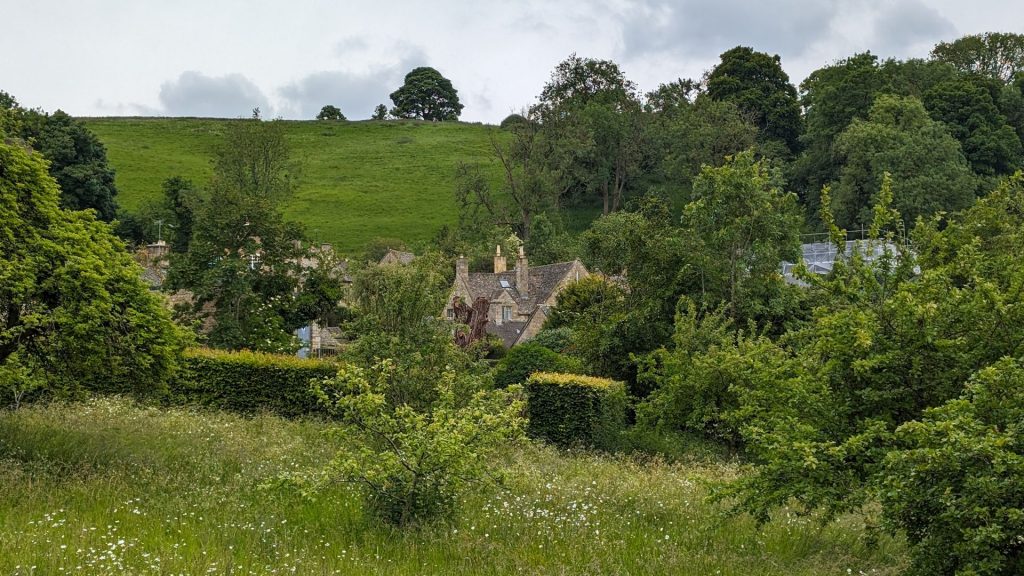
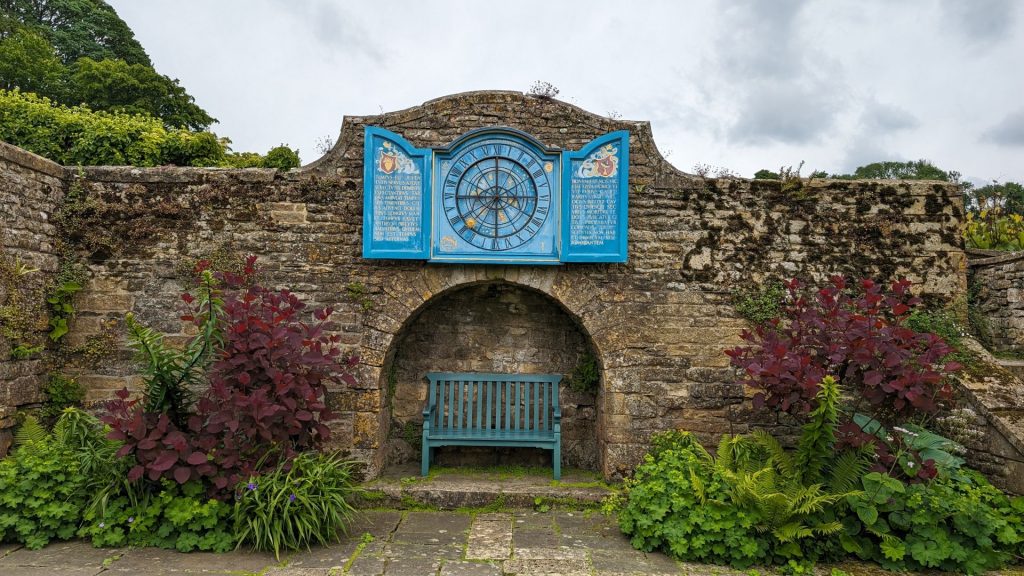
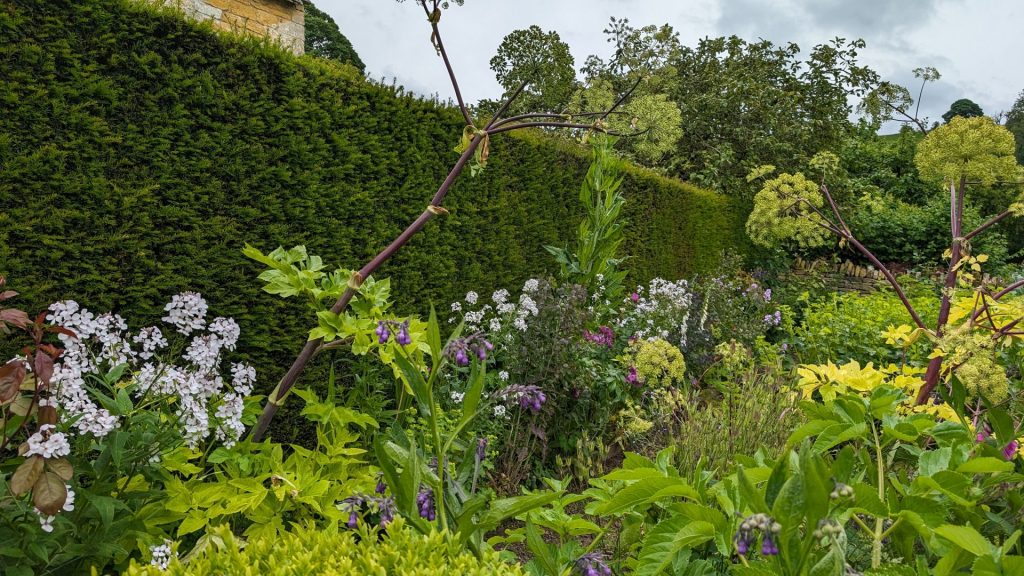
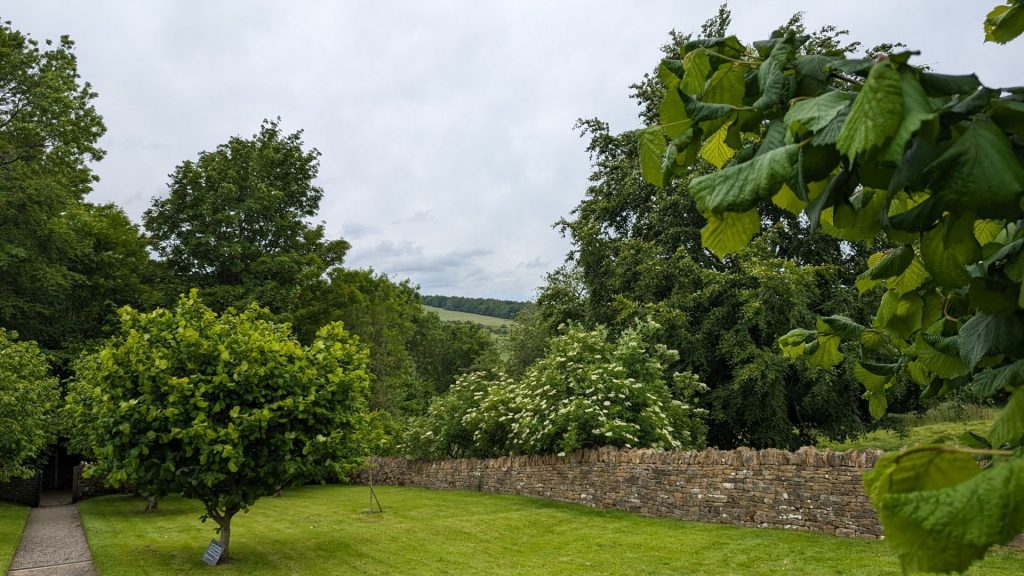
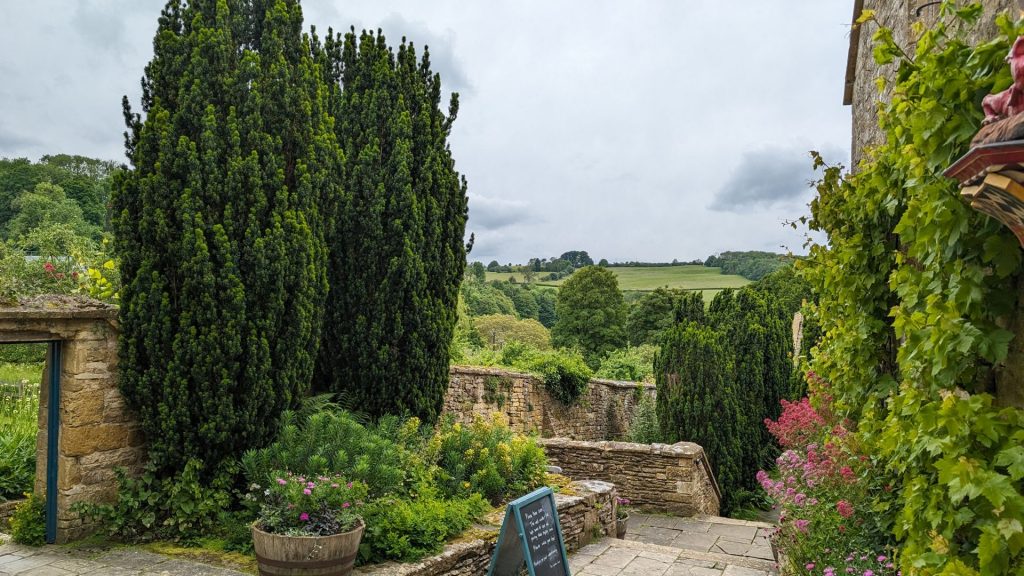
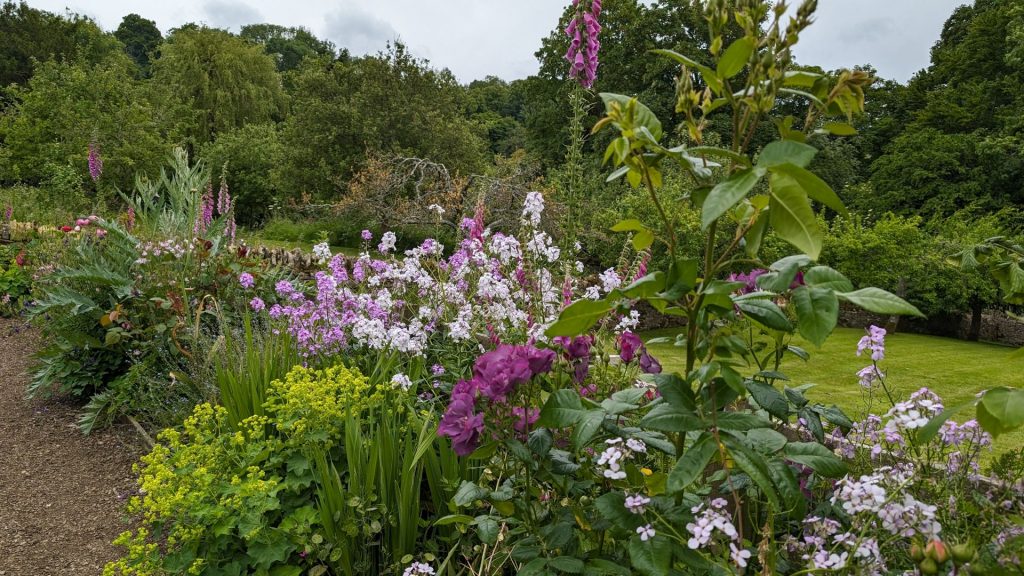
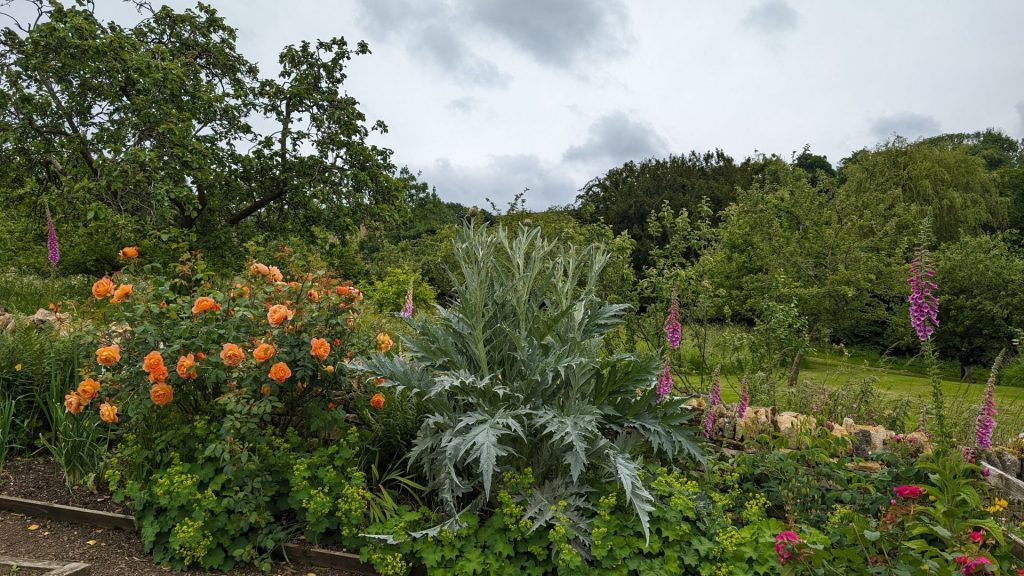
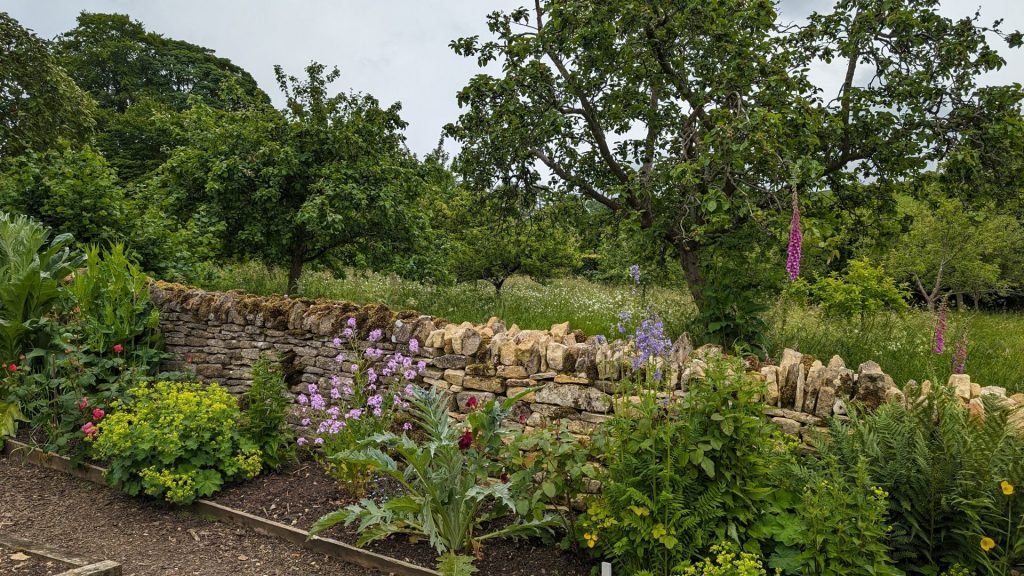
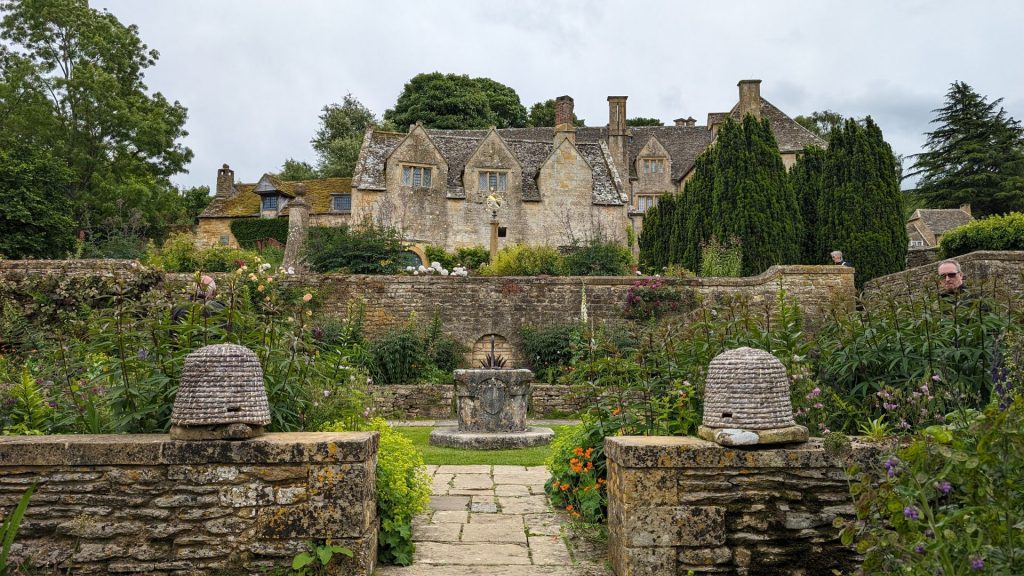
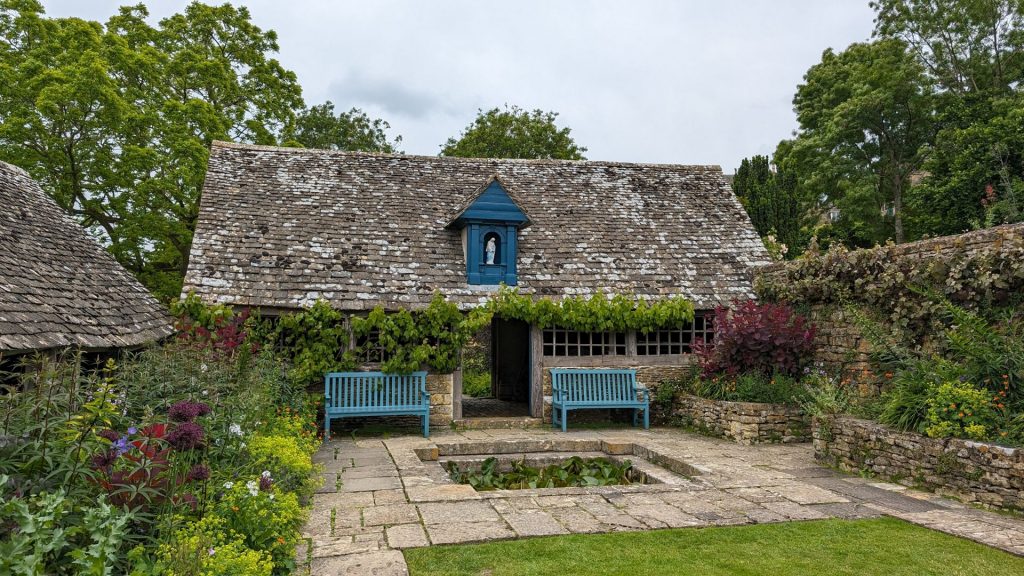
It was time to drive to Chipping Campden. This is where we saw some of the most beautiful homes, greenery, and really cool roofs! Chipping Campden has the second highest density of grade listed buildings in the country. The Cotswold-stone cottages, tearooms and shops that line the streets make this village one of the most popular spots in the district. It includes an open-walled 17th century Market Hall on the high street.
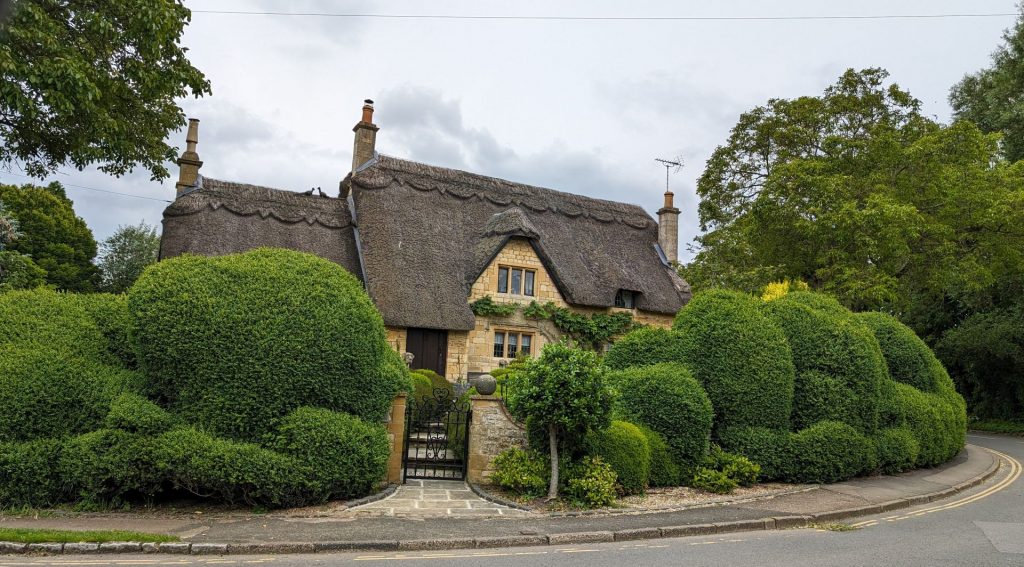
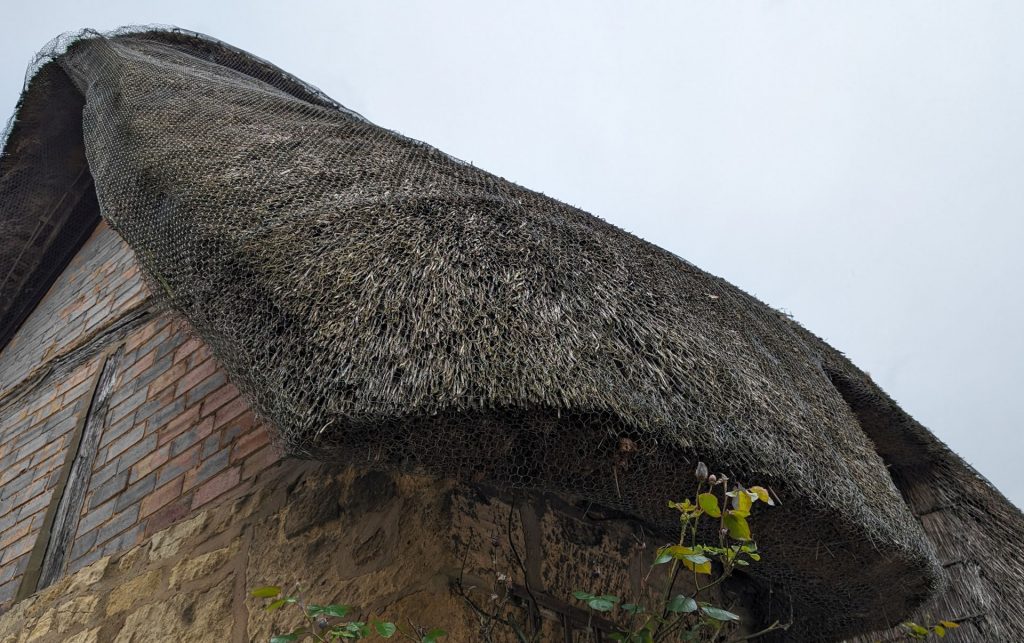
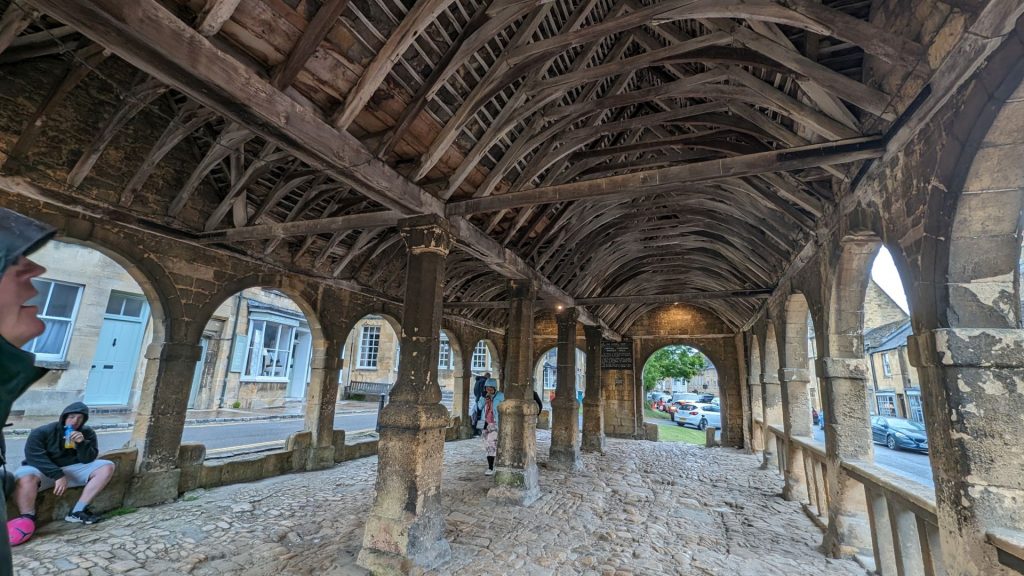
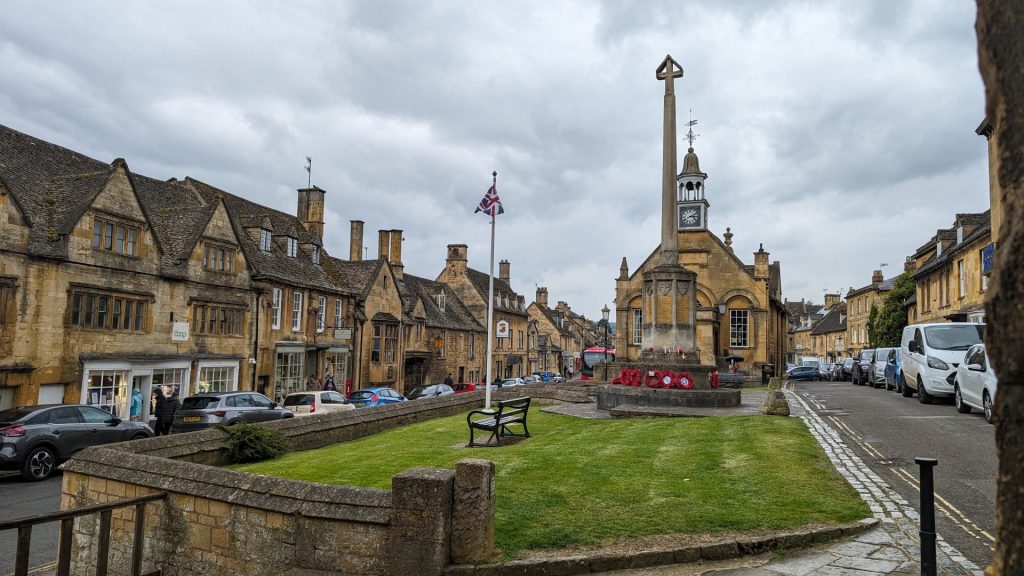
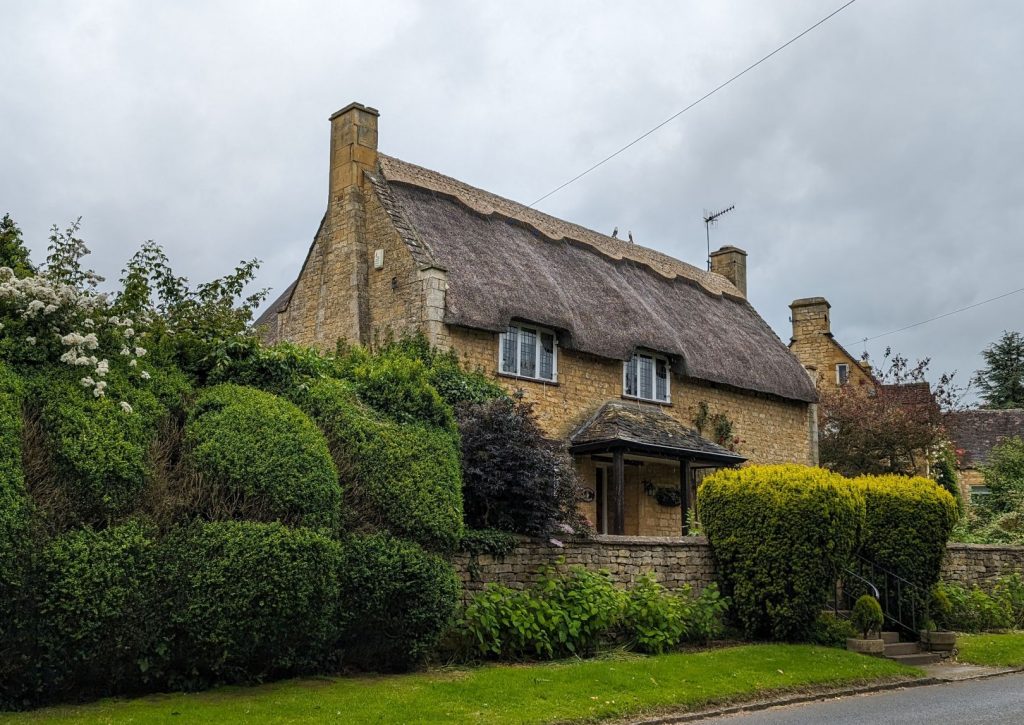
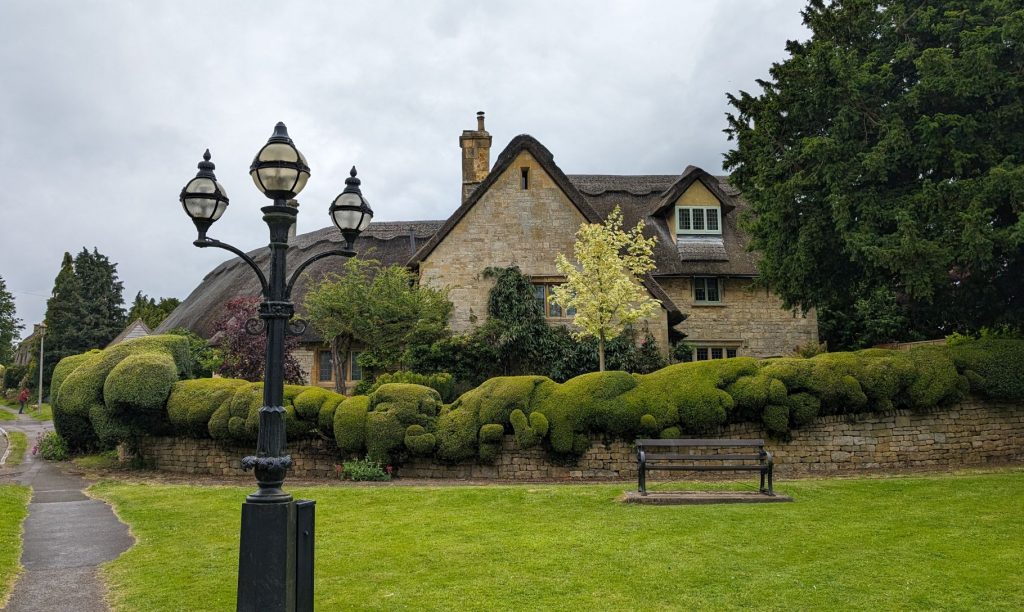
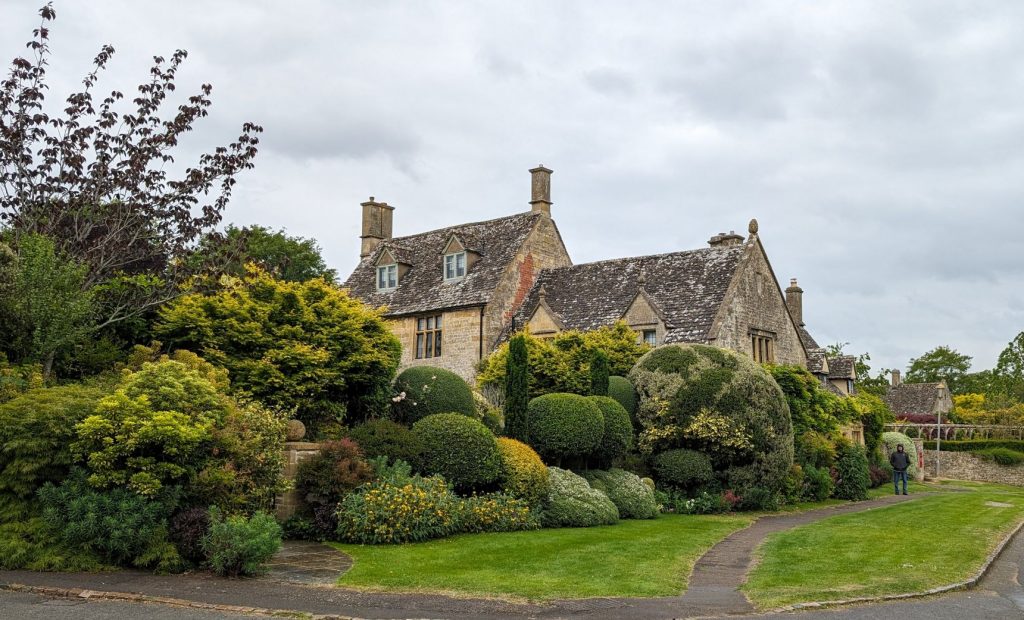
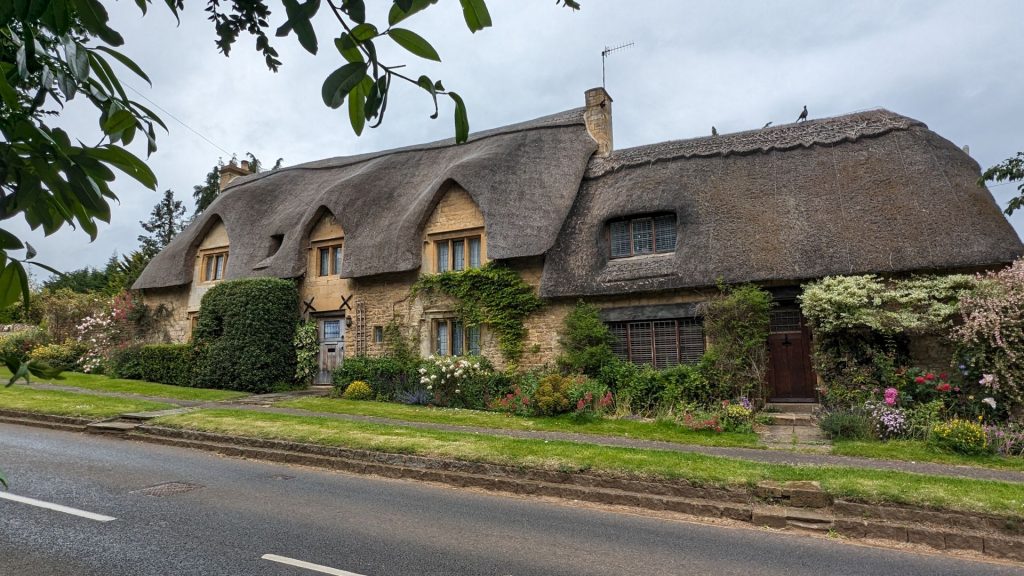
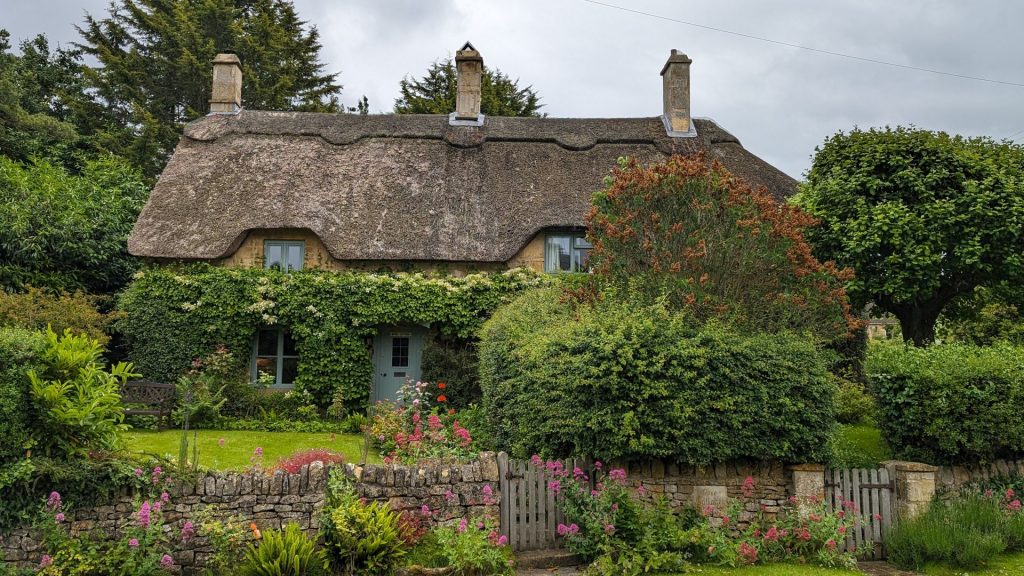
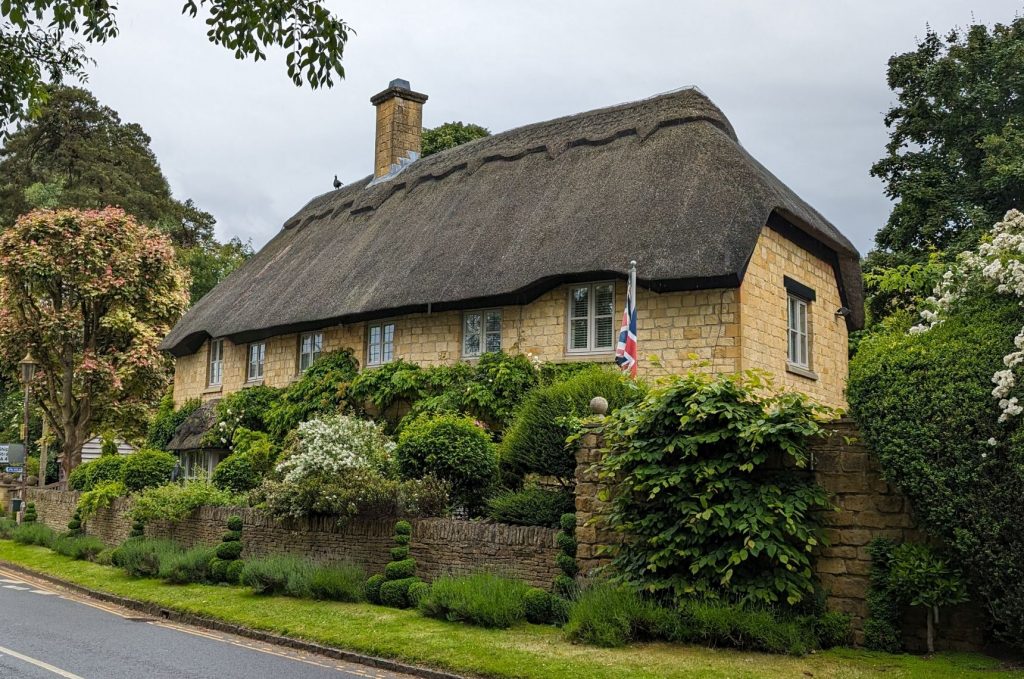
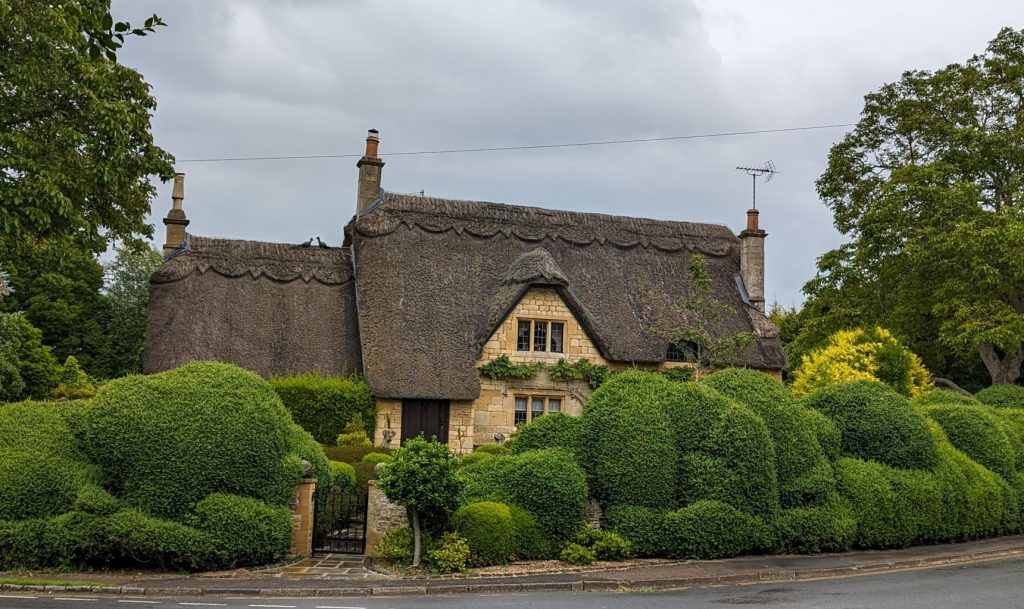
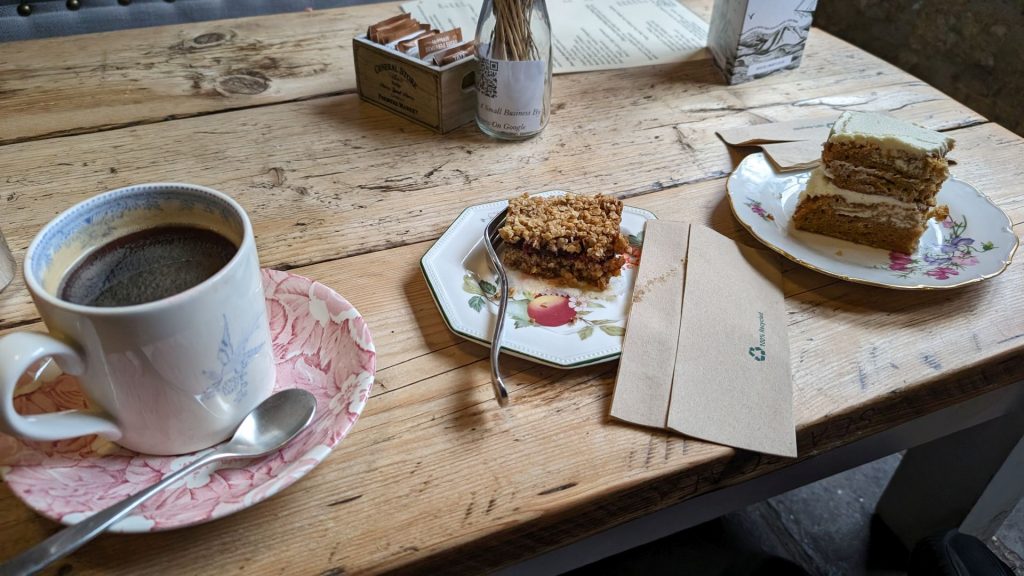
It was time to go back to the hotel. All we had to do now was decide which sign to post on the door!
